My plan yesterday was to go out and...
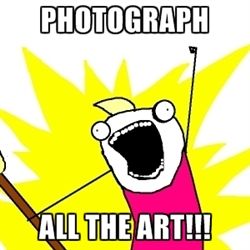
...But this turned out to be more difficult than one might imagine because there is just so
very much art in downtown Asheville. I didn't realize just how much there was, in fact, until I tried to go around and capture it all. My boyfriend and I spent about three hours walking around trying to get it all and still didn't manage to get everything. I know I missed a few things, and as a result I've even had to recycle a few pictures to show you what I know that I missed. I do hope you'll be forgiving.
By the end of it, I was experiencing art fatigue, and I've only had that happen to me once before. It occurred when I went to Seattle and spent so much time wandering around museums that if I had to go look at one more beautiful object I was going to run screaming into the street -- but that wouldn't have helped yesterday because all of this art was out on the street. There was no escape.
So very, very much
art.
• Video Link
We couldn't park downtown because of a giant craft show going on at the civic center, plus hordes of tourists out enjoying the pleasant fall weather. We had to park in Montford, north of downtown and walk in.
This mural decorates the side of an old Piggly Wiggly grocery store that now houses a convenience store and a couple of restaurants.
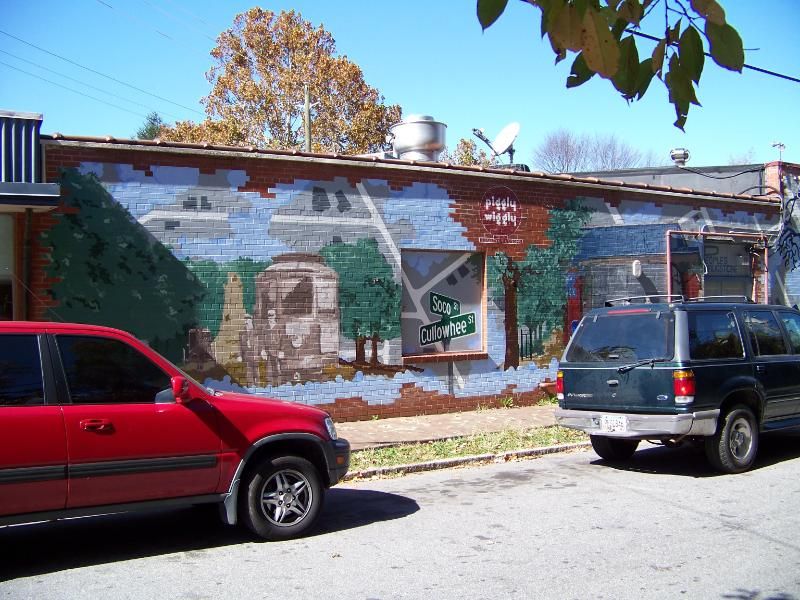
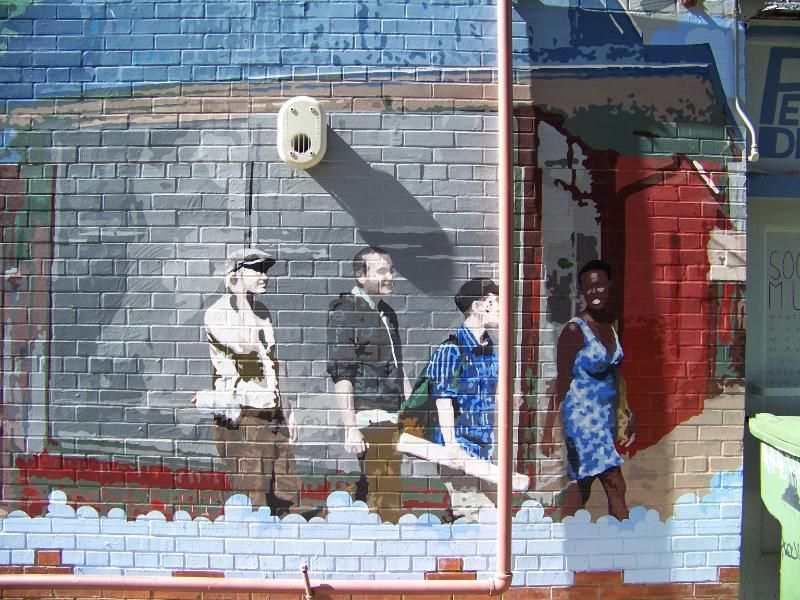
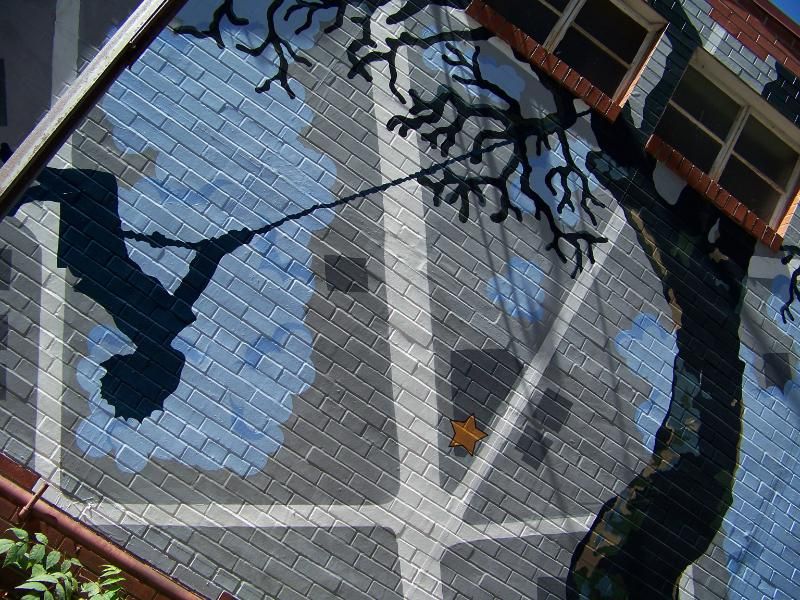
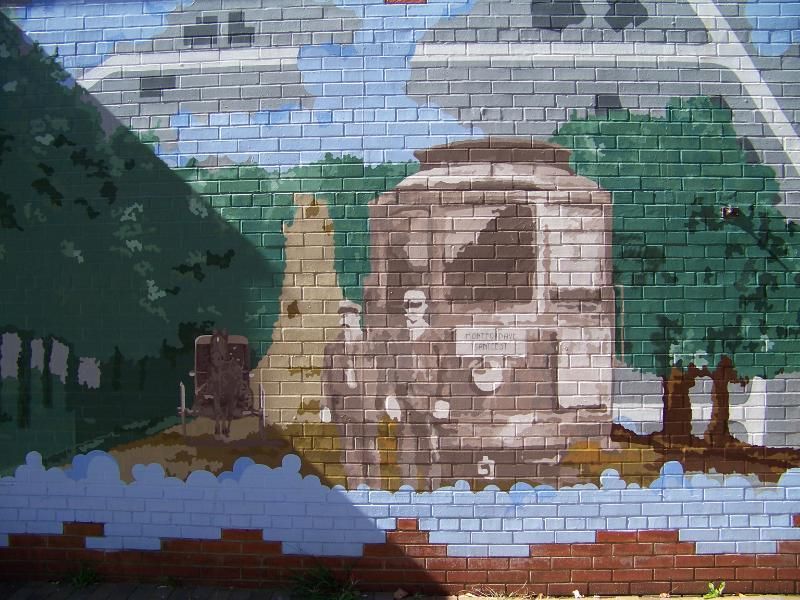
Just across I-240 from downtown, this mural adorns the side of a clothing and sporting goods store.

Meanwhile, downtown, the gardens in front of the Basilica of St. Lawrence are lovely in any season. We couldn't go inside the church because a wedding was going on, and that was a shame. The basilica is arguably Asheville's grandest church and is absolutely filled with art -- including German stained glass windows, a 17th Century altarpiece purchased from a Spanish cathedral, paintings from the 1700's, and statues and tilework from the 1300's.
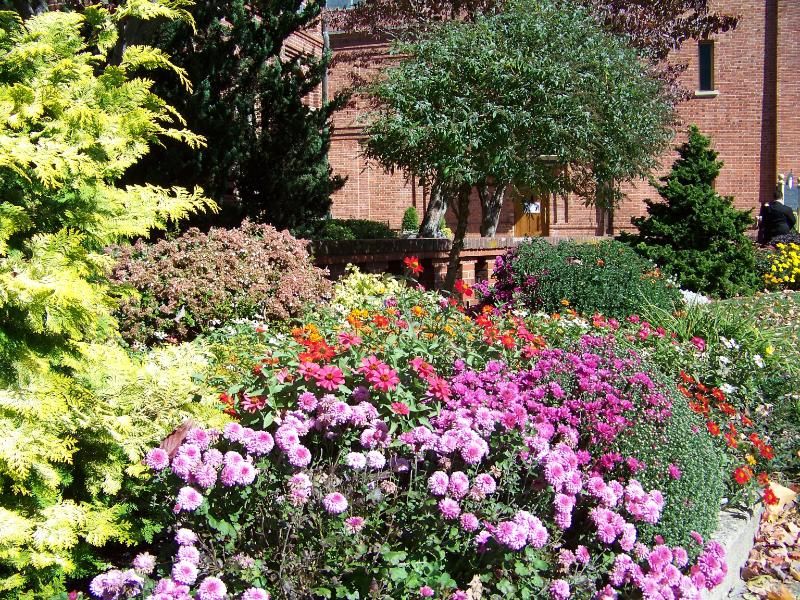
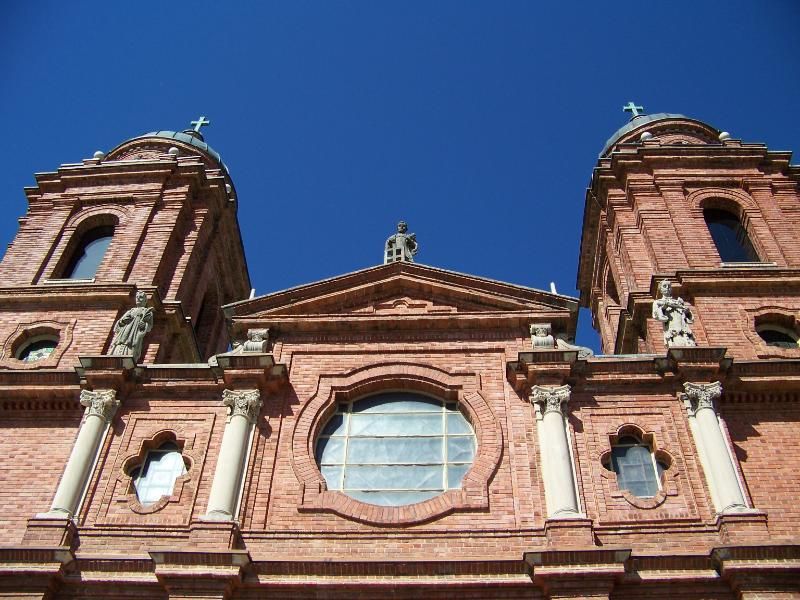
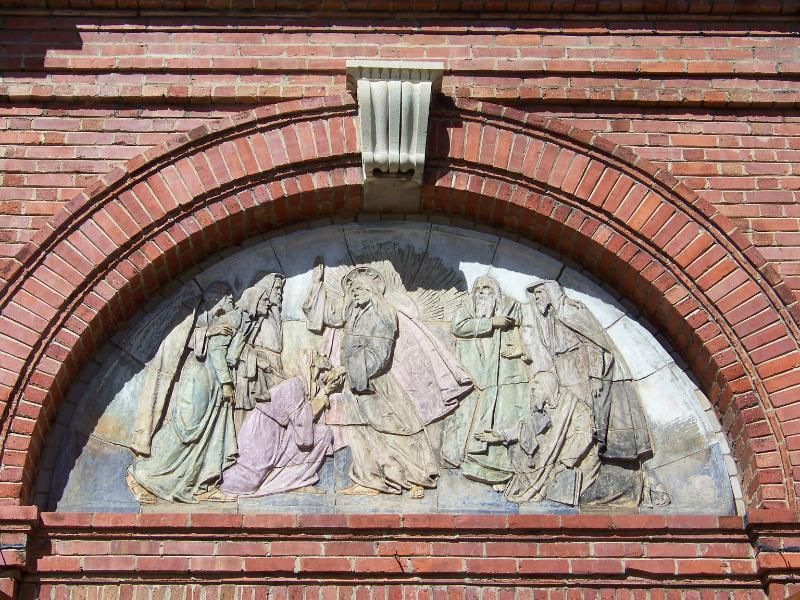
Here are a couple of old photos I've taken in the church to give you an idea of what sorts of lovely things lurk inside.
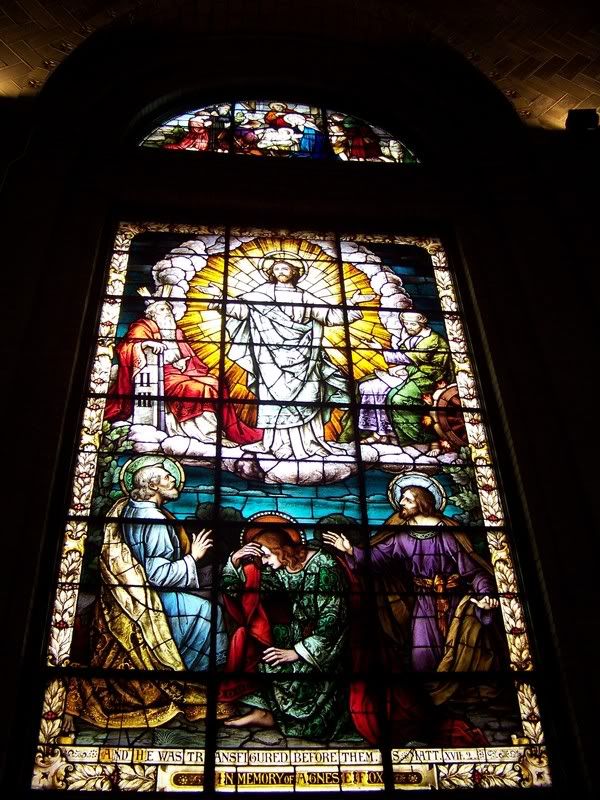

Out behind the church stands a monument to aborted children.
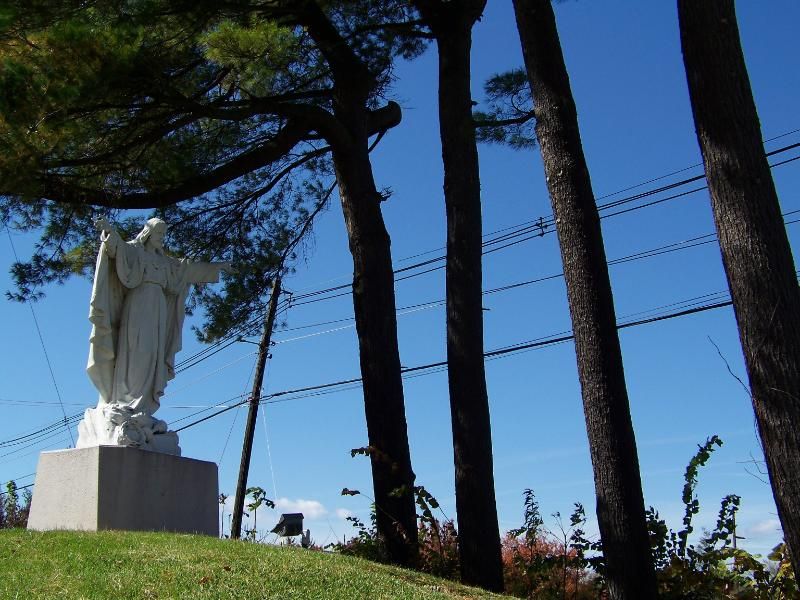
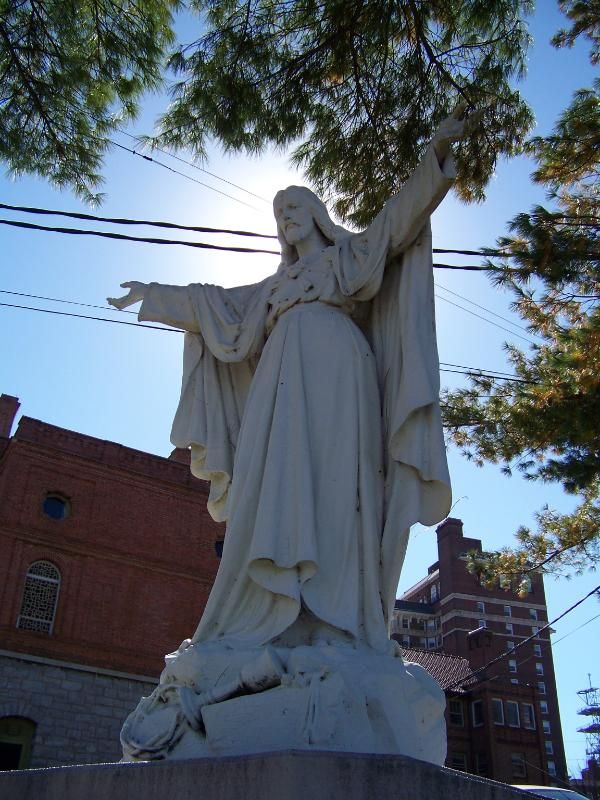
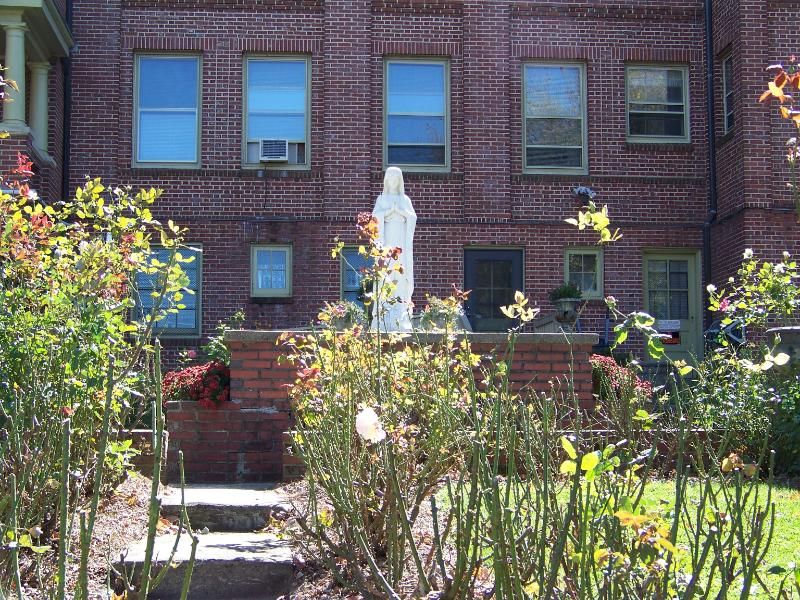
En route to downtown, this tile is set into the sidewalk in front of the Kress Building. Tiles just like this decorate the building. Asheville's architecture is one of its best features, and in recognition of that fact there are several works of art downtown that either echo or draw attention to various architectural features.
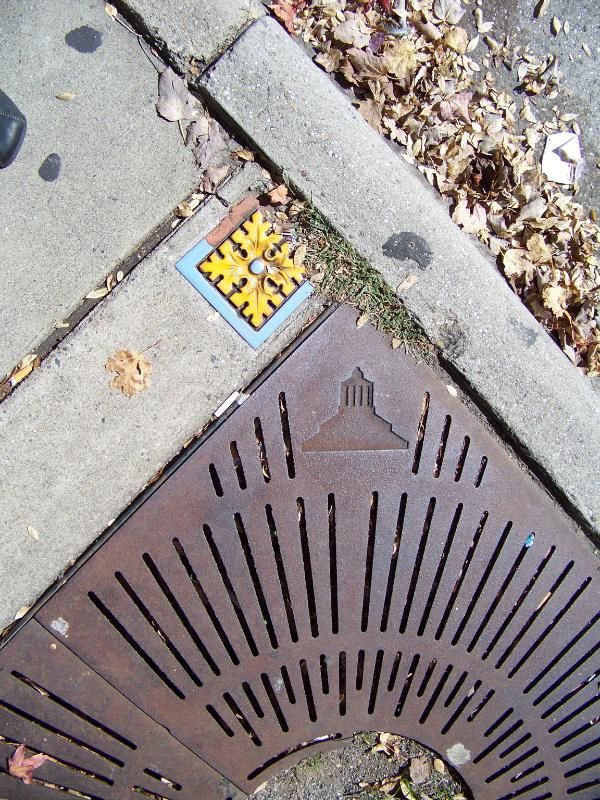
That's Pack Square up there. It's where Asheville was founded at the crossing of two Indian trading paths, and it's where the beating heart of the city has been located ever since. One of Pack Square's most noteworthy features is the Vance Monument obelisk, which honors the Civil War-era governor of North Carolina. Zebulon Baird Vance was born near Asheville and went on to distinguish himself as, strangely, both a virulent racist and a staunch advocate of tolerance for Jews.
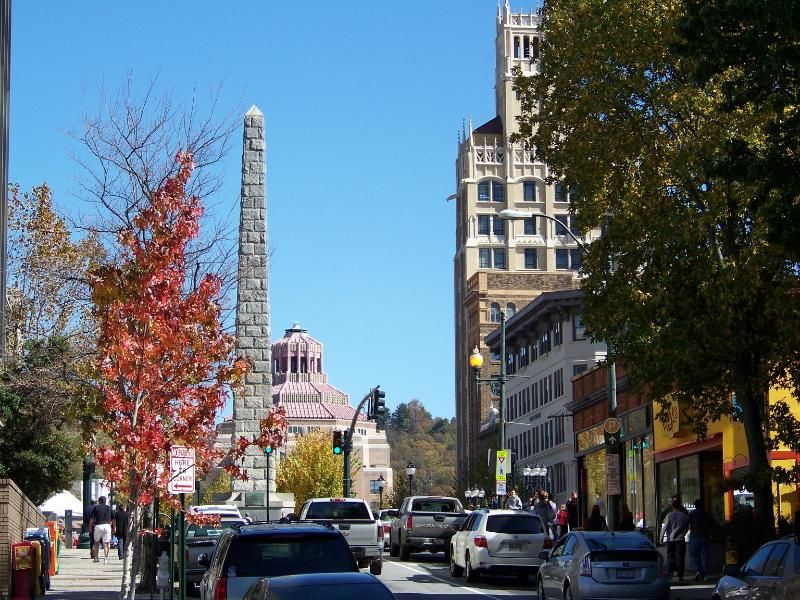
This restaurant features some art on its windows in this picture I took back in June.

An artwork depicts a bit of Asheville history. As the physical heart of town, people have always passed back and forth through Pack Square. In the town's early years, drovers also used to drive enormous herds of animals, including pigs and turkeys, through the square.
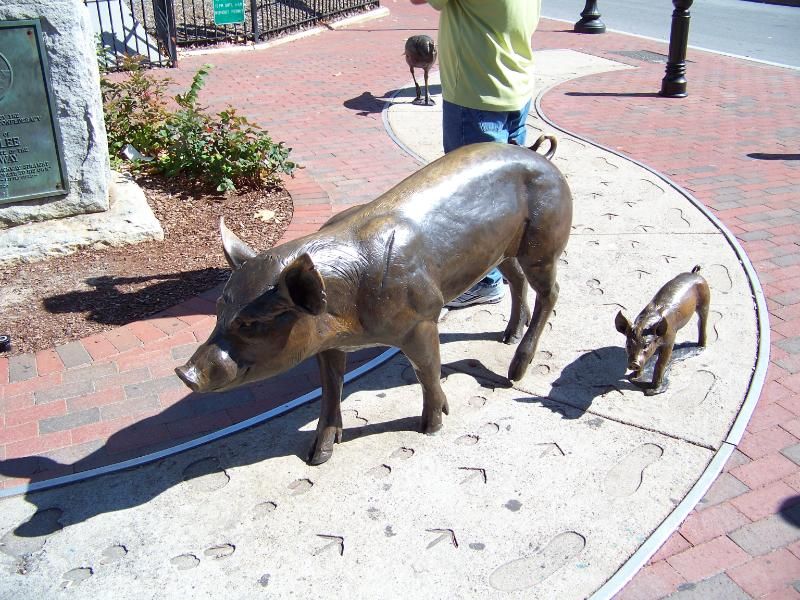

An artwork decorates the outside of the Asheville Art Museum.

This staid memorial to author Thomas Wolfe was commissioned in retaliation of the city's first purchase of a piece of public art back in the 80's. The city bought a piece of modern art and a group of citizens found it distasteful. They commissioned this angel, a very bad copy of the marble angel that inspired the title of one of Wolfe's most famous books, as a counterpoint to the modern art.
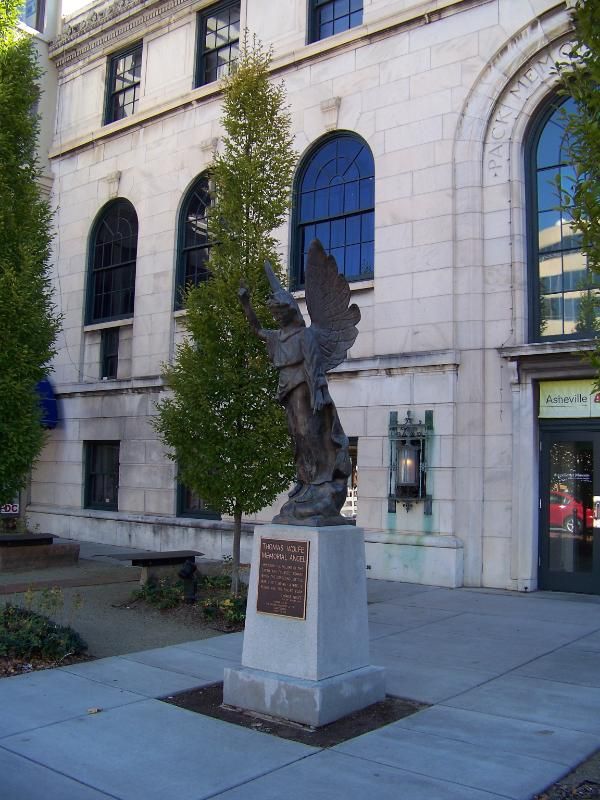
A better view of the Vance Monument.

In Asheville you may experience art in many different ways. Here at the art museum you may pay to view it.
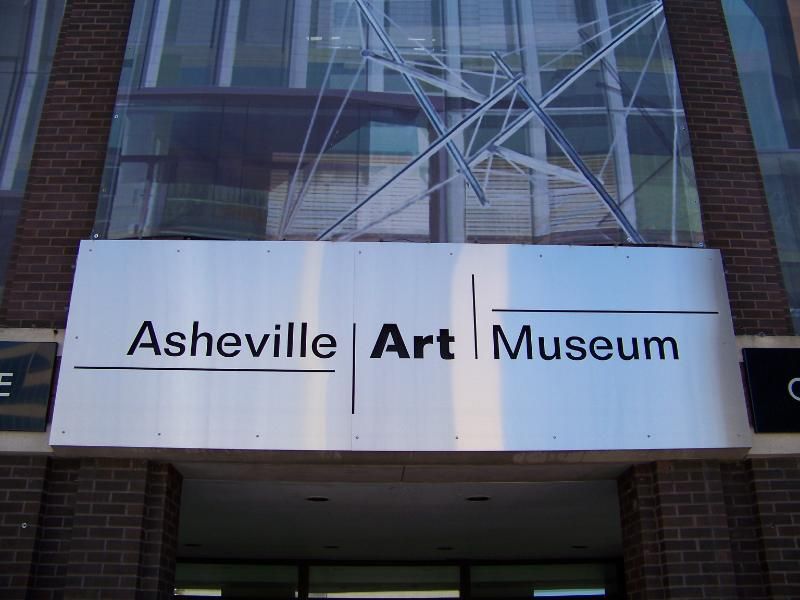
Away from the square, this bronze top hat, cane, and gloves mark the site where the opera house used to stand. It's a parking lot now.
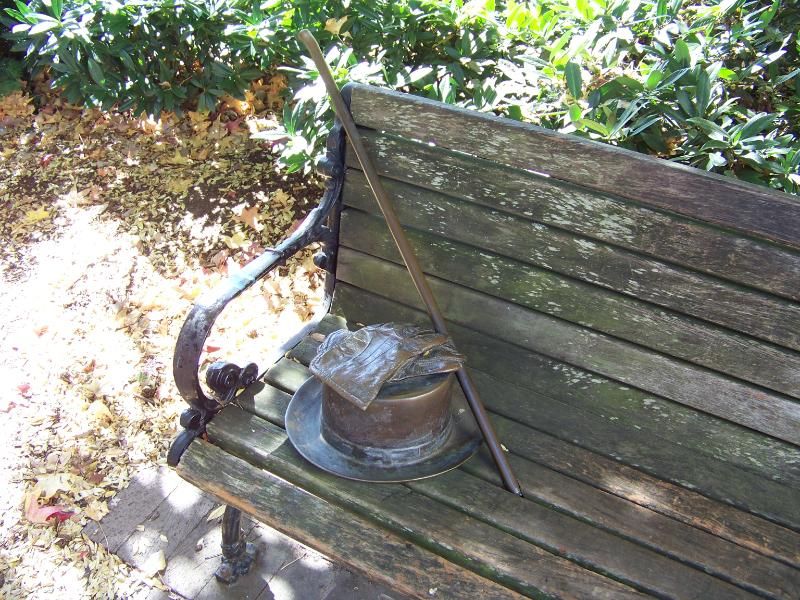
So many buildings are so richly adorned.
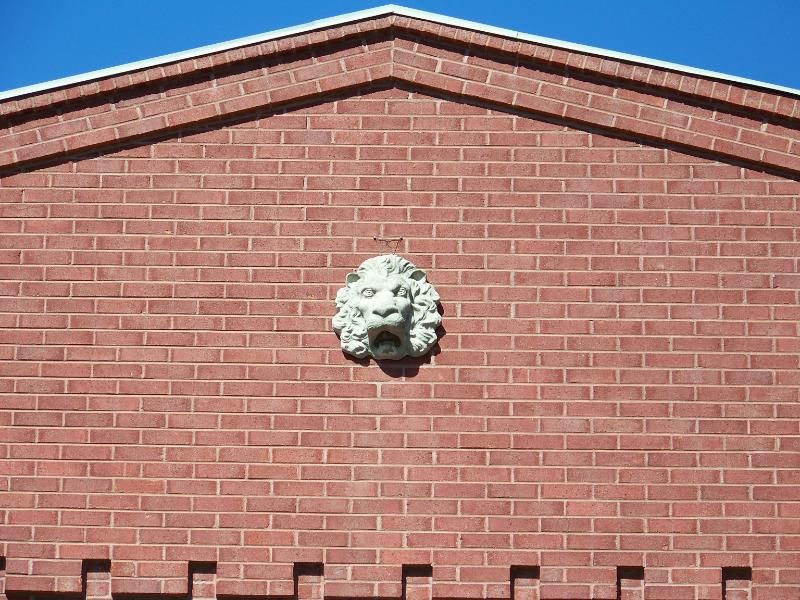
This artwork honors short story writer William Porter (alias O. Henry) who lived and worked in Asheville for a time. Porter is buried here.
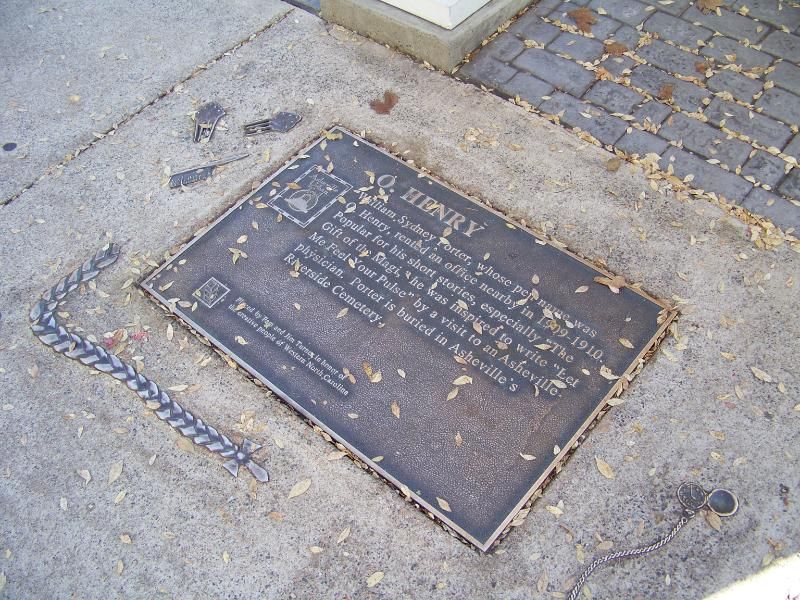
Down on Church Street, the churches boast peaceful courtyards, some with fountains.
This is the remembrance garden at Central United Methodist.
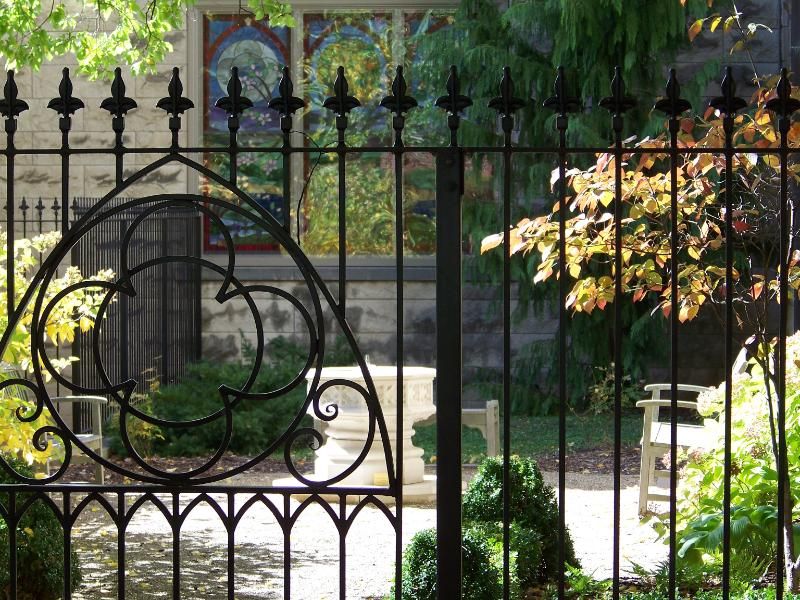
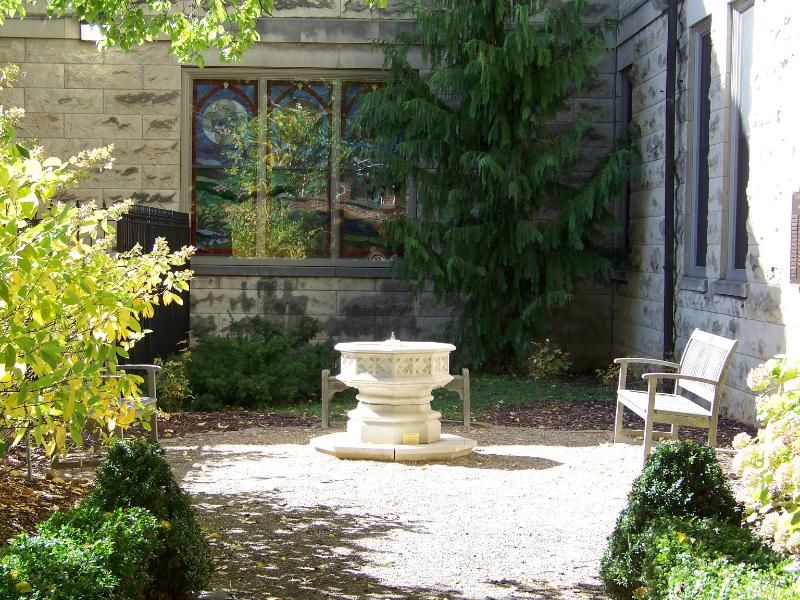
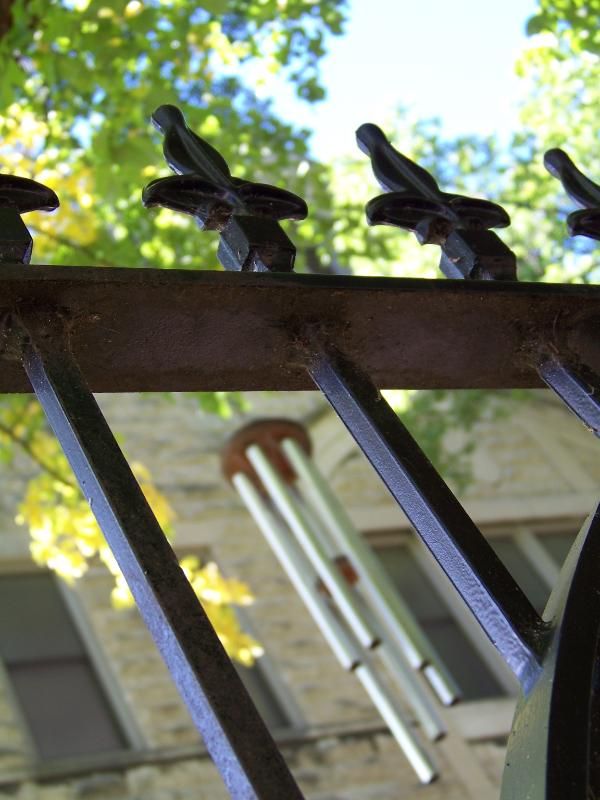
First Presbyterian sprouts strange flowers.

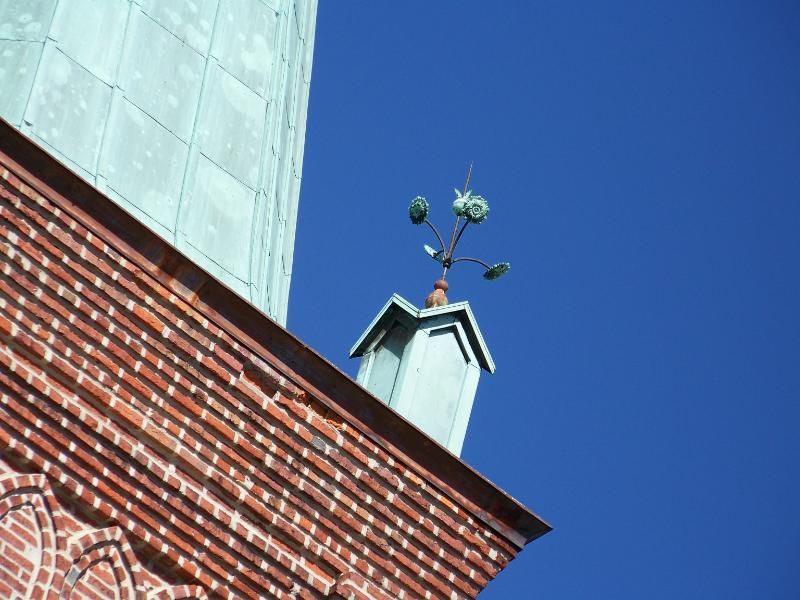
And a remembrance garden of its own.
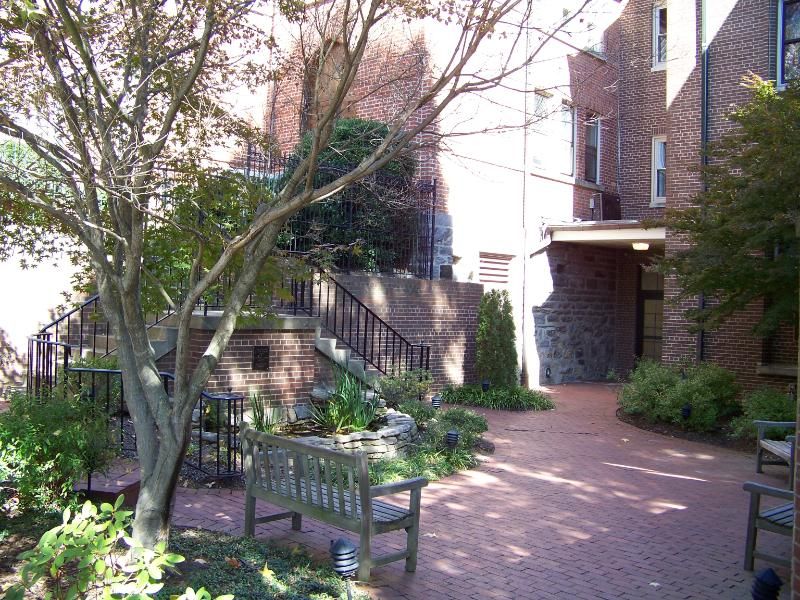
A lovely gate at Grace Episcopal, which also boasts some significant stained glass windows. What makes them significant is that they were created by Mary Tillinghast, a female contemporary of Louis Comfort Tiffany.
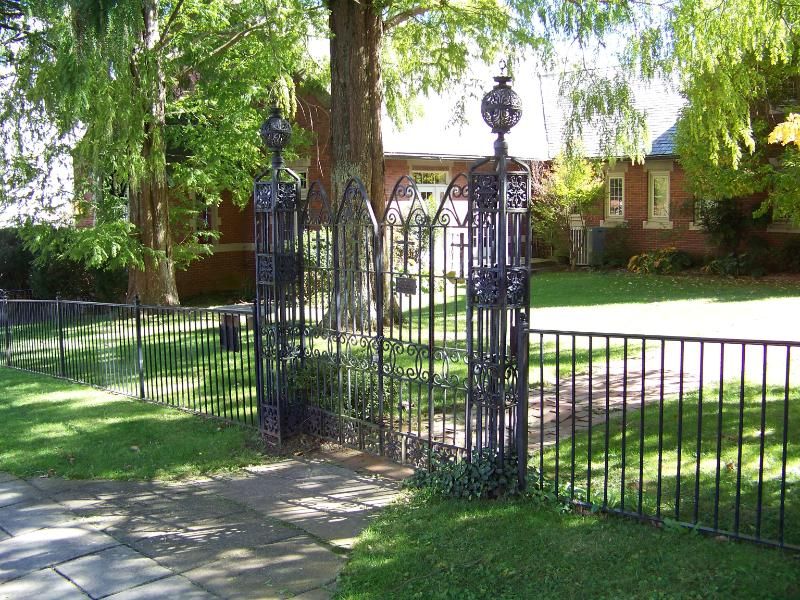

A mural decorates the side of the Craggie Brewing Company.
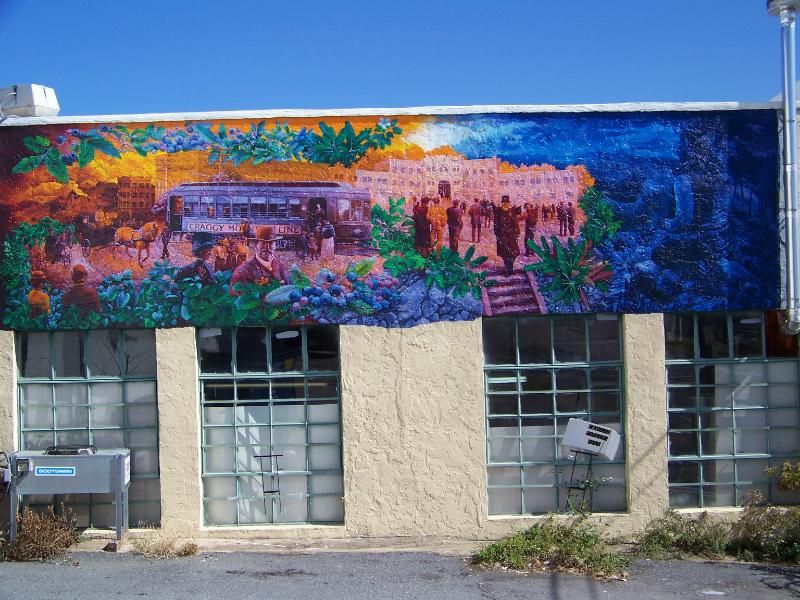
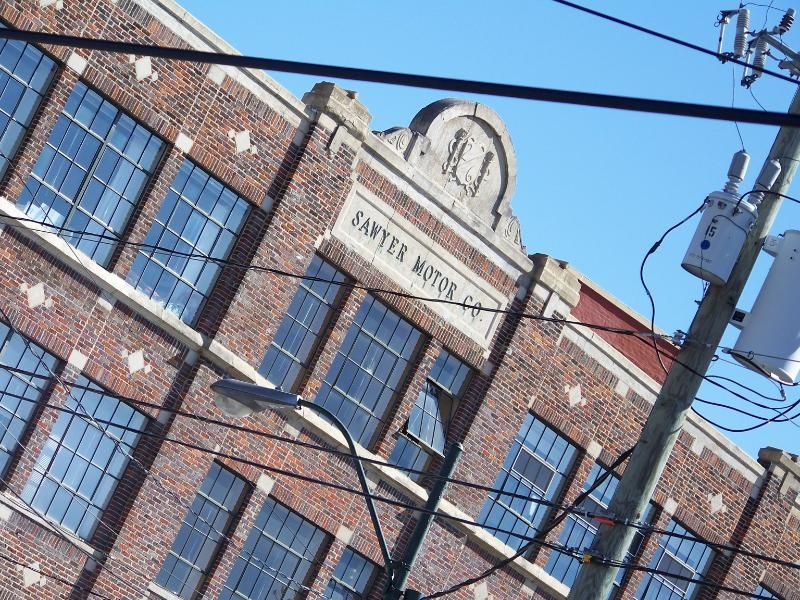
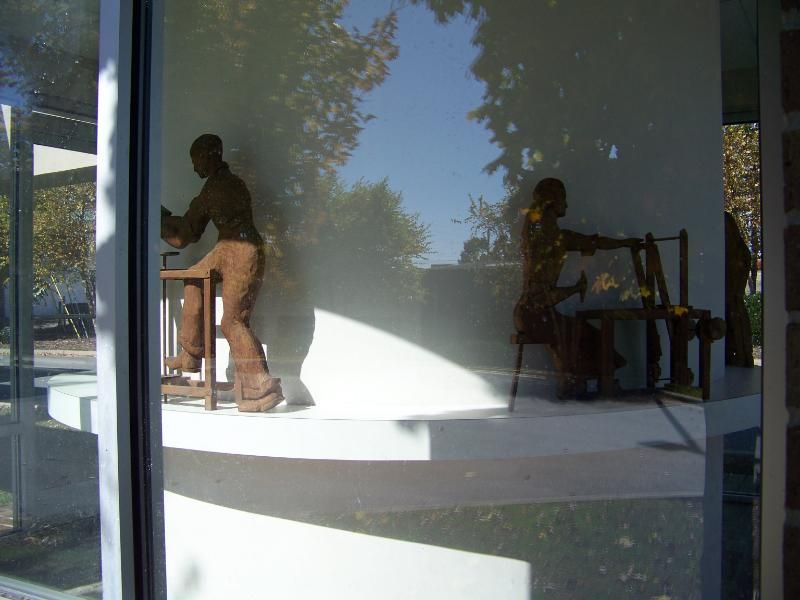
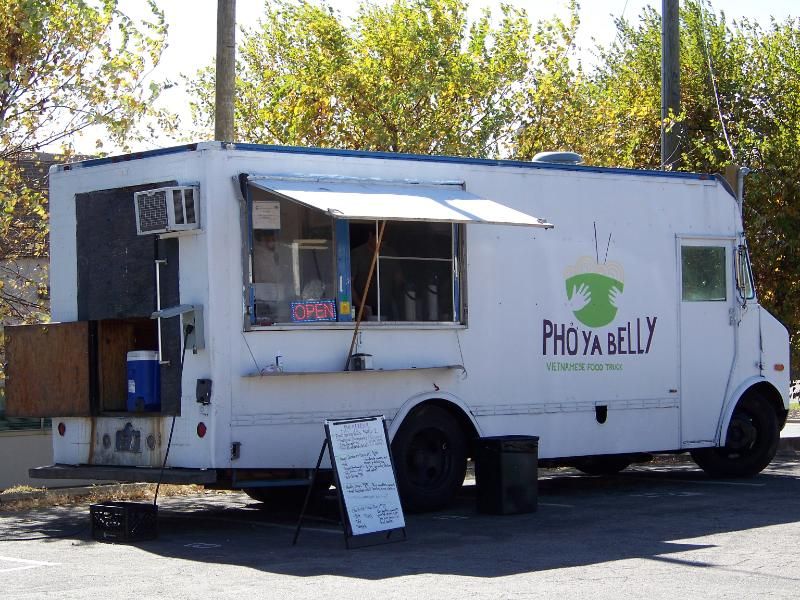
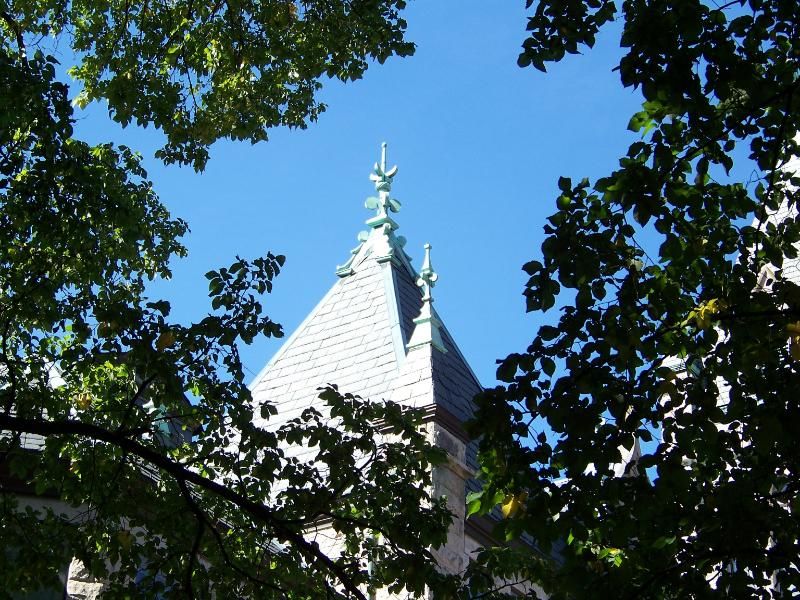
Ornate stonework on the Drhumor Building.
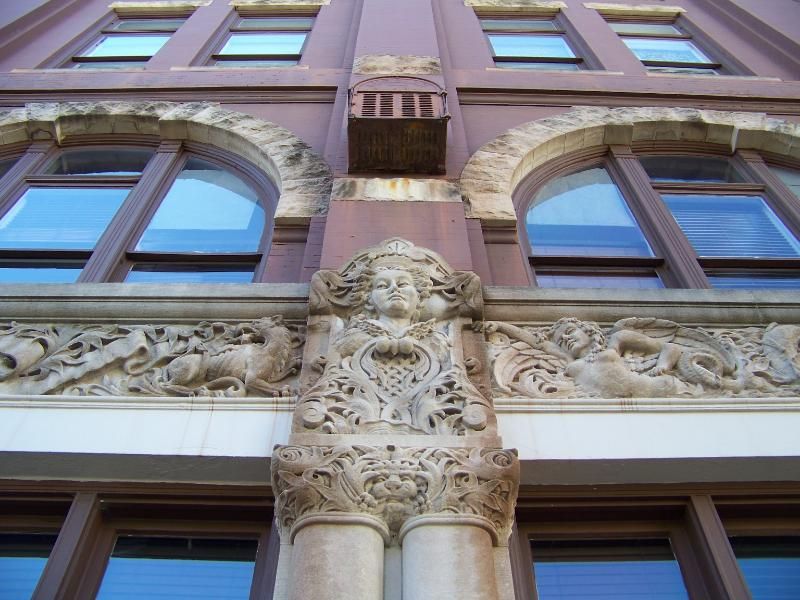
The artist who created these lovely carvings had a sense of humor. That face up there is a depiction of a florist who had a shop across the street, who liked to stand in this doorway and watch the stone carver at work.
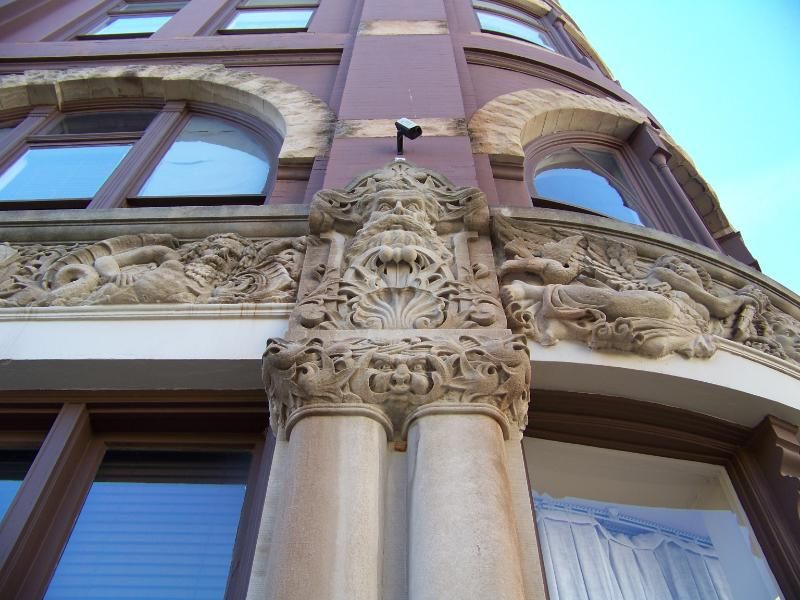
The monument to Dr. Elizabeth Blackwell, the first woman awarded a medical degree in the United States, who began her medical studies while working as a music teacher in Asheville.
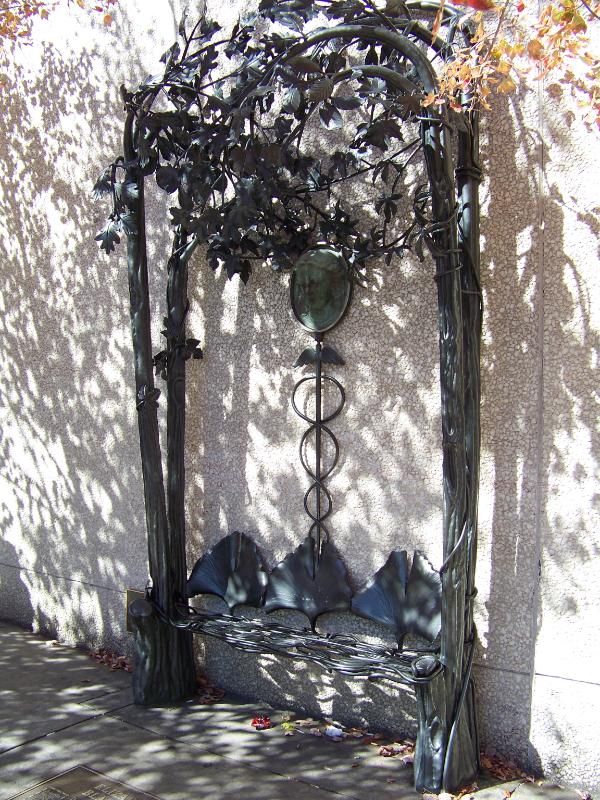
This artwork draws attention to a nearby Art Deco masterpiece.

This is the Art Deco masterpiece to which the artwork draws attention.

A market was set up in Pritchard Park. What could you buy there? Art -- what a surprise!

This artwork stands on the other side of the park, and is a modernistic portrayal of some of the Art Deco decorations on nearby buildings. I took this picture in November a couple of years ago.

You may listen to art, if you wish...
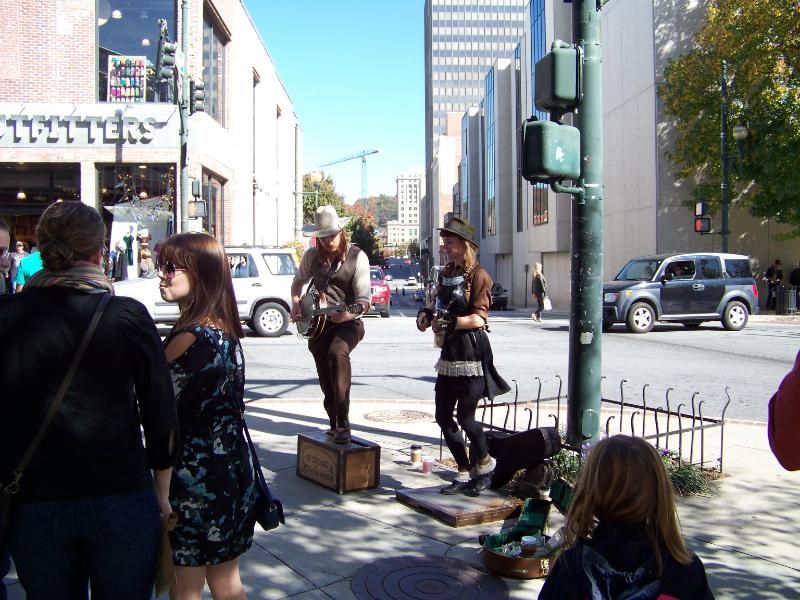
This large flatiron draws attention to two things: the Flat Iron Building at whose base it stands, and the old flatirons used in the Asheville Laundry that once stood nearby. The iron is very popular with buskers.

A pottery shop on Wall Street boasts a very artistic awning.
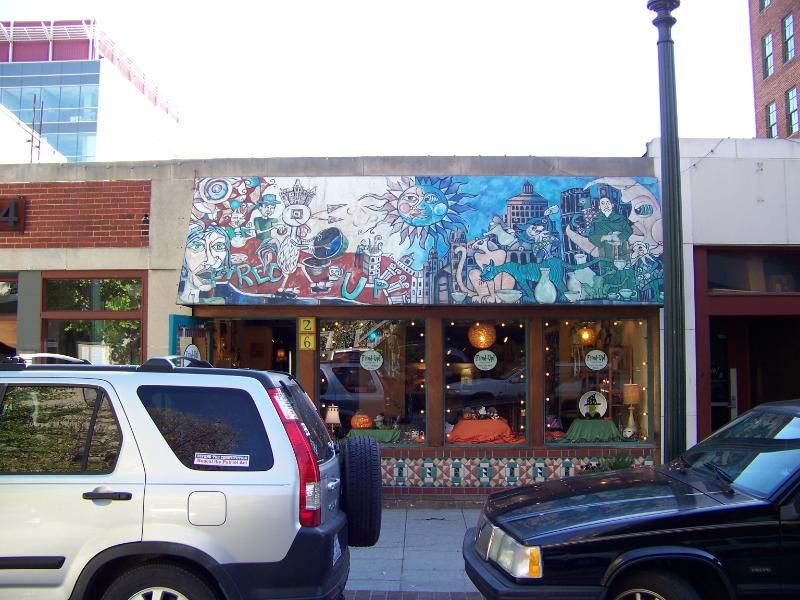
One of the winged rams atop the Public Service Building.
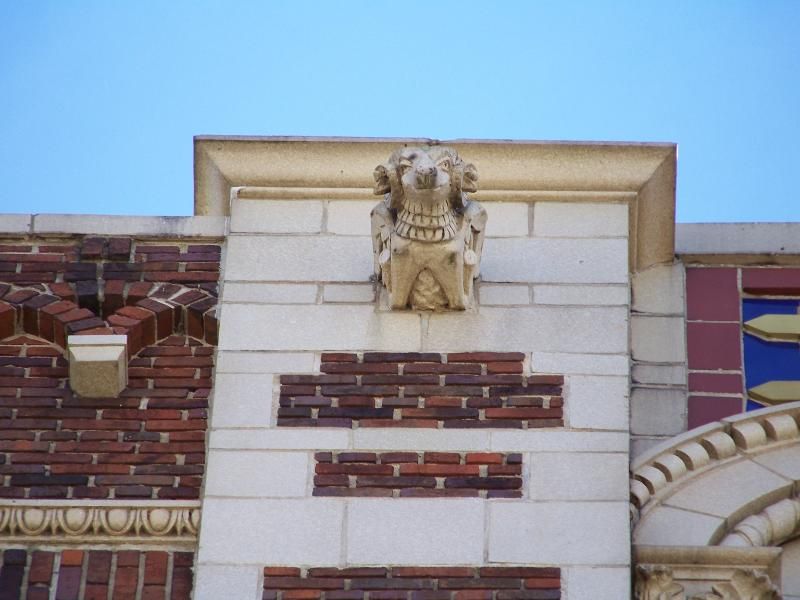
A caravan compels you to buy beads.
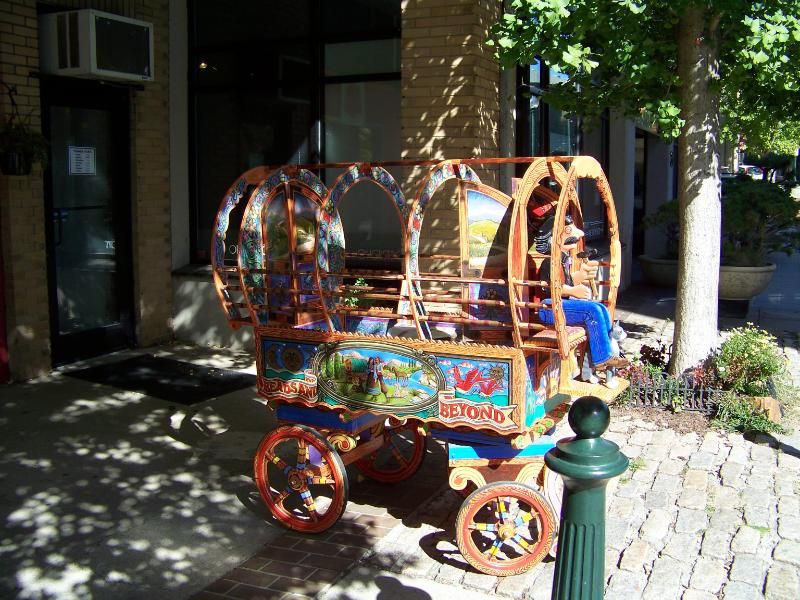
More buskers...
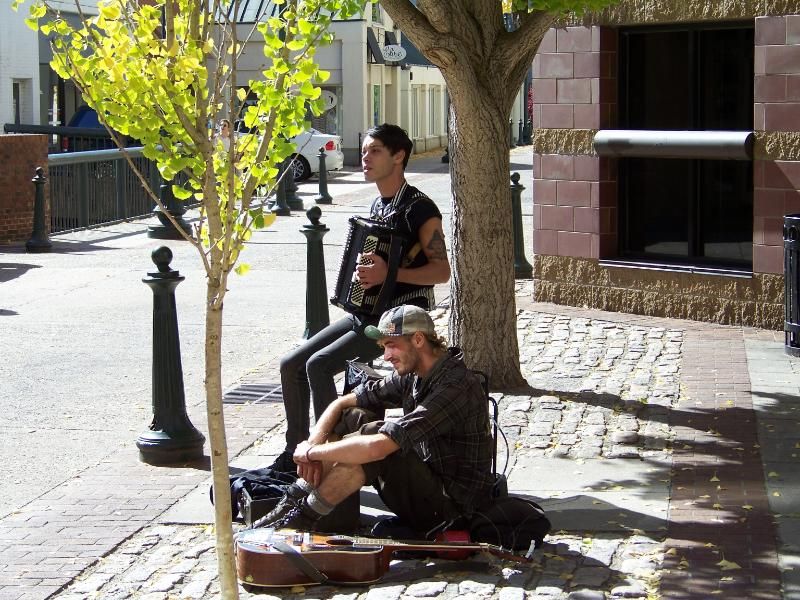
A sculpture group makes note of another quirk of Asheville history. Wall Street takes its name from the wall built to hold back Battery Hill, and catwalks once connected the first floors of buildings on side of the hill to the second floors of buildings built at the base of the hill. Eventually, the gap between the two was filled in and Wall Street was born.
Catwalks, hence "Cat Walk."
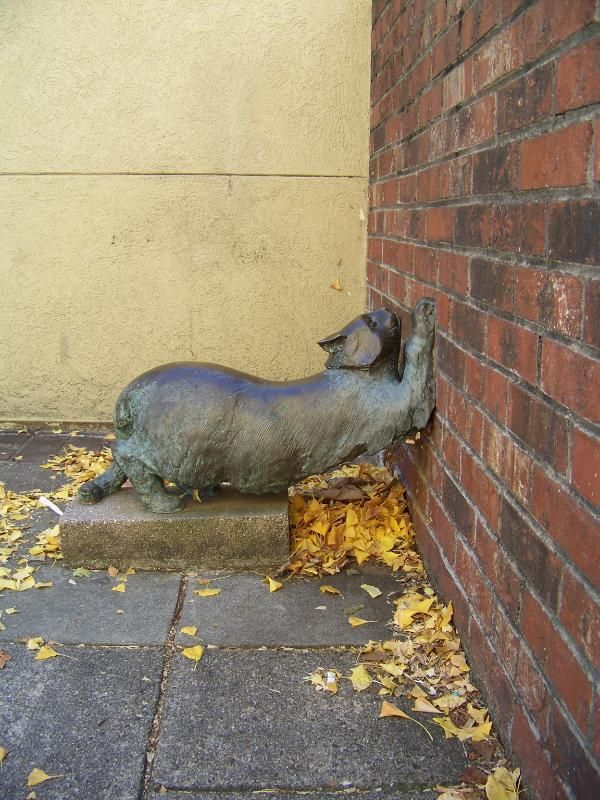

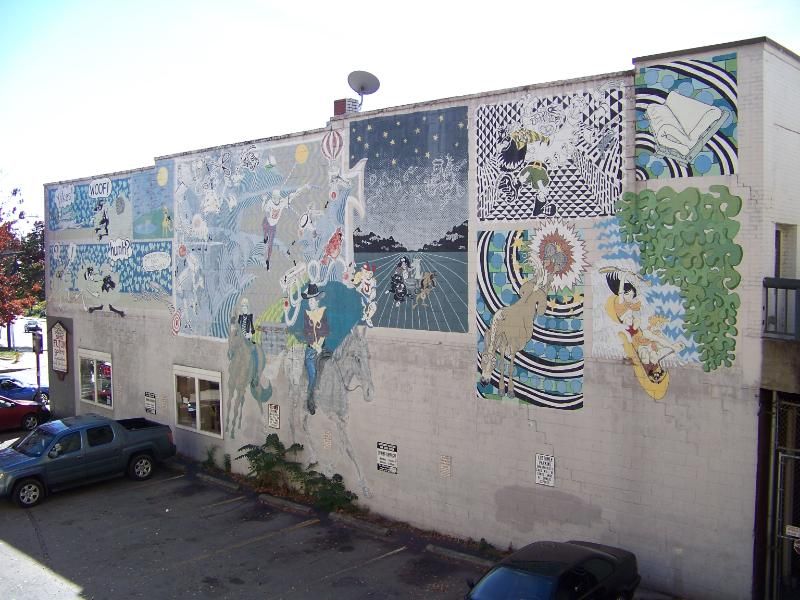
The cats' attention is rapt on a couple of bronze rats. Why? Because the alley that runs underneath Wall Street is known as Rat Alley.
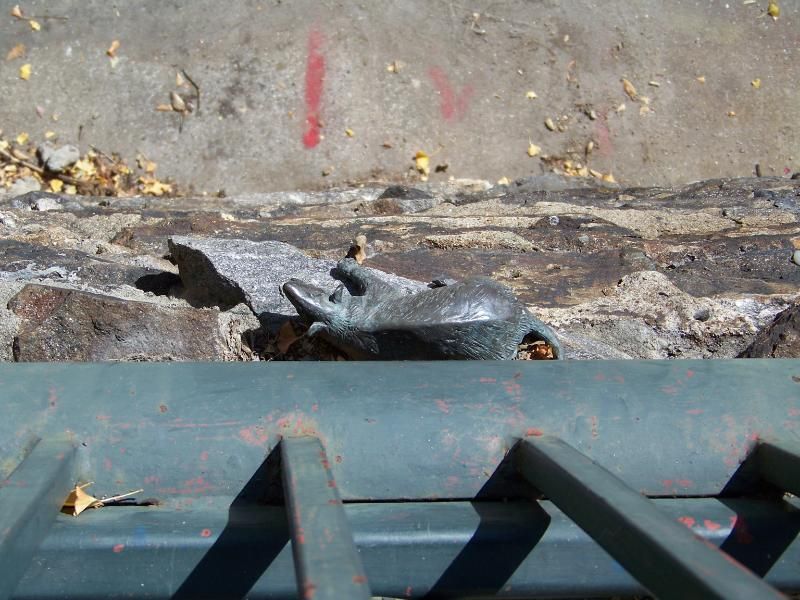

Other cities have yarn bombers, and while we have them too, we also have the flower bomber who leaves hapless trees and sculptures draped in chains of flowers under cover of darkness. This is what remains of her attack on a Wall Street gingko tree.
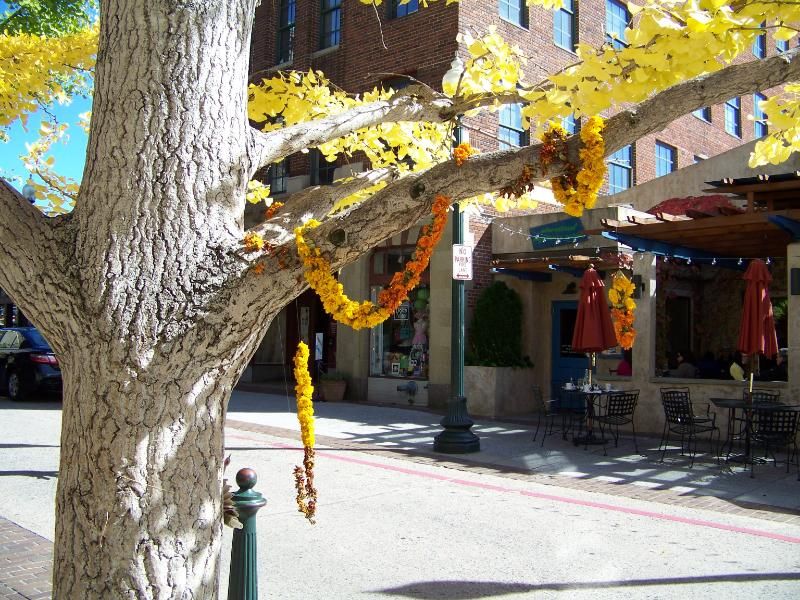
A last look up at the Public Service Building.
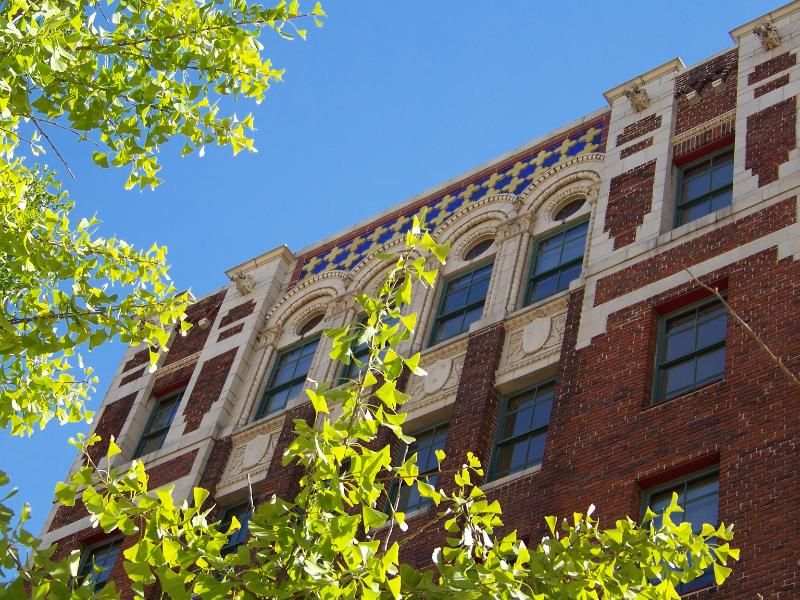
Up by the Grove Arcade, the city's loveliest shopping mall, this sculpture notes the fact that the Grove Arcade was originally planned to have a tower atop it.
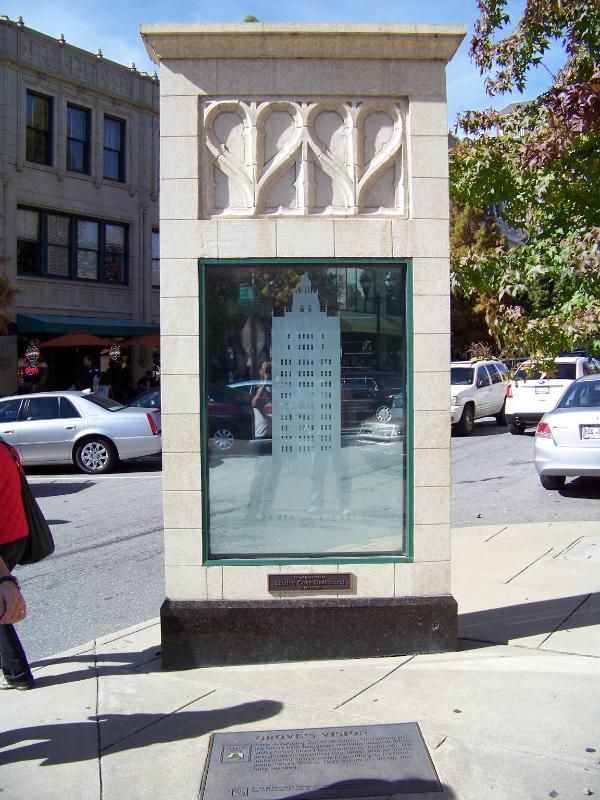
Inside the arcade. All of that stonework is handcarved.
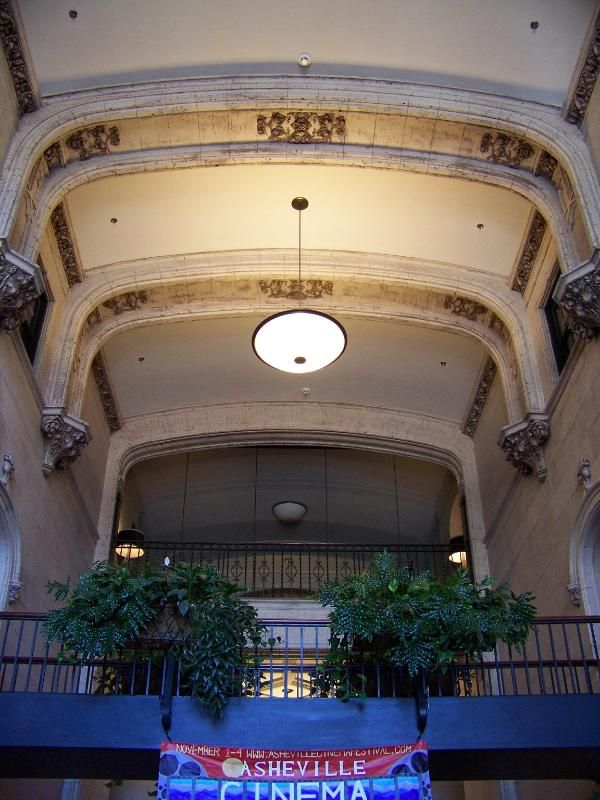
The building is decorated inside and out with dozens of carved faces, no two of which are exactly alike.
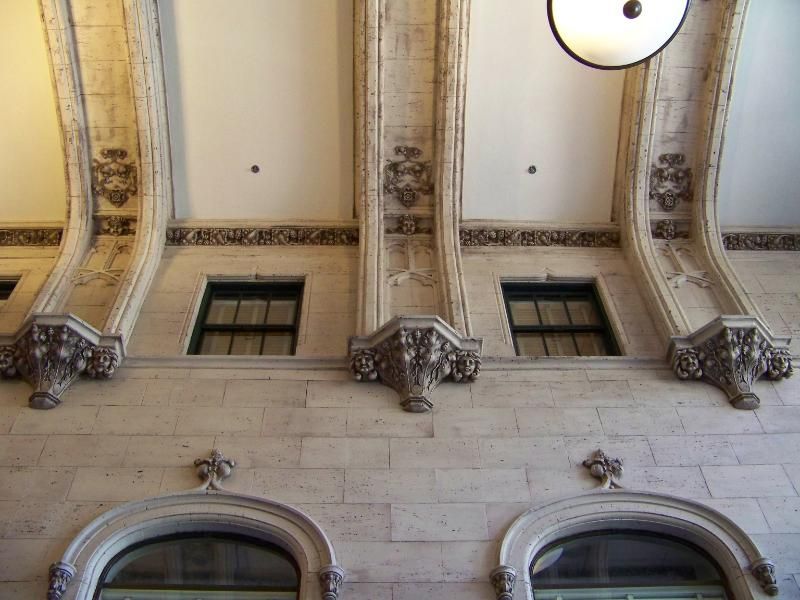
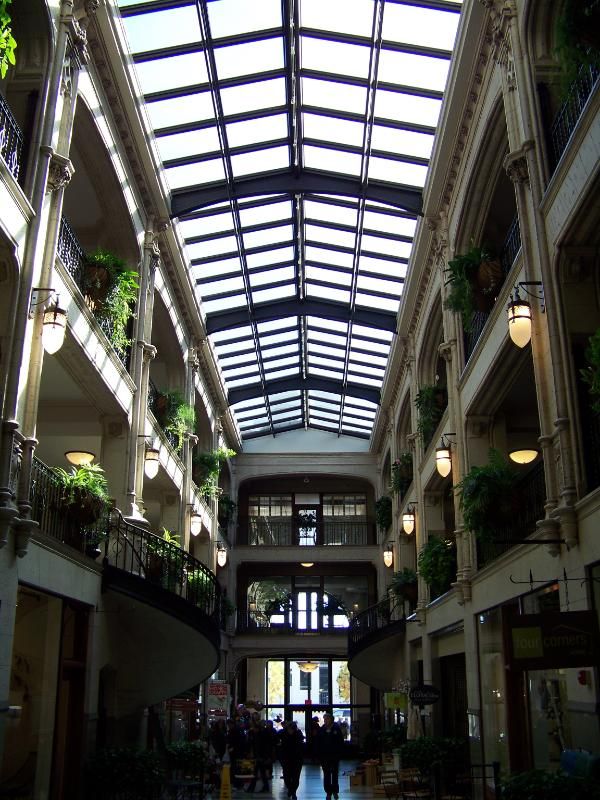
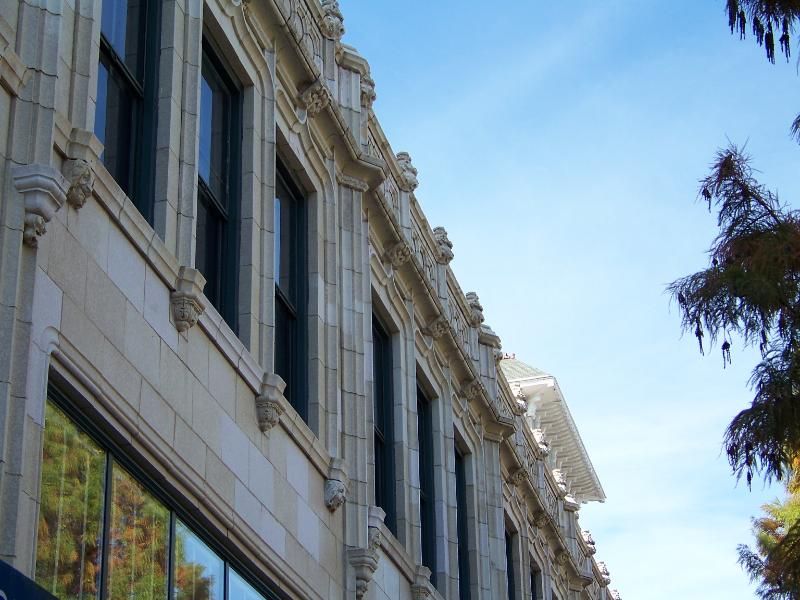
A bronze replica of the registration book from the old Battery Park Hotel (as well as its "new" incarnation) records some of the famous signatures collected by those hotels over the years.
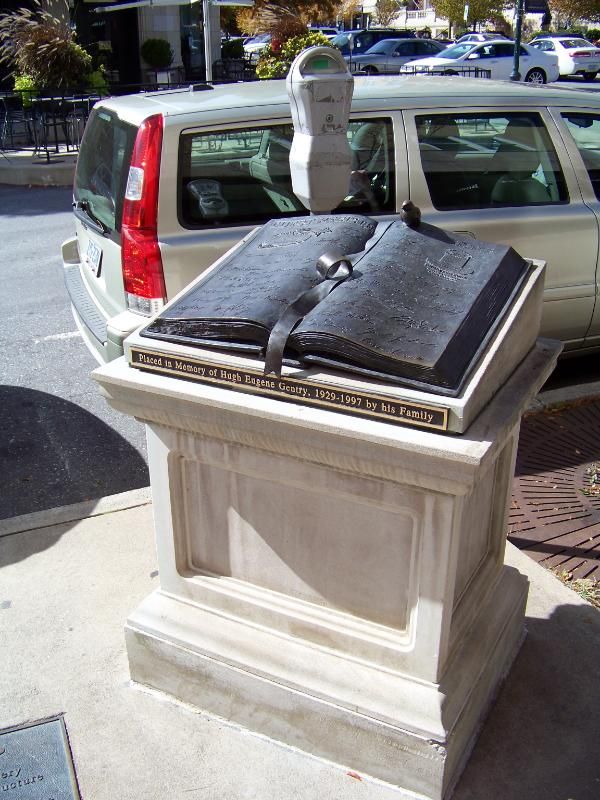
The "new" Battery Park Hotel still stands, and is now an apartment building.

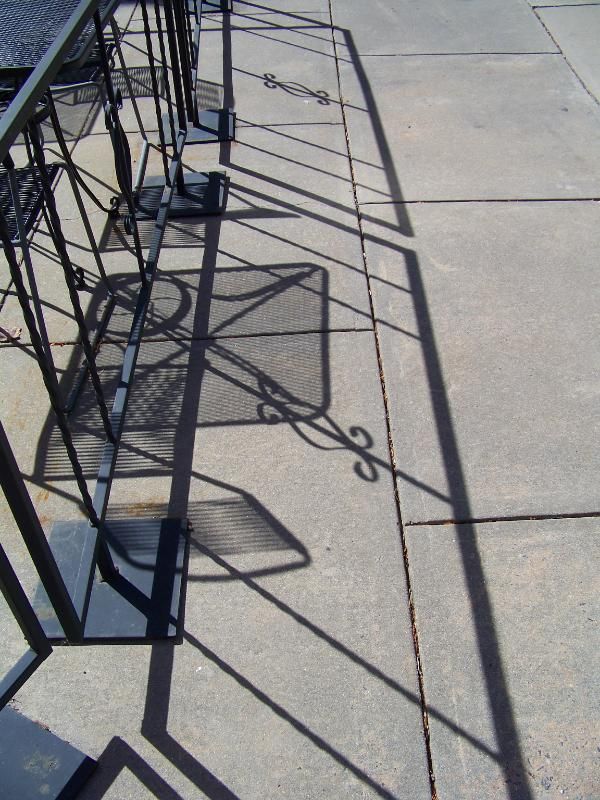
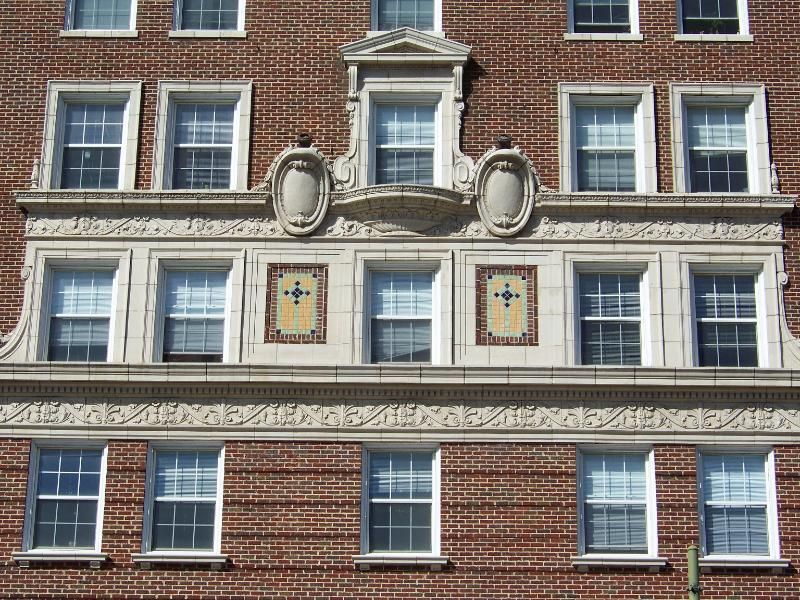
More stonework at the Grove Arcade.
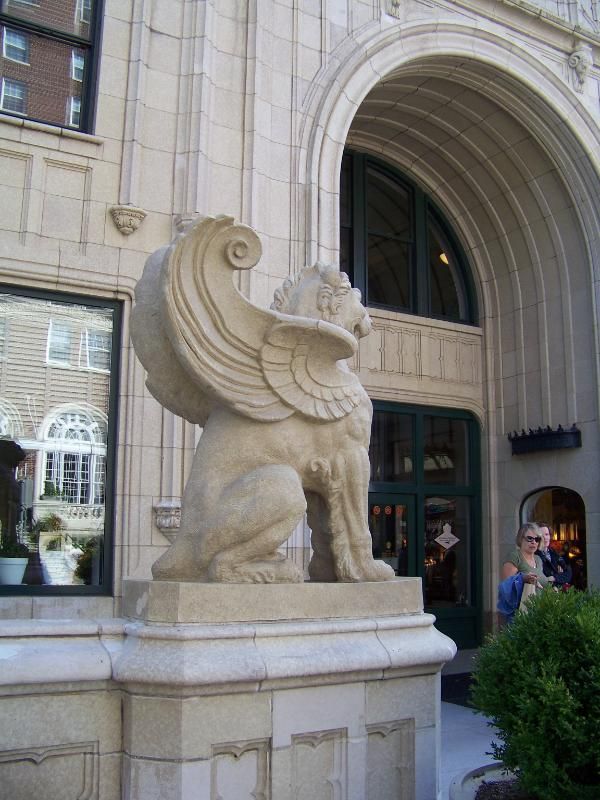
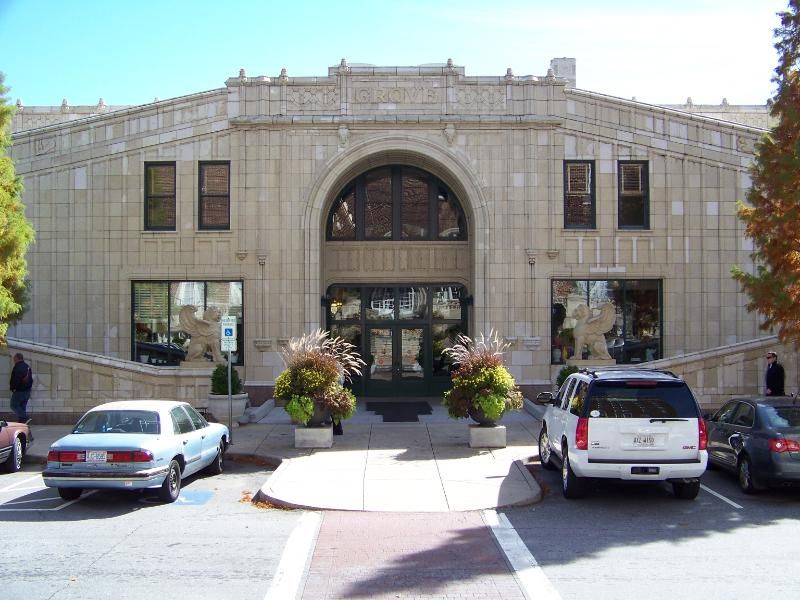

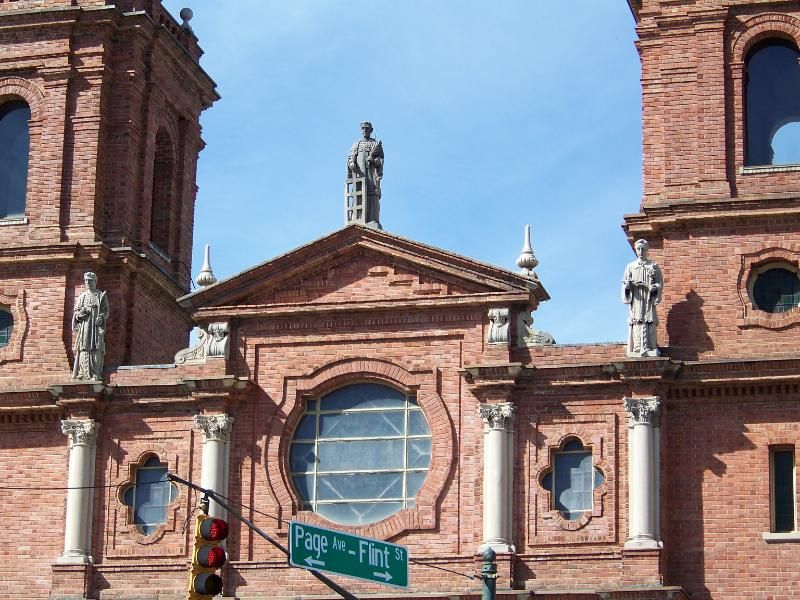
A sculpture group outside the civic center (recently renamed the U.S. Cellular Center) honors Asheville's long history as a center for music and dance. Asheville has been a resort city practically since its founding, and dances and concerts were held by the hotels to entertain their guests.
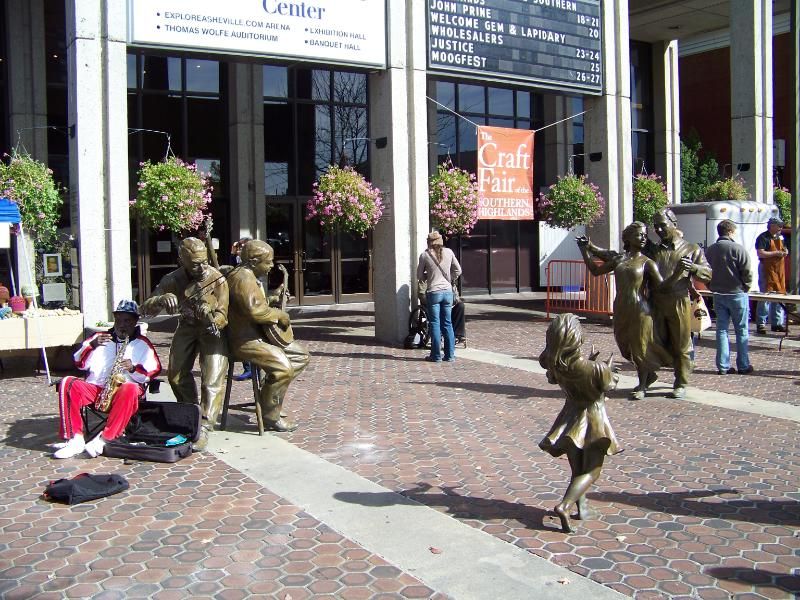
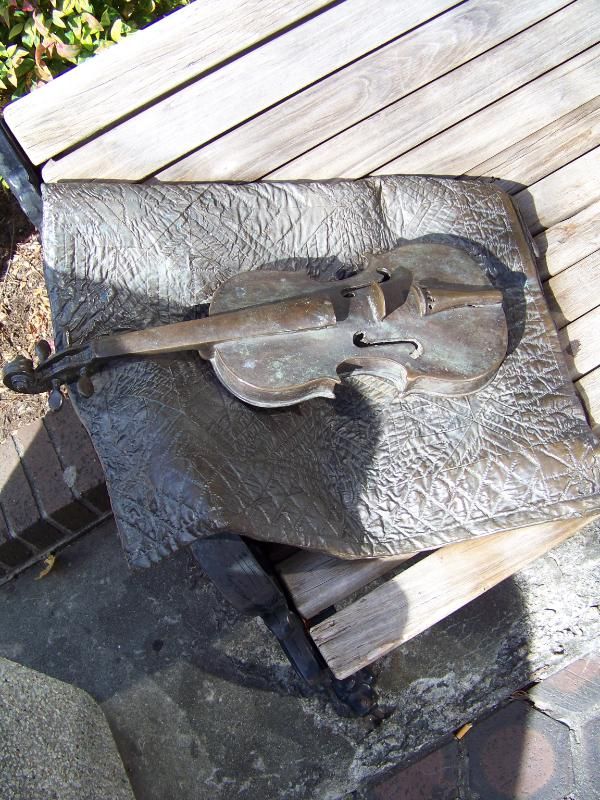


There was also a saxophonist entertaining the crowds coming and going from the big craft show inside.
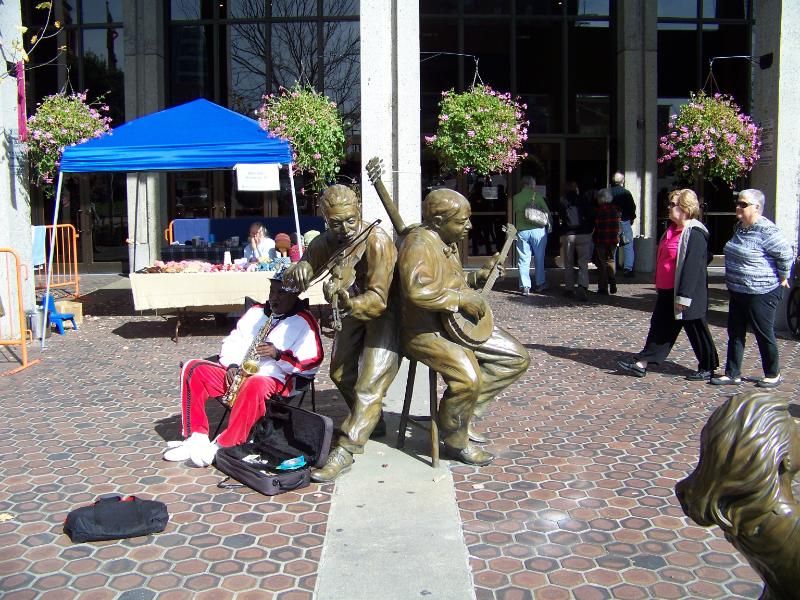
A blacksmithing demonstration outside the U.S. Cellular Center. You may watch art being made, if you like.
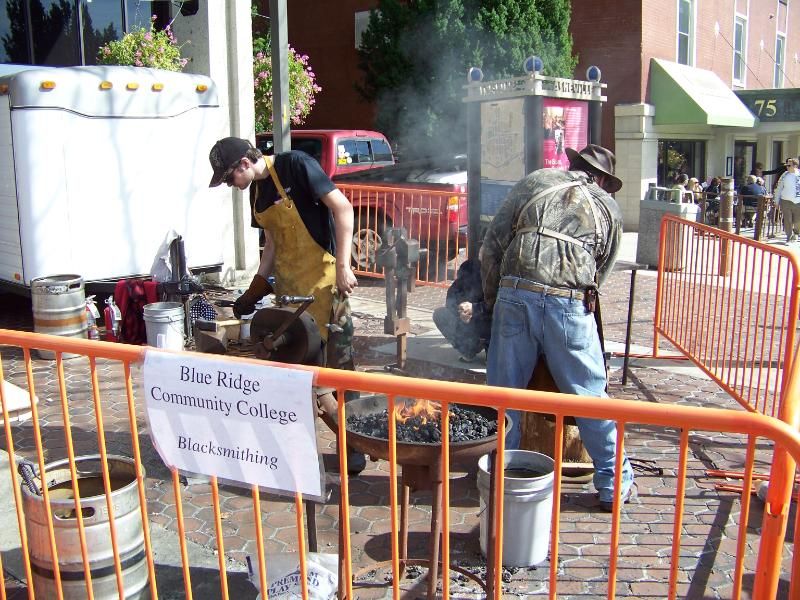
Bronze ivy marks the old Ivey's Department Store building. It's an upscale boutique hotel with shops on the first floor now.
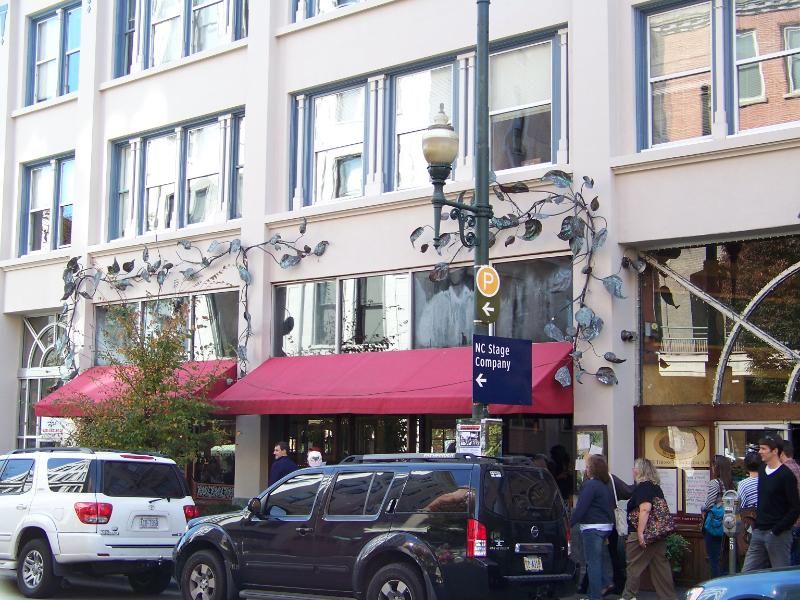
Speaking of department stores, Haywood Street used to be lined with them from end to end. These bronze shoppers note Haywood's history as the city's prime shopping street.
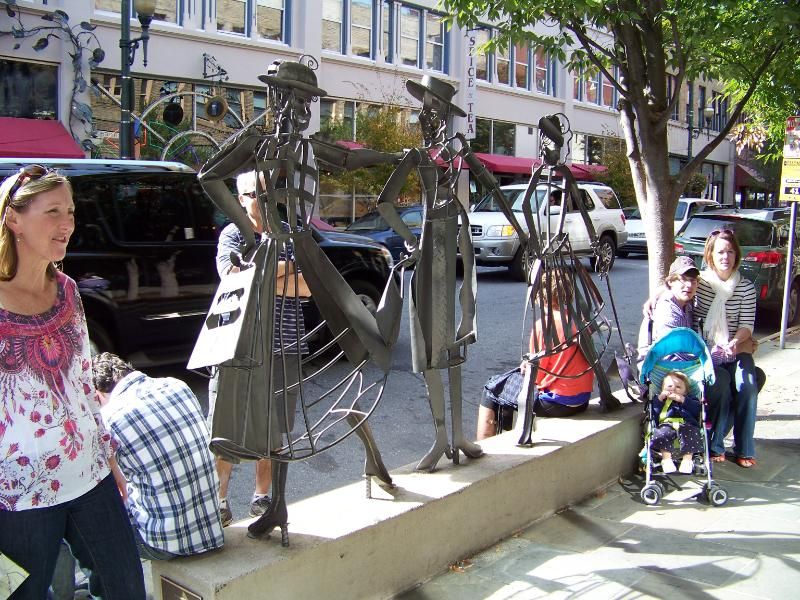
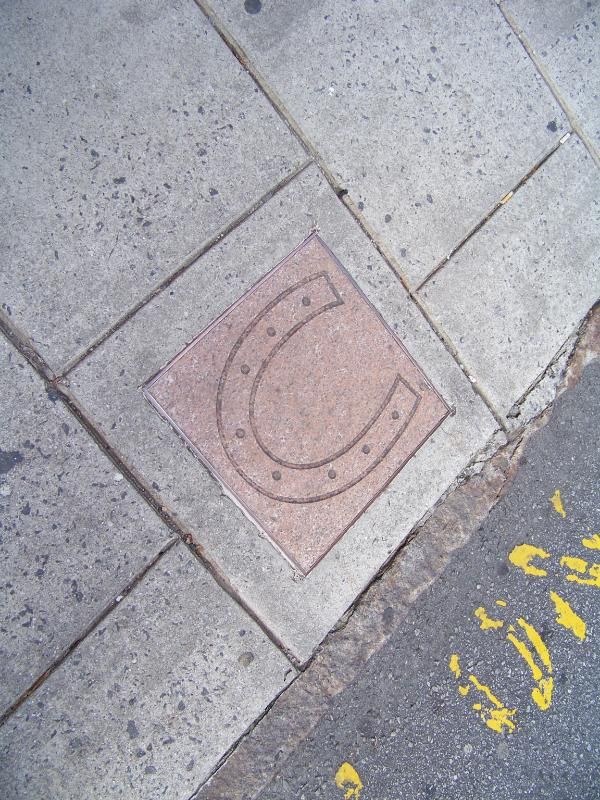

Over on Lexington Avenue the art is a little earthier. Here's a depiction of Chik-Fil-A Chief Operating Officer Dan Cathy as the famous drag queen Divine. The artist didn't care for Cathy's stance on same-sex relationships.
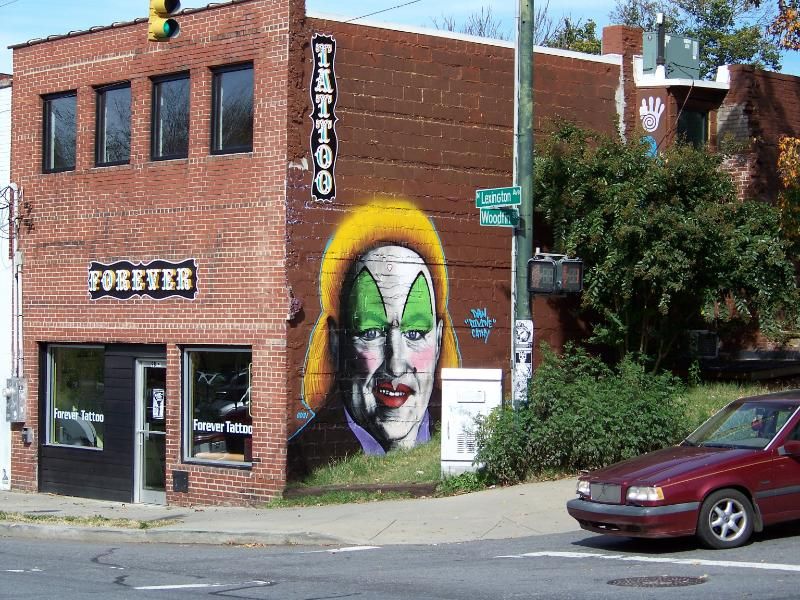
Yet another Lexington mural, photographed back in June.
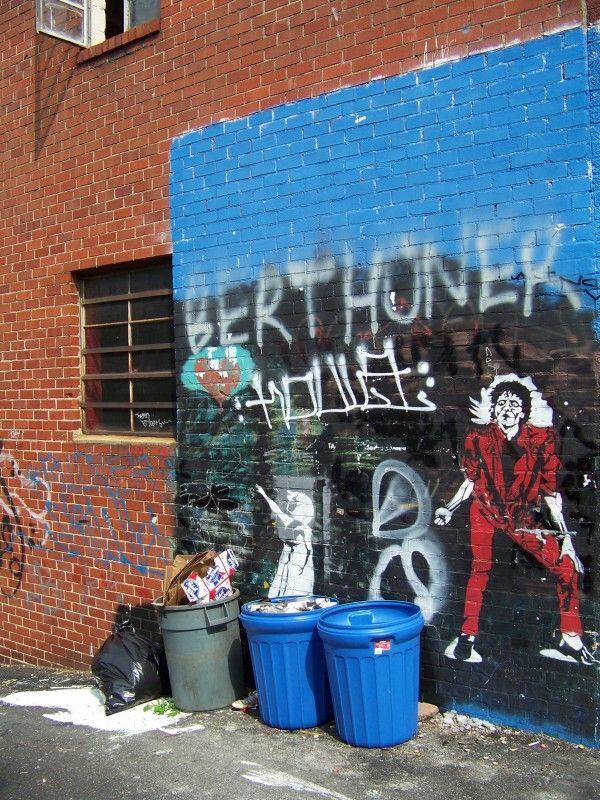
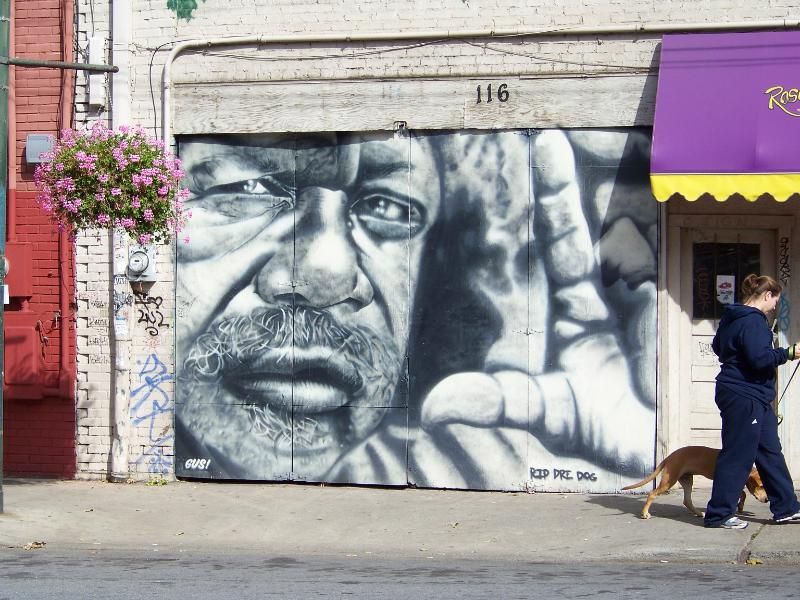
Turns out that behind this door is the Static Age music store. The door was up, so here's a picture from June showing the door in all its glory.

You've seen these murals under the I-240 overpass before because they're perhaps my favorite works of art downtown. I can't help myself.
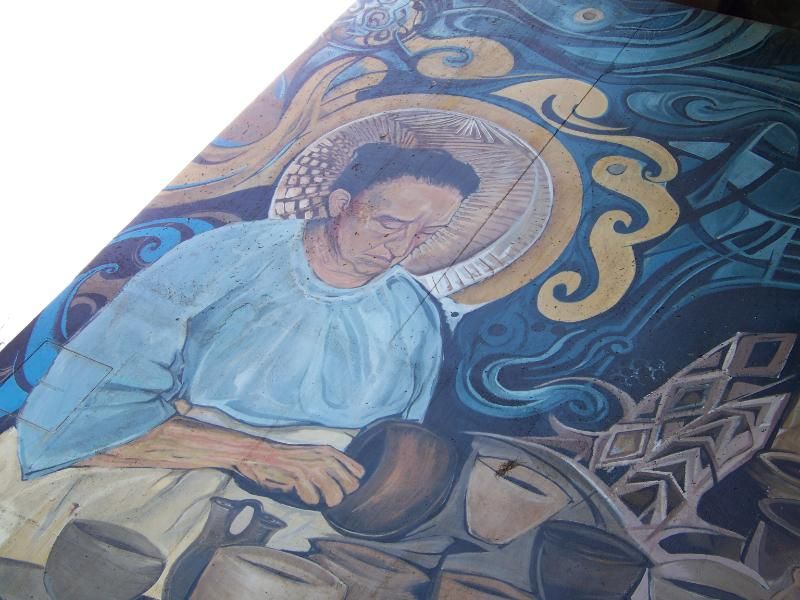
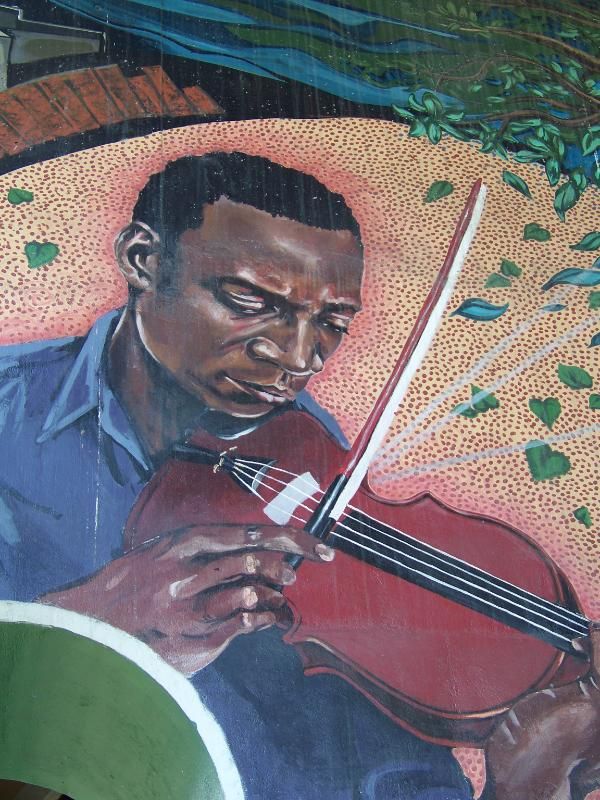

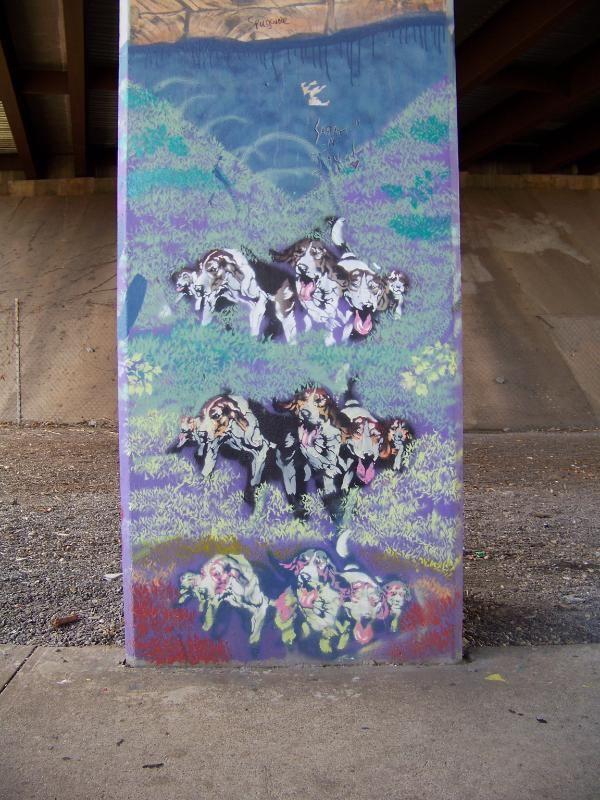


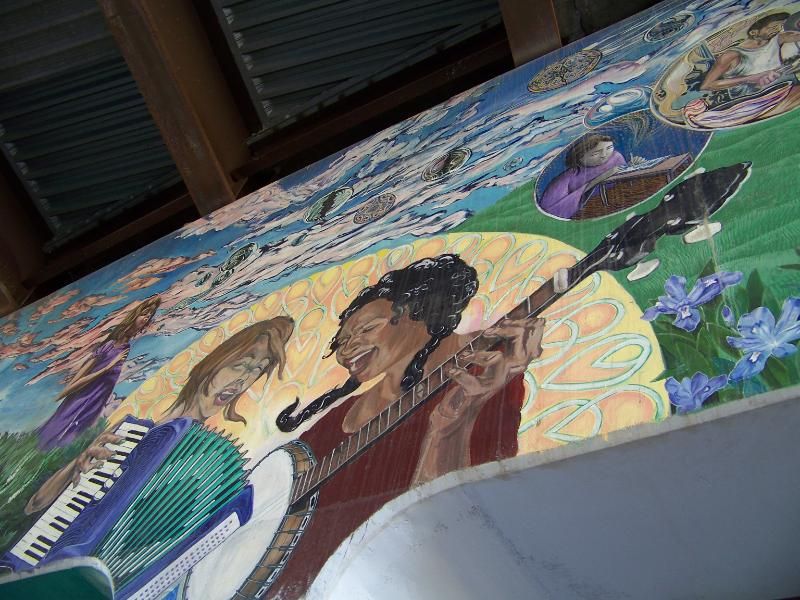
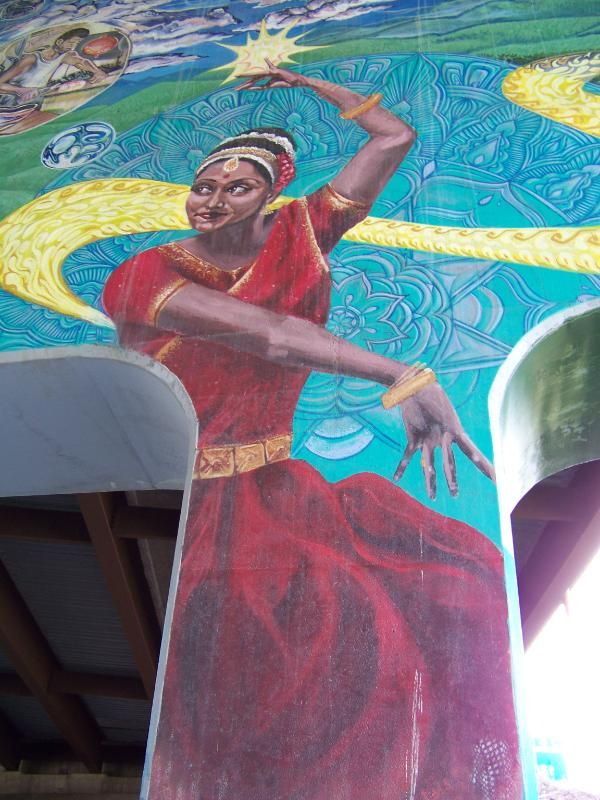
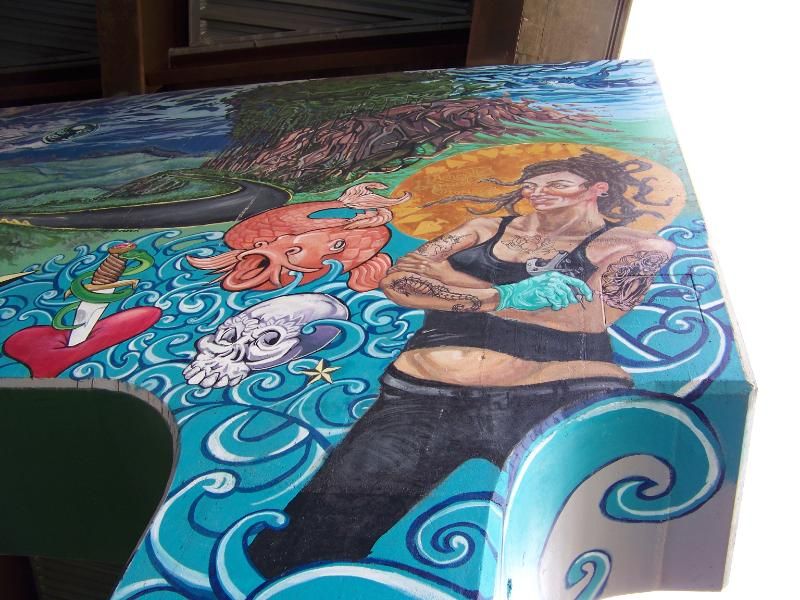
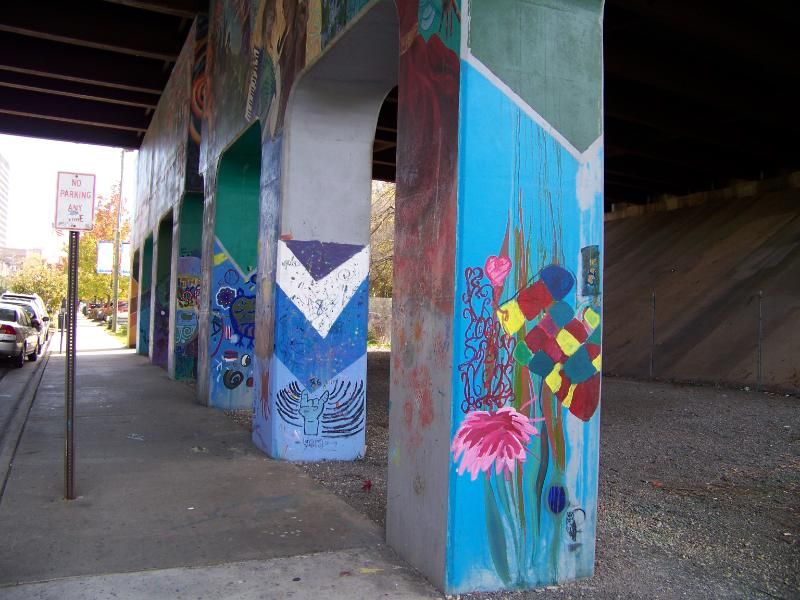
On the other side of the overpass lies the Moog synthesizer factory.
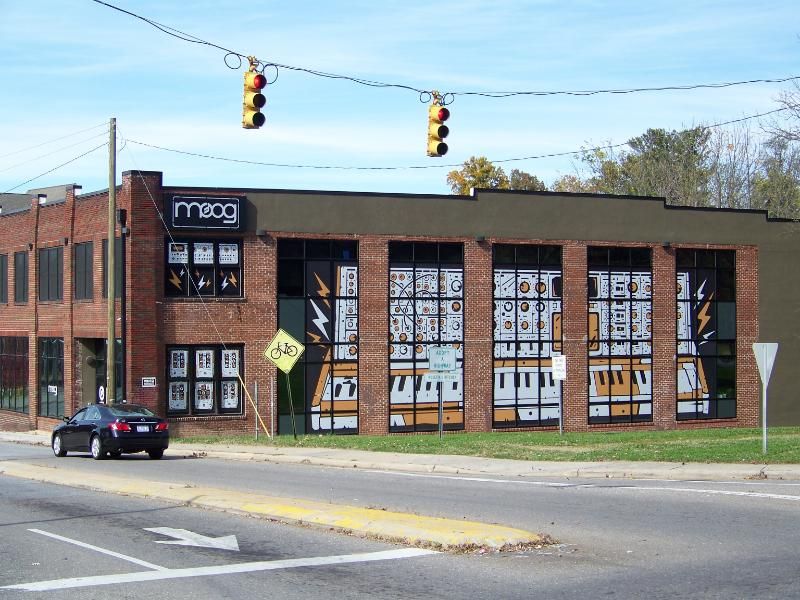

And back under the overpass we go.

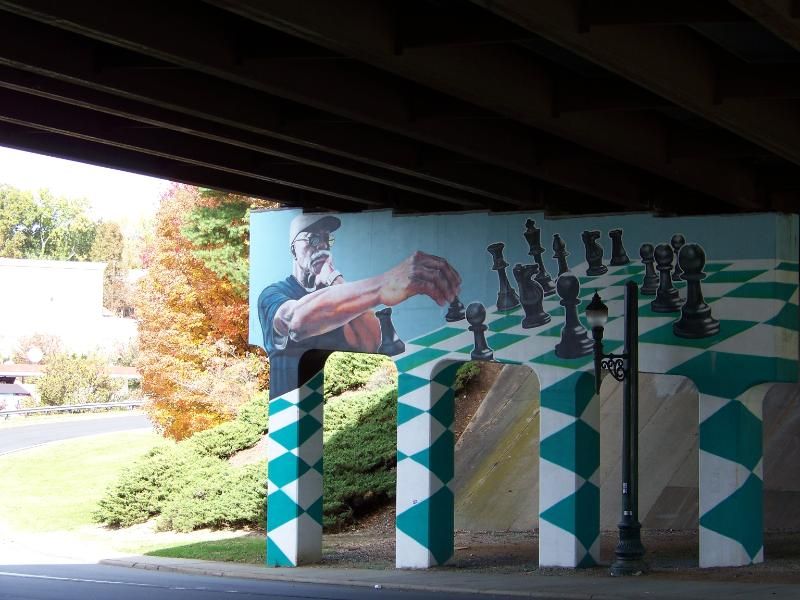
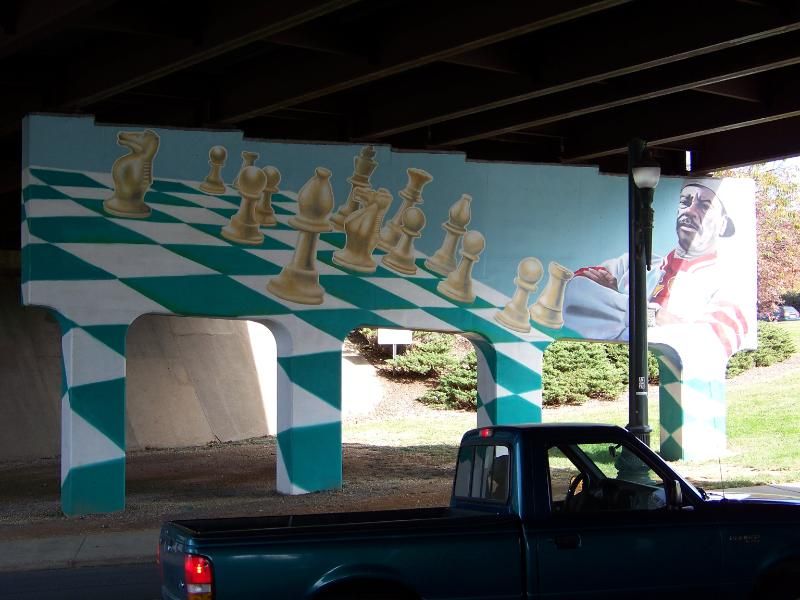
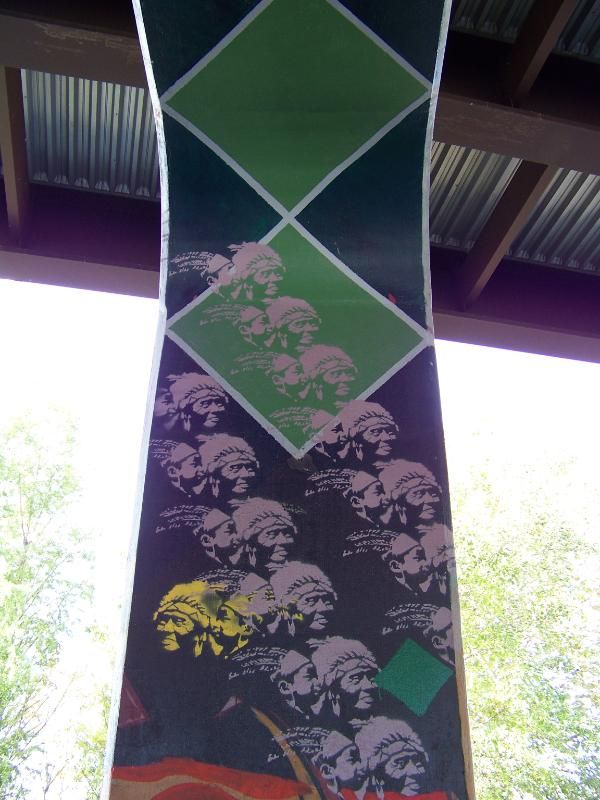
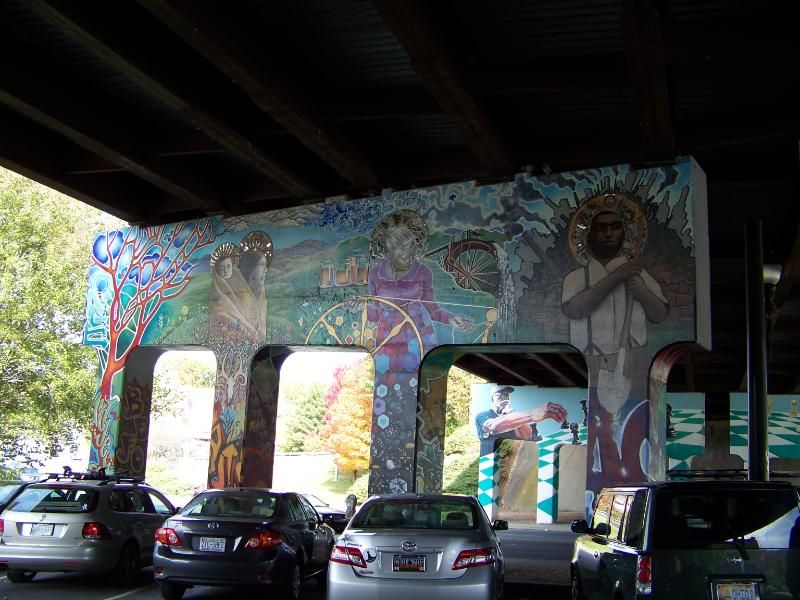
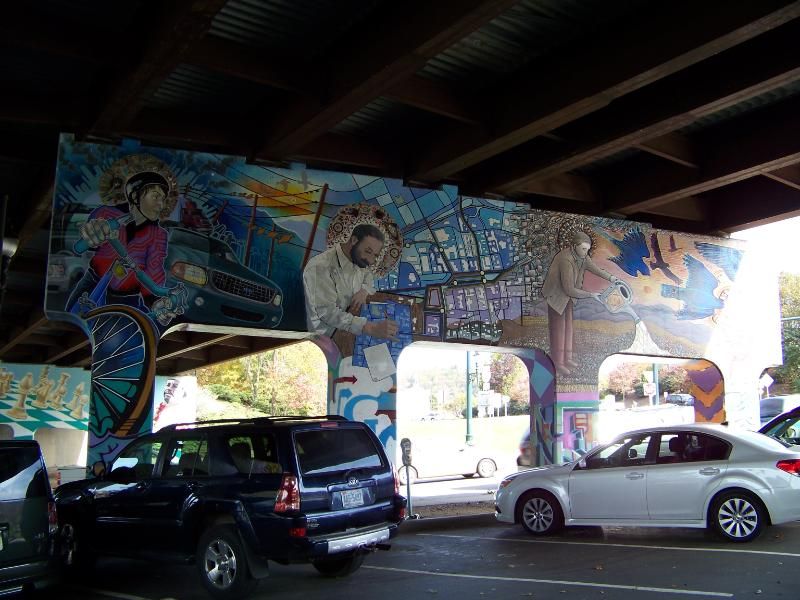

Chicken Alley, naturally.
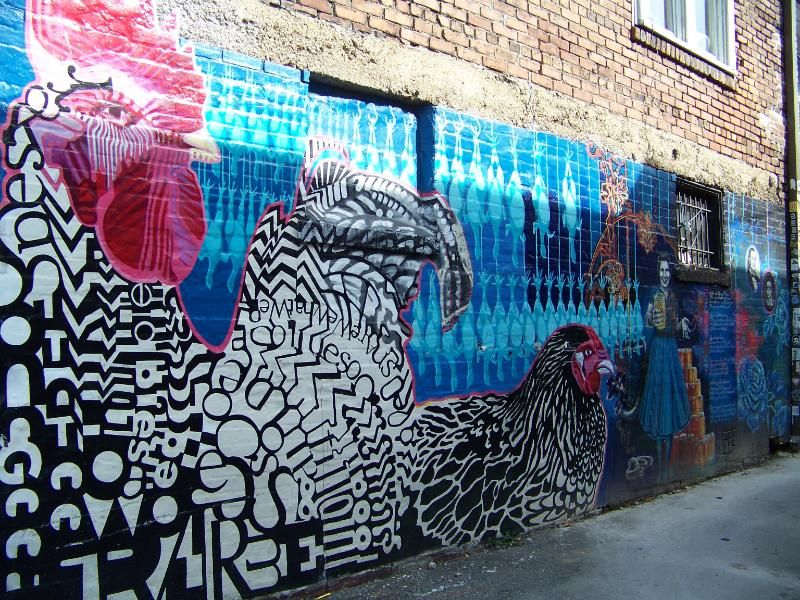
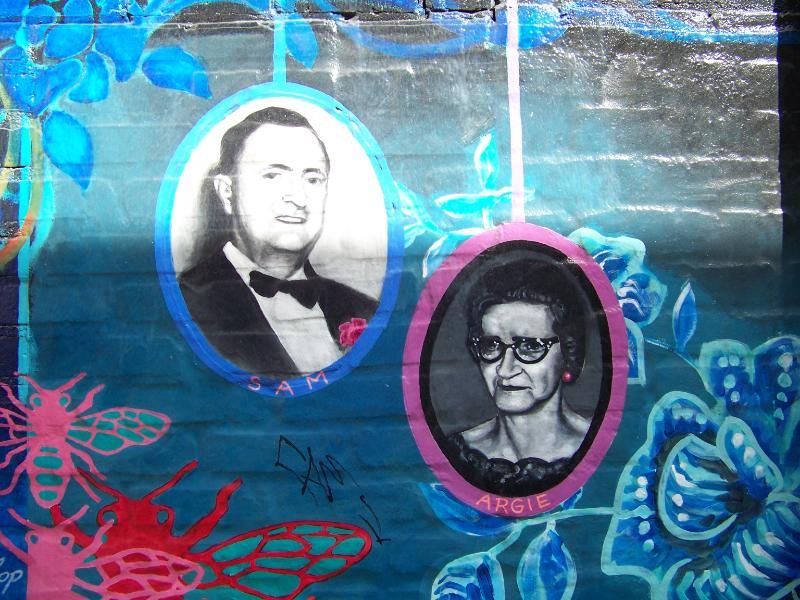
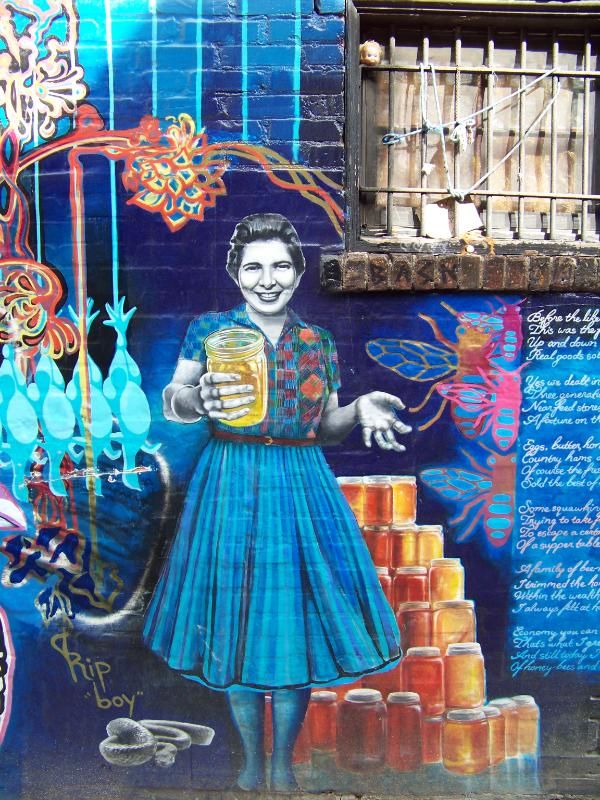
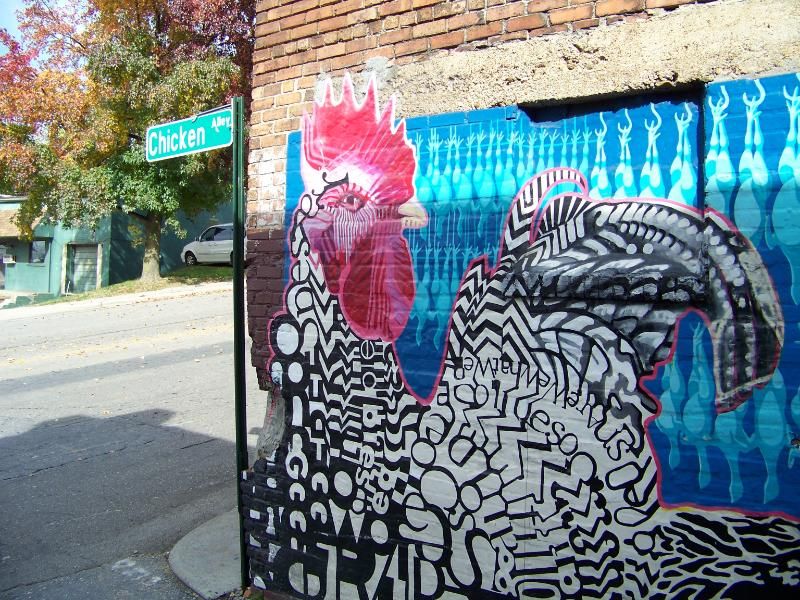
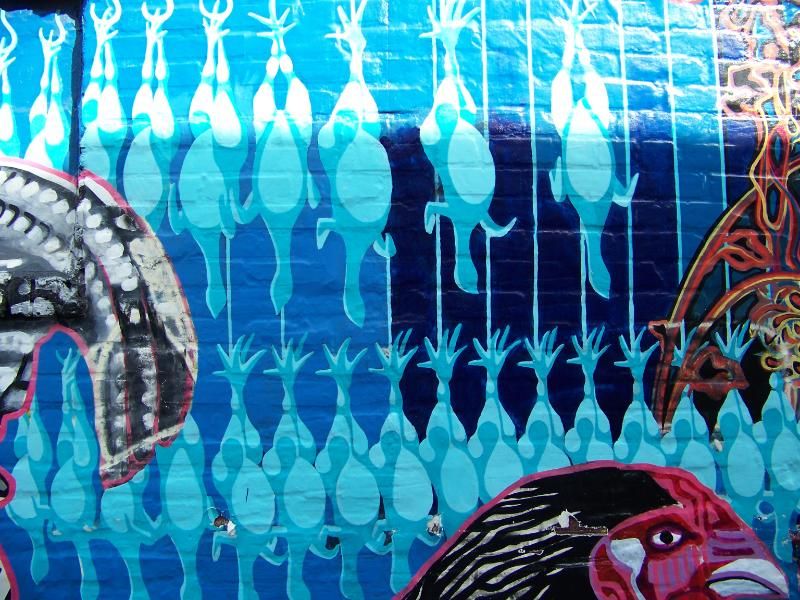
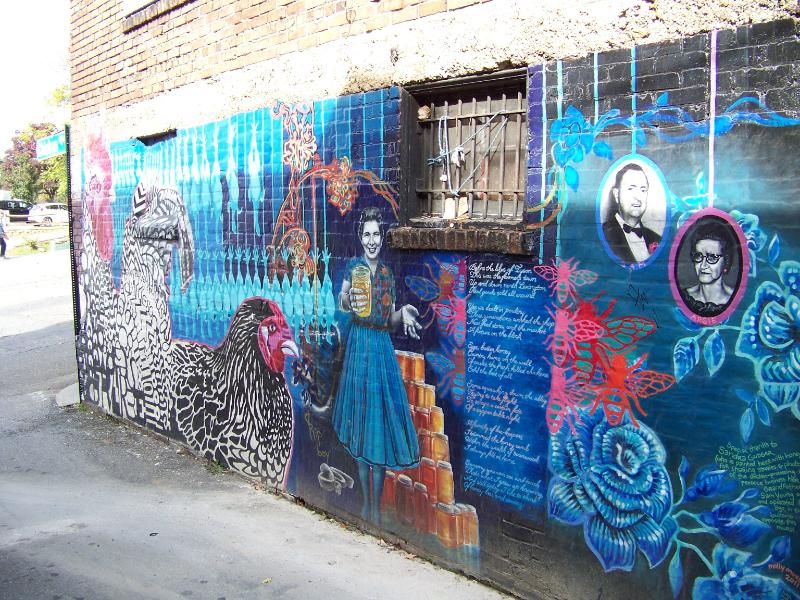
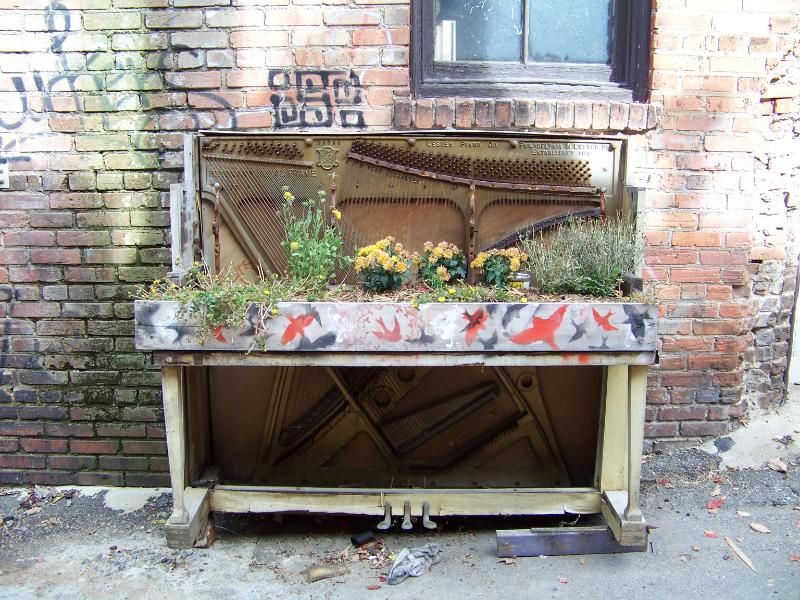
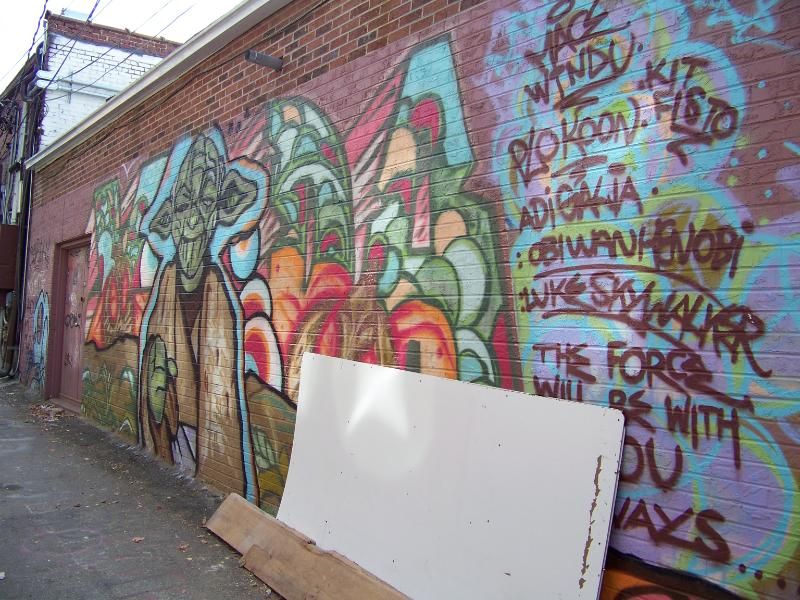
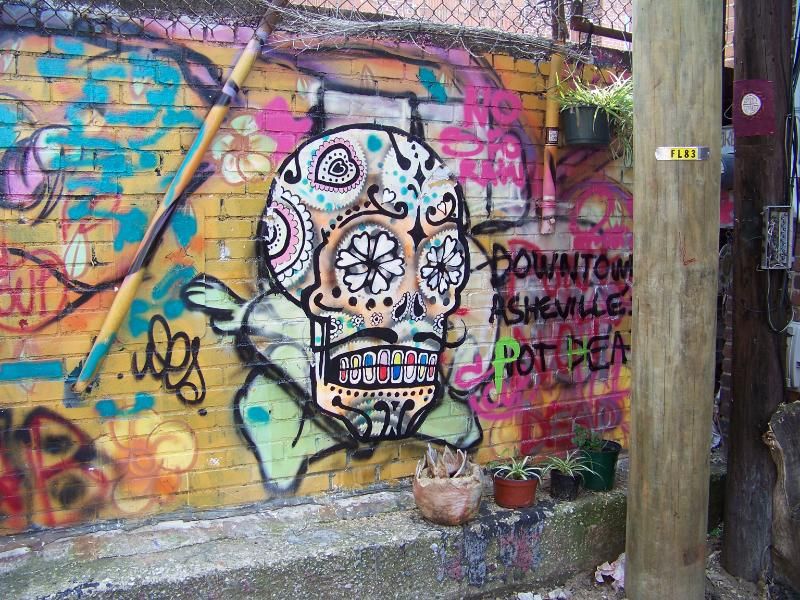
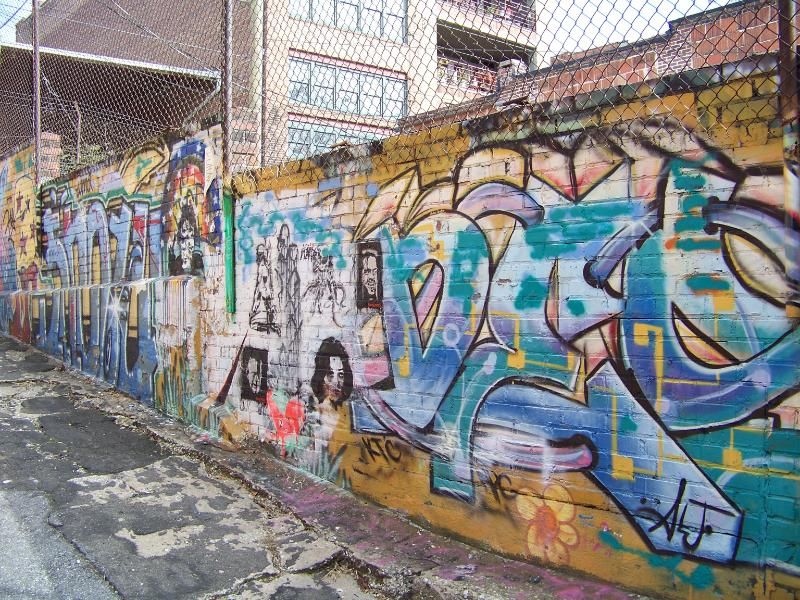
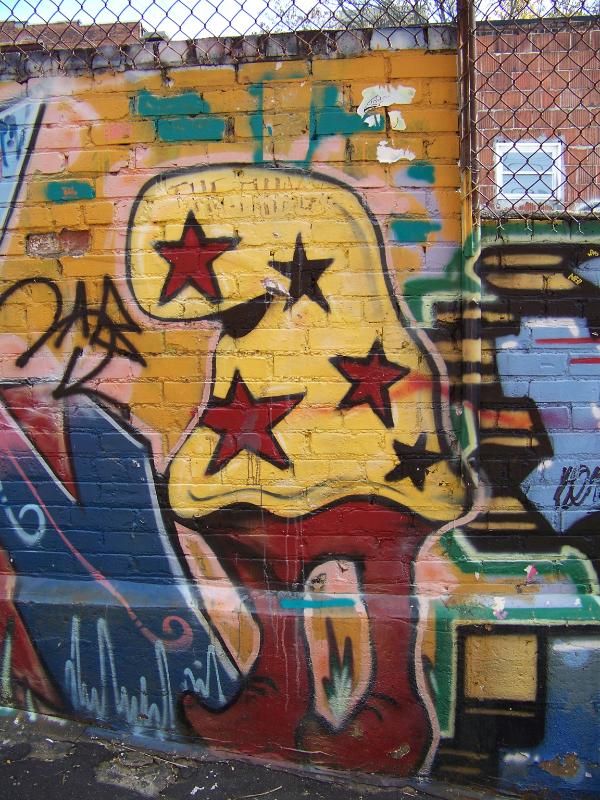
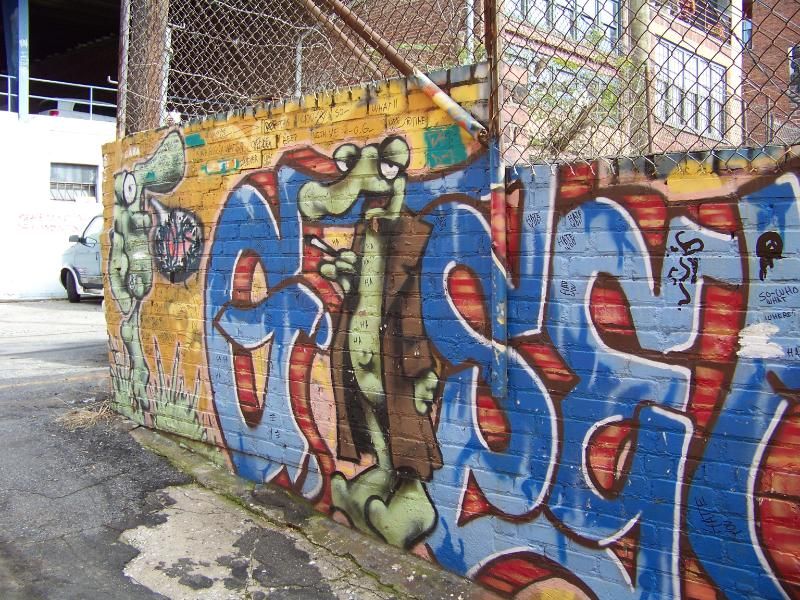
An artist at work up past the point where Chicken Alley hooks around to connect with Carolina Lane.

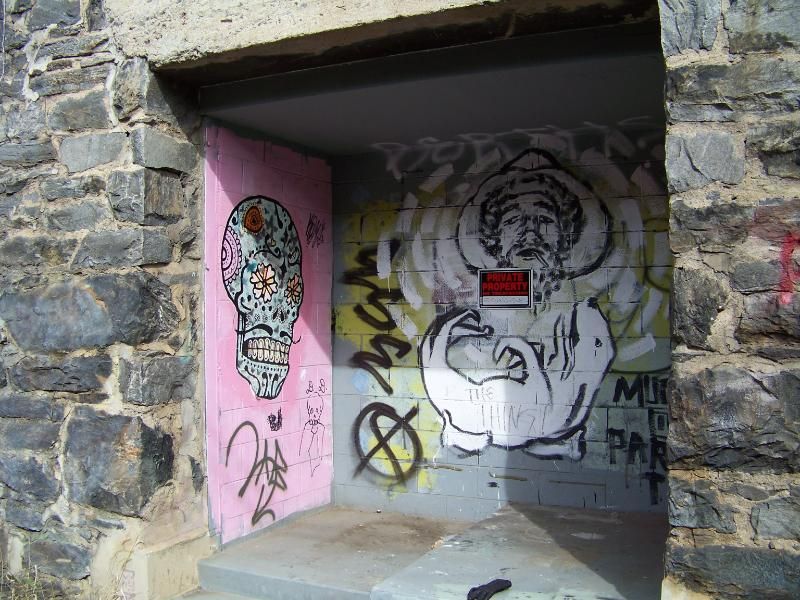
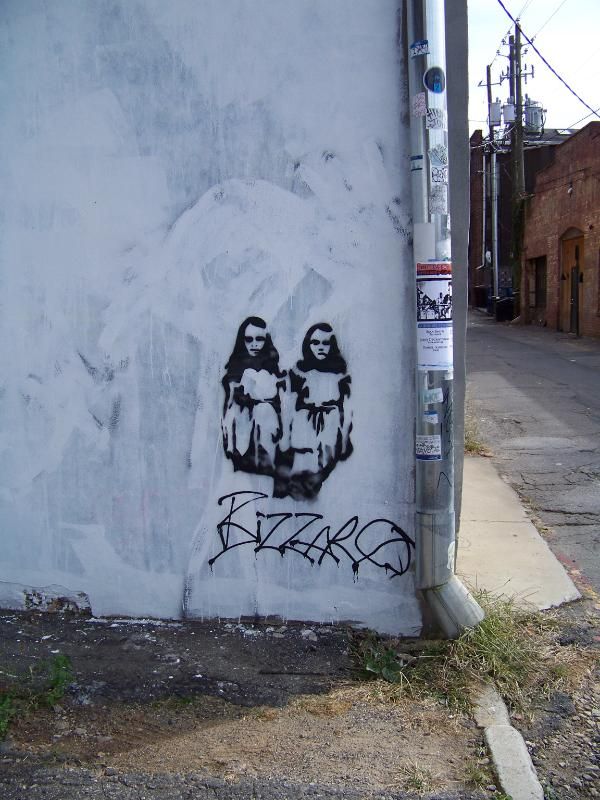
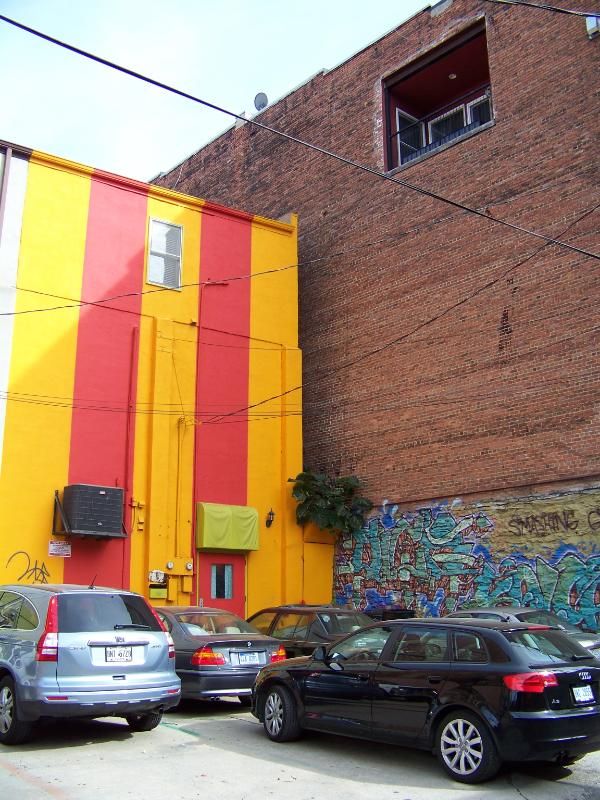
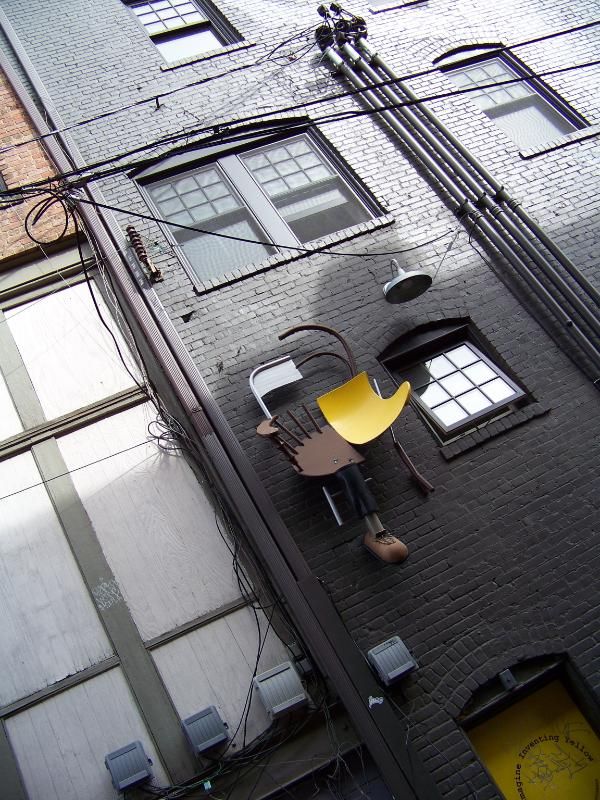
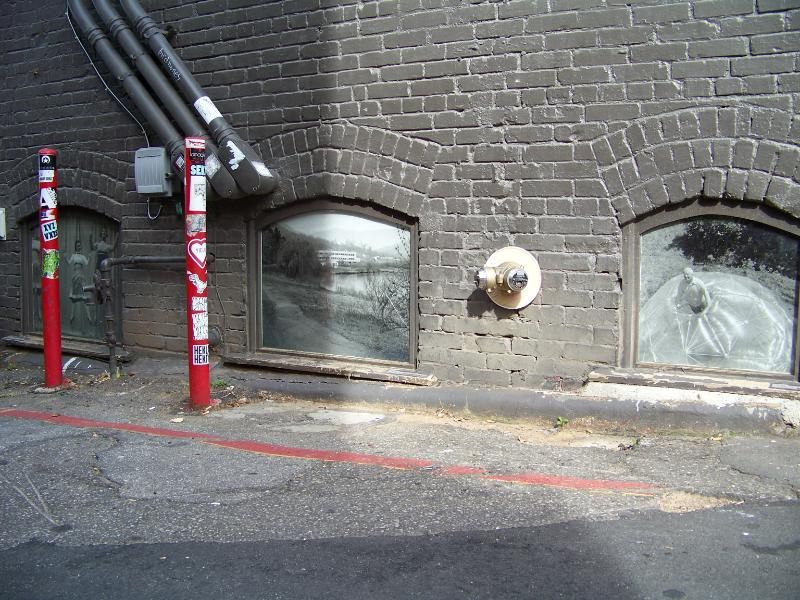
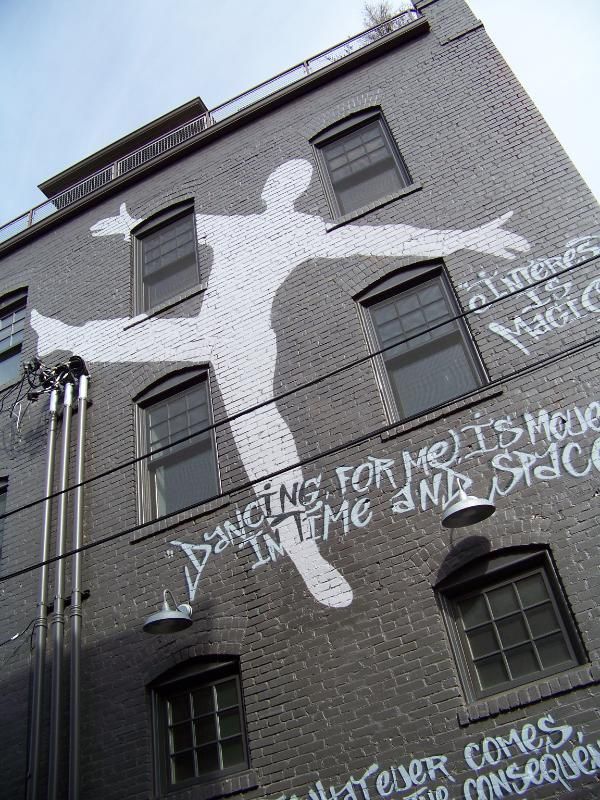
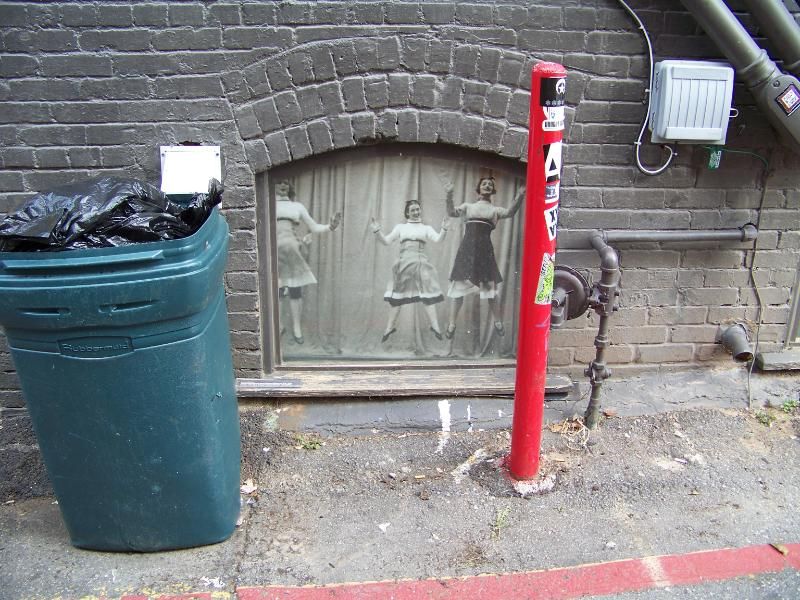
A bronze basket of apples and bonnet on a bench near the corner of Walnut and Lexington. It honors the farmers who once brought their goods to town to sell them.
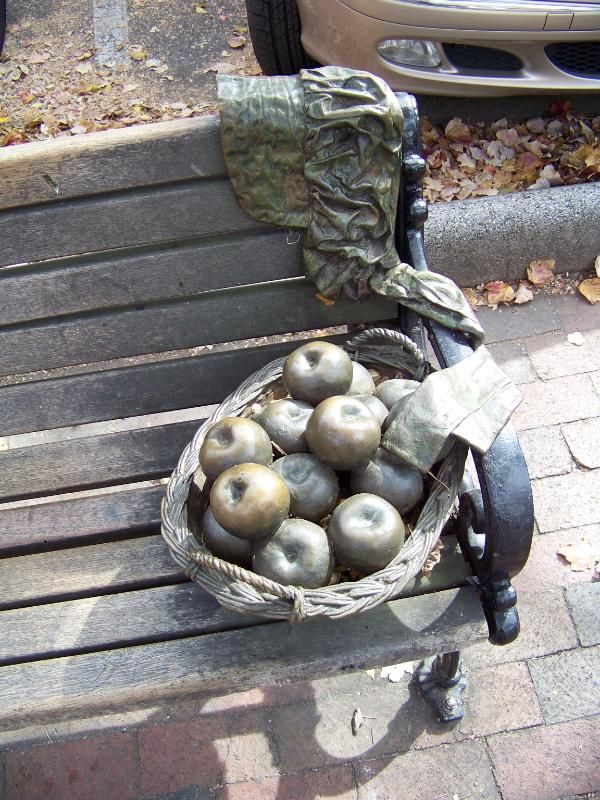
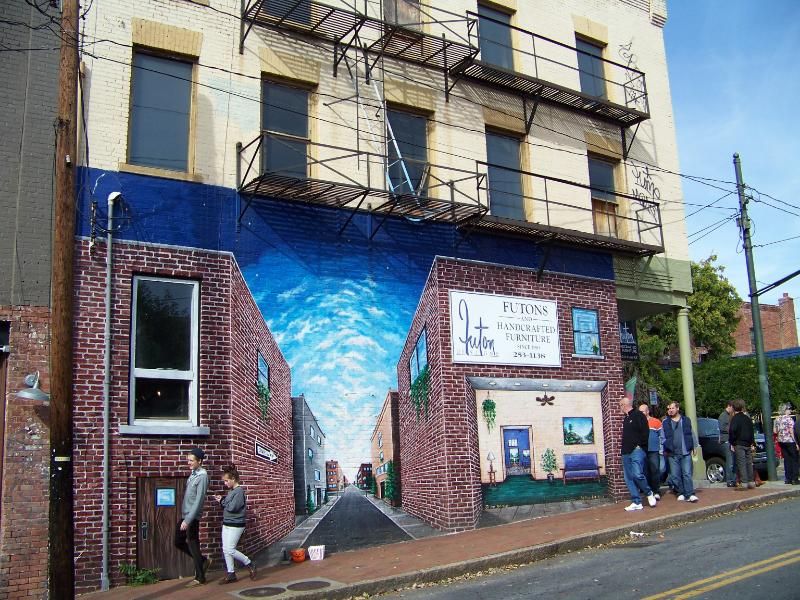
A bronze boy on stilts on Broadway. Somehow, this is supposed to honor the architect who designed the biggest house in America, which stands a few miles south of downtown Asheville.
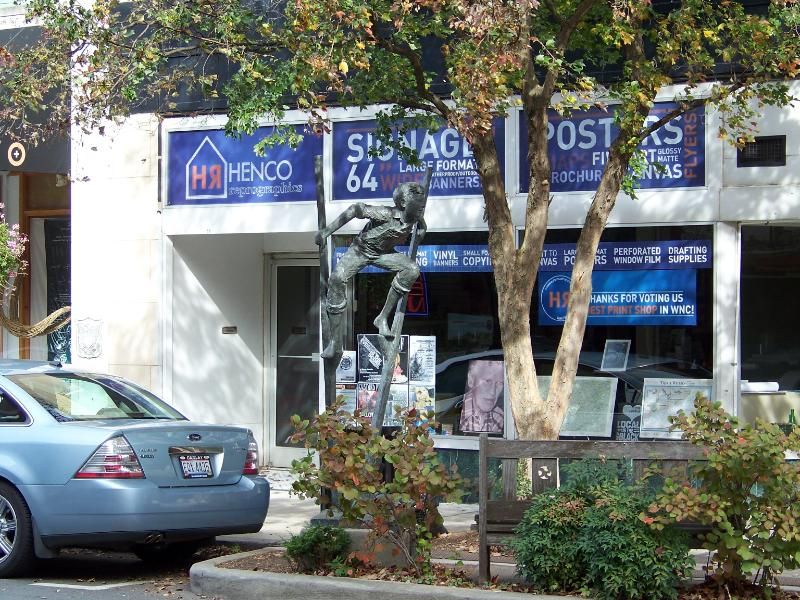
The yarn bombers have been here, I see.
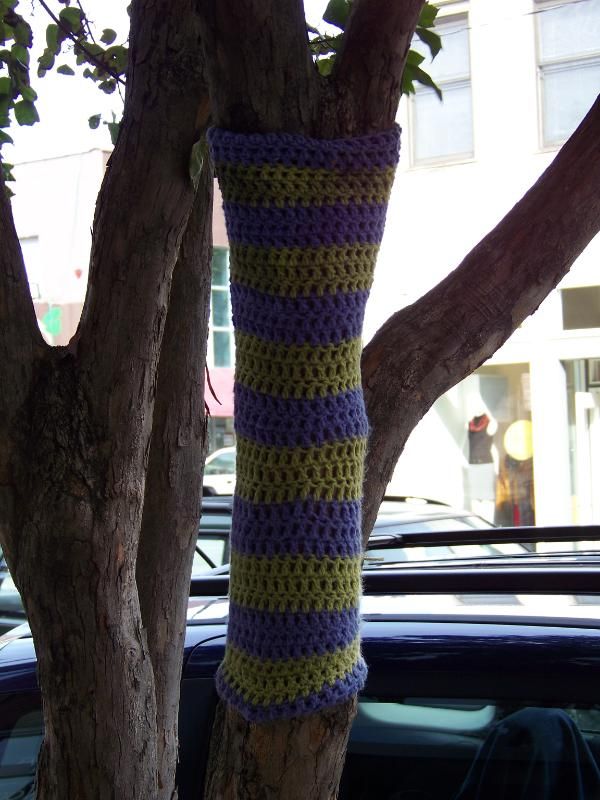
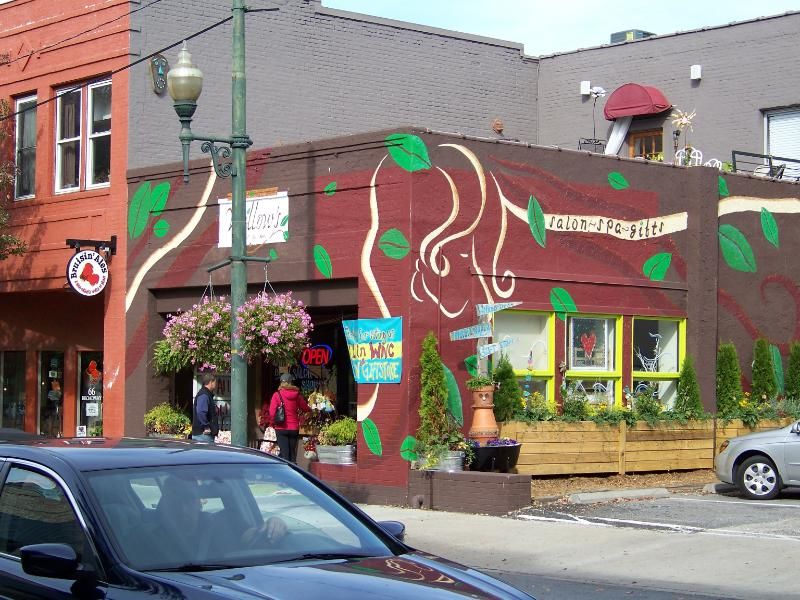
Mural on Broadway.
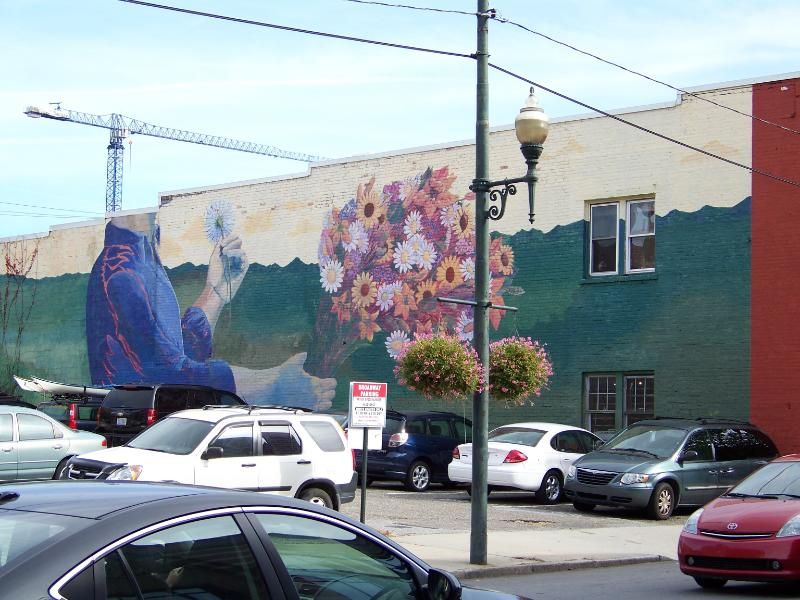
A ceramic depiction of the Woodfin House that once stood on Woodfin Street.

Thomas Wolfe grew up in this neighborhood and the forced perspective of this artwork shows what the area would have looked like when Wolfe was growing up.
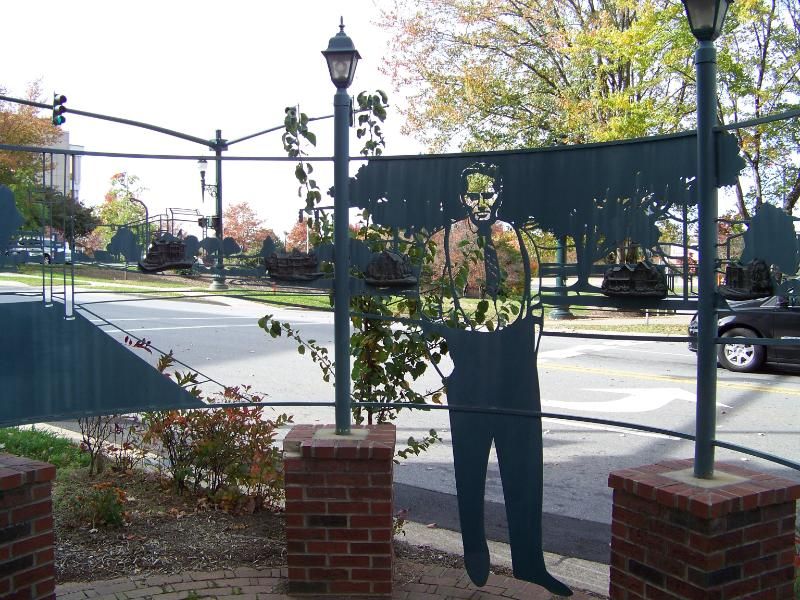
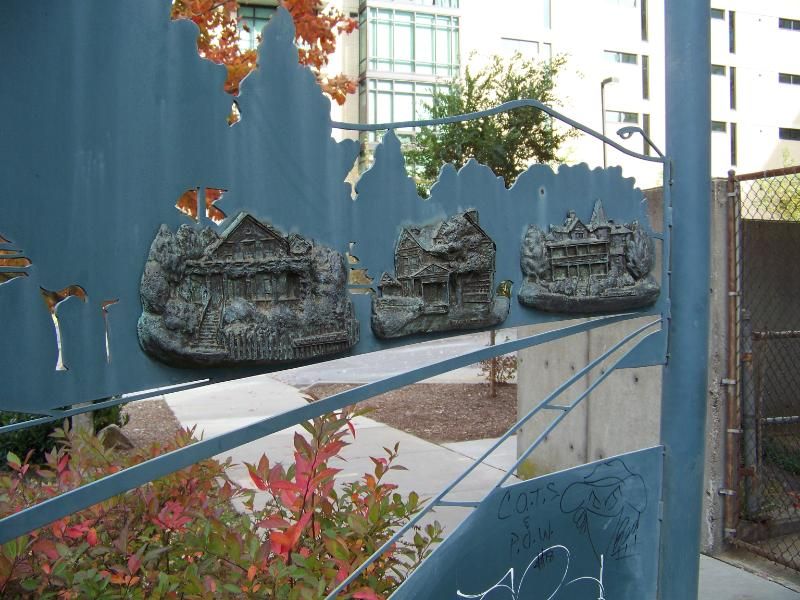
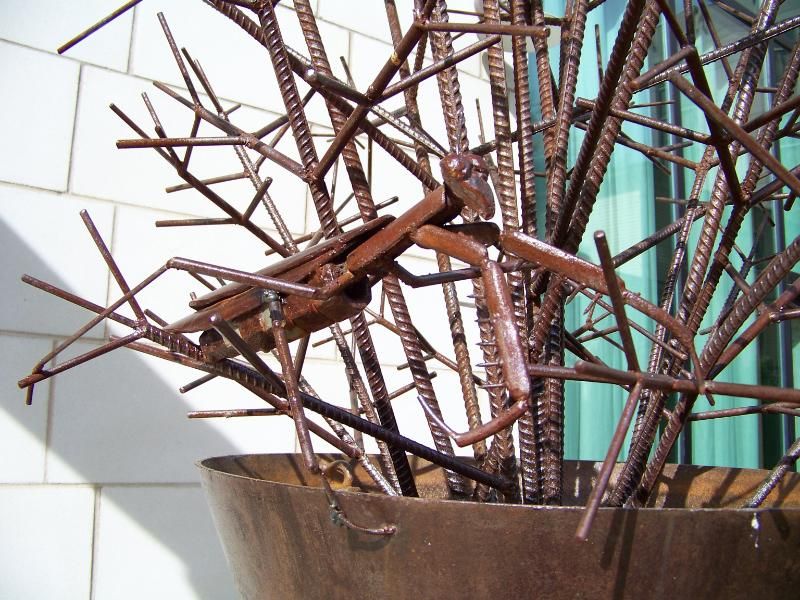
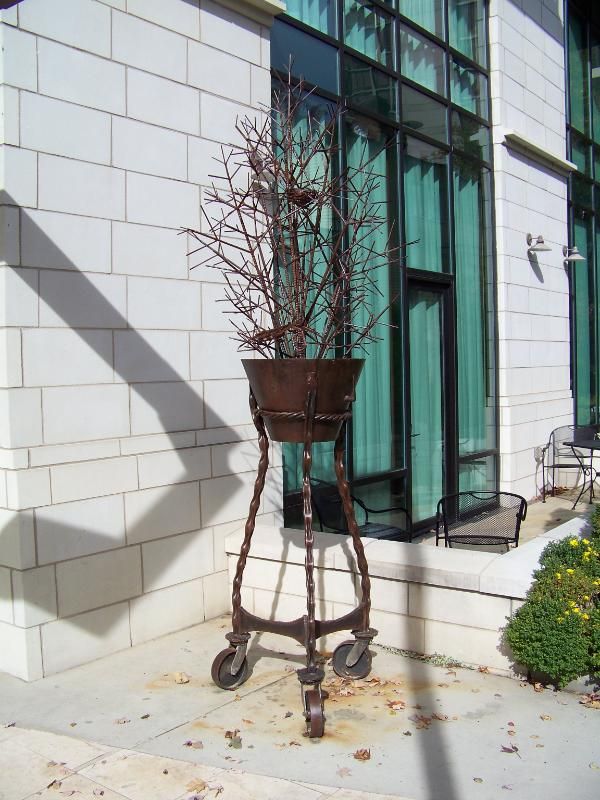
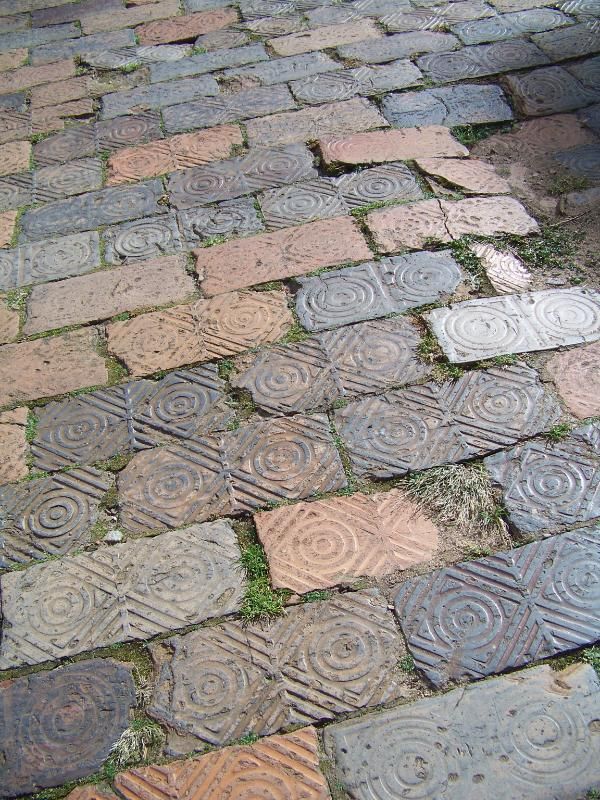
Up at the Thomas Wolfe House there's a pair of -- very large -- bronze shoes in Wolfe's size.

Sculptures on the side of the Asheville Community Theatre. You may watch art being performed if you like, and I did just that when I attended a performance of
Hairspray here a few weeks ago. Theatre thrives here.

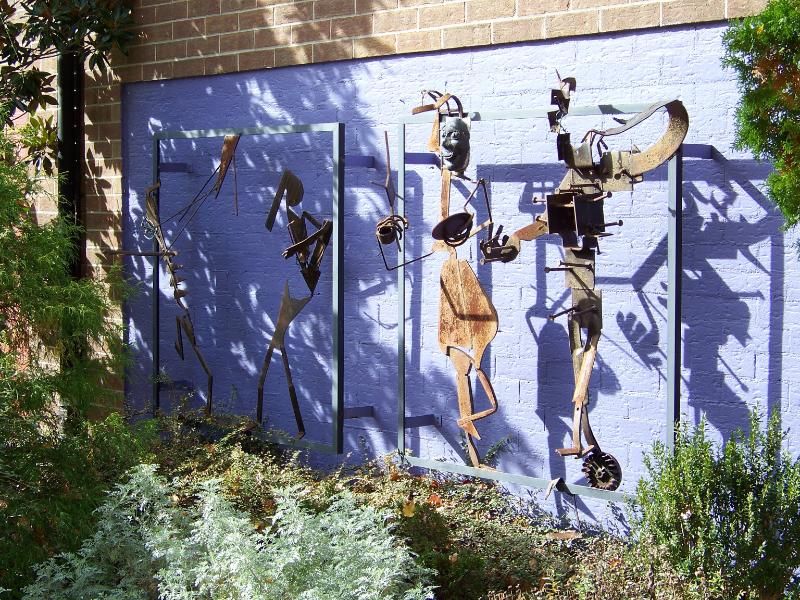
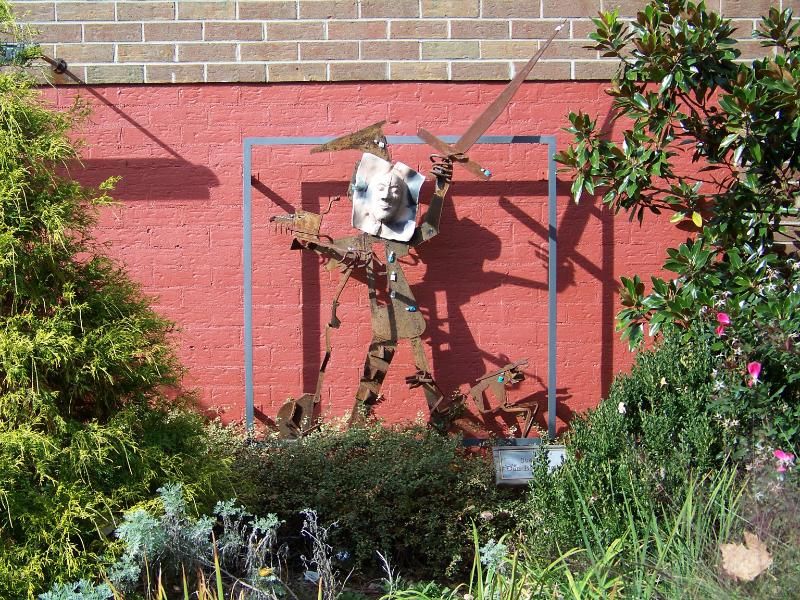
An artwork depicts the various ways that travelers have come to Asheville over the years, from canoe to bicycle, horse, train, and plane.
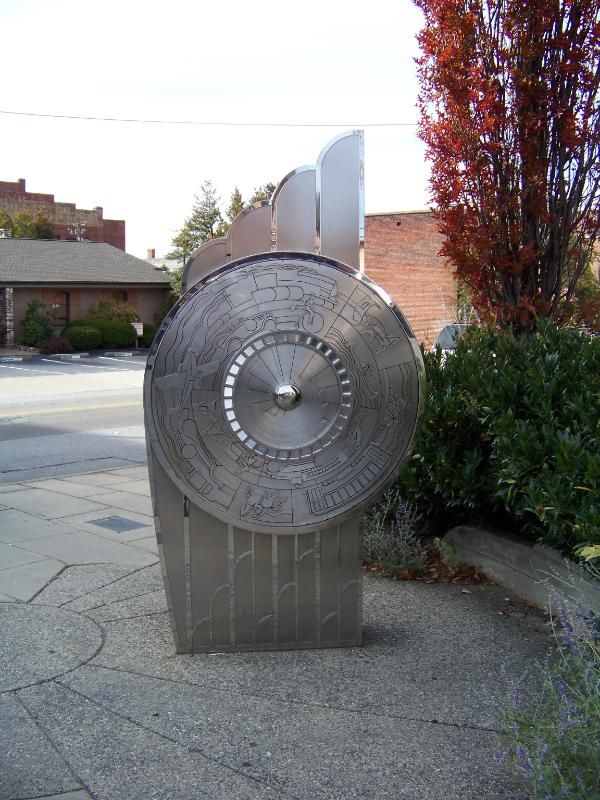
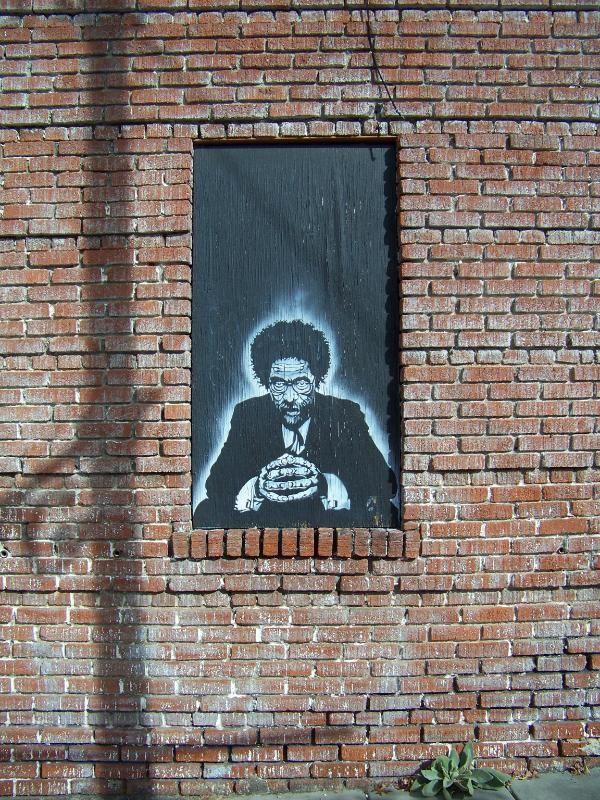
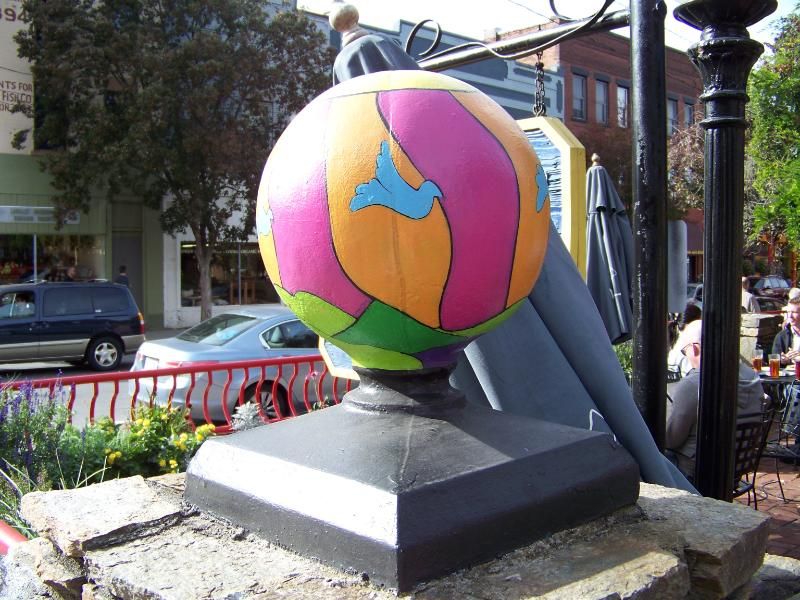
An impromptu concert featuring piano, tuba, and trumpet near the corner of Broadway and Walnut.
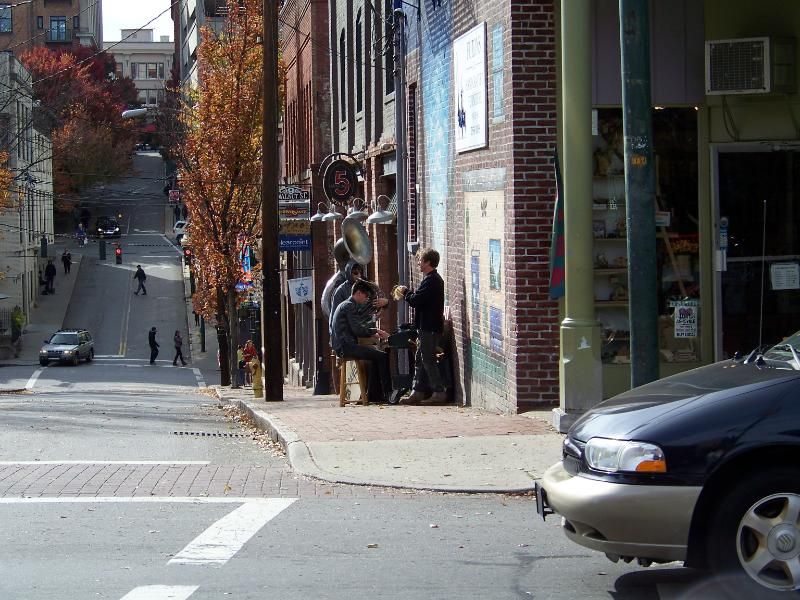
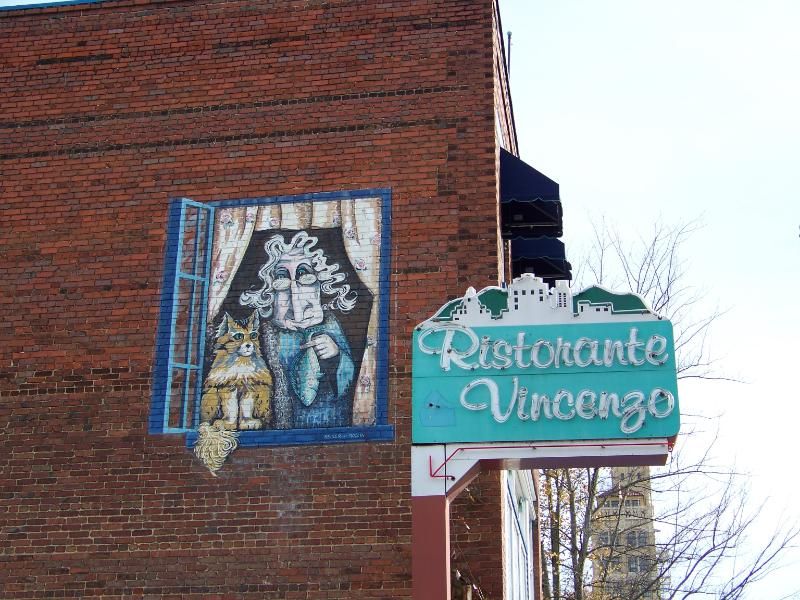
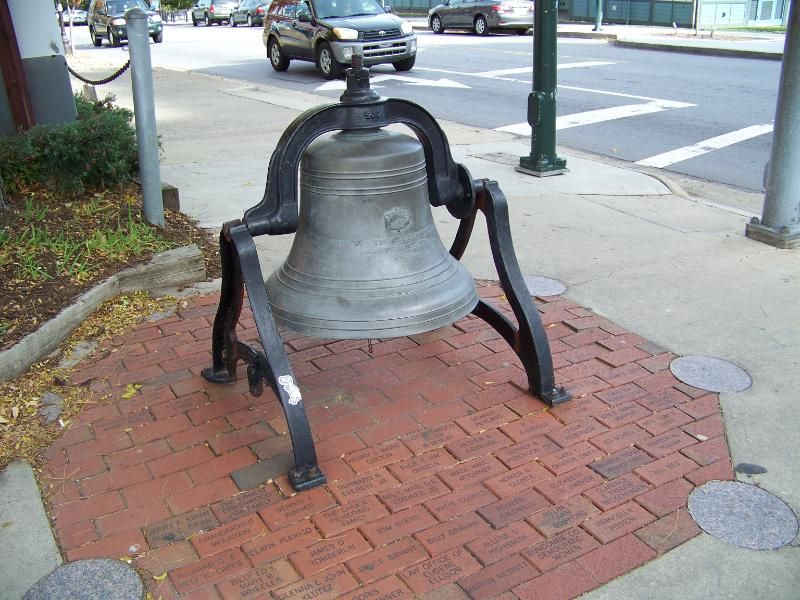
Remember that angel? This is the artwork, called "Continuum" that pissed people off enough to buy it. It stands on a little scrap of lawn in front of a county office building.
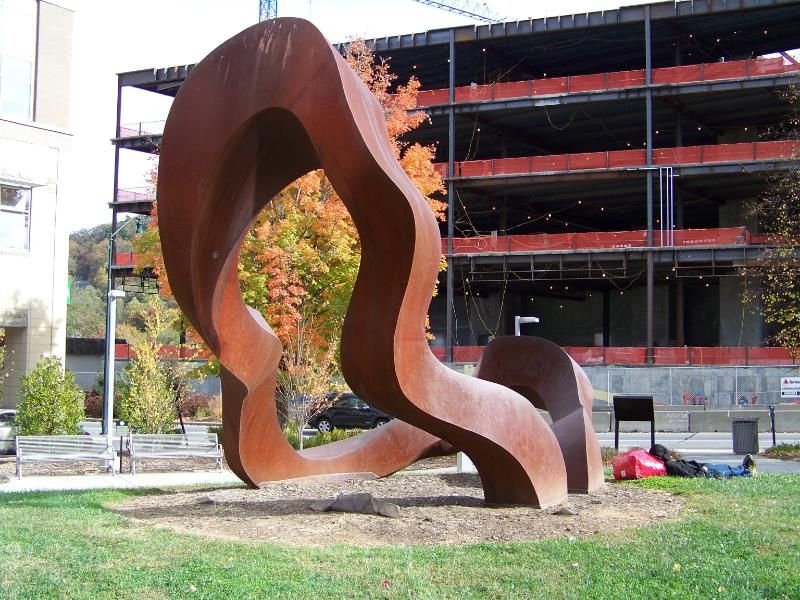
Here's a lovely garden with a depressing purpose...
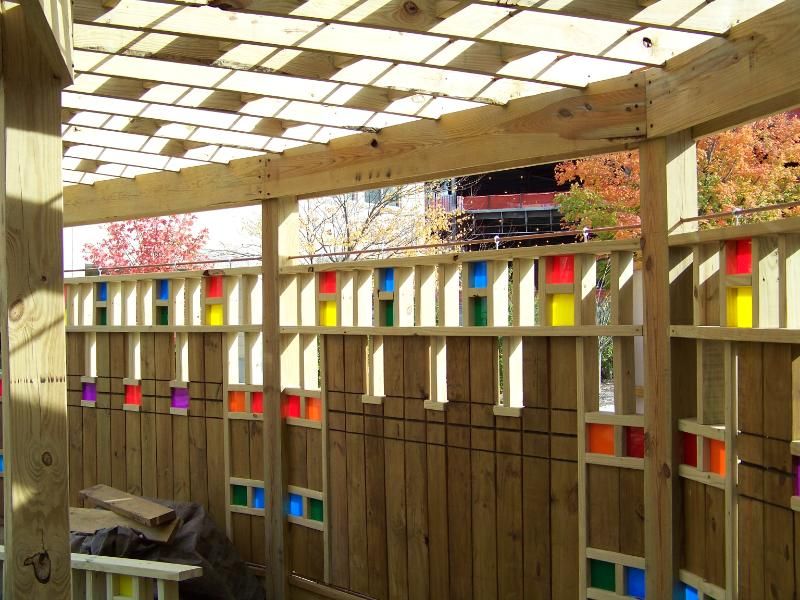


Why is it depressing? This is being built for the Department of Social Services and will serve as a peaceful, pretty place for children to meet with their caseworkers and talk about daddy touching them.
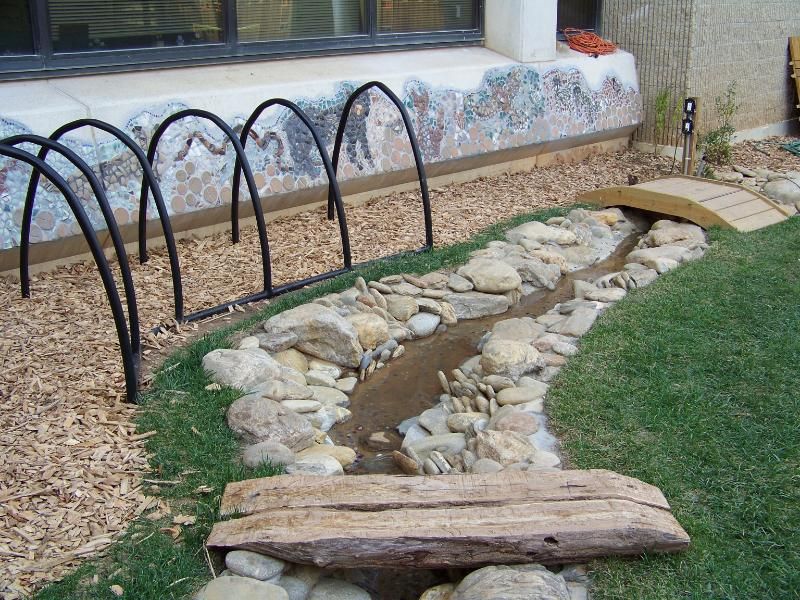
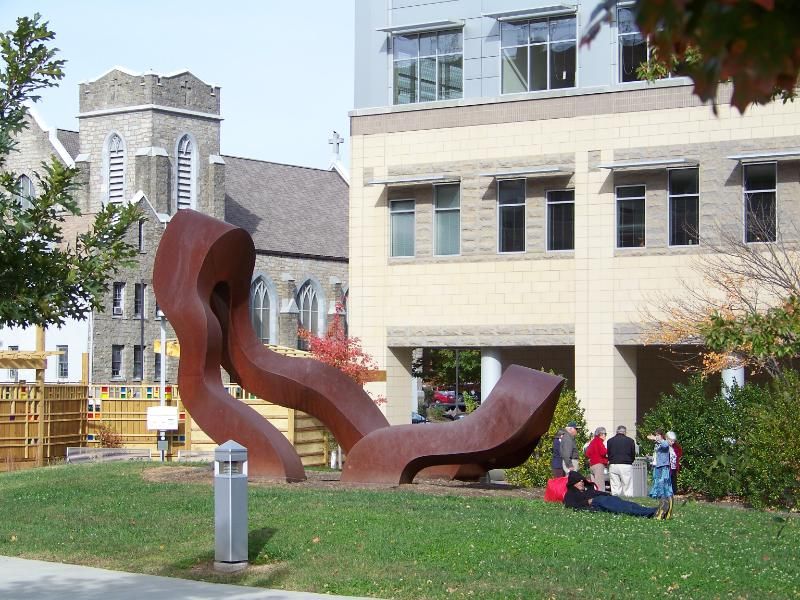
The Confederate memorial, tucked away under a tree beside the courthouse.
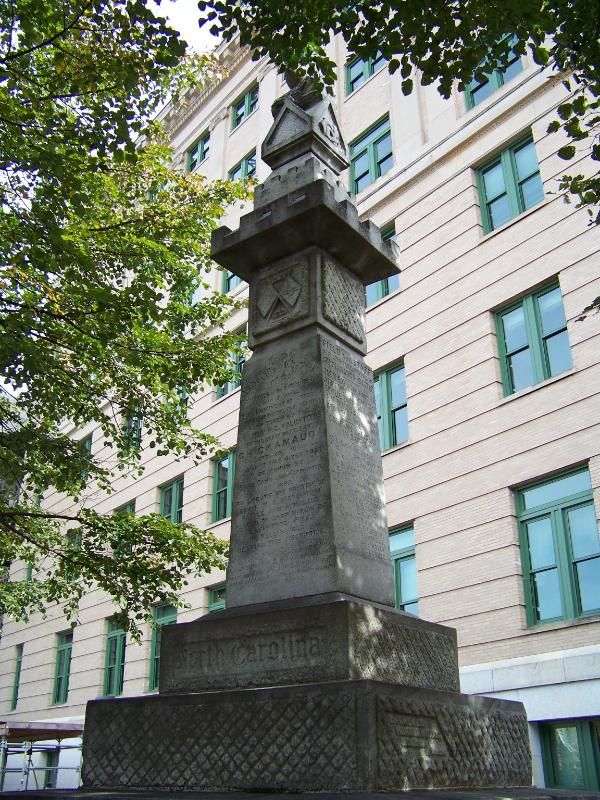
Art decorates the city's central park, including this performance stage that stretches before the courthouse and city hall.
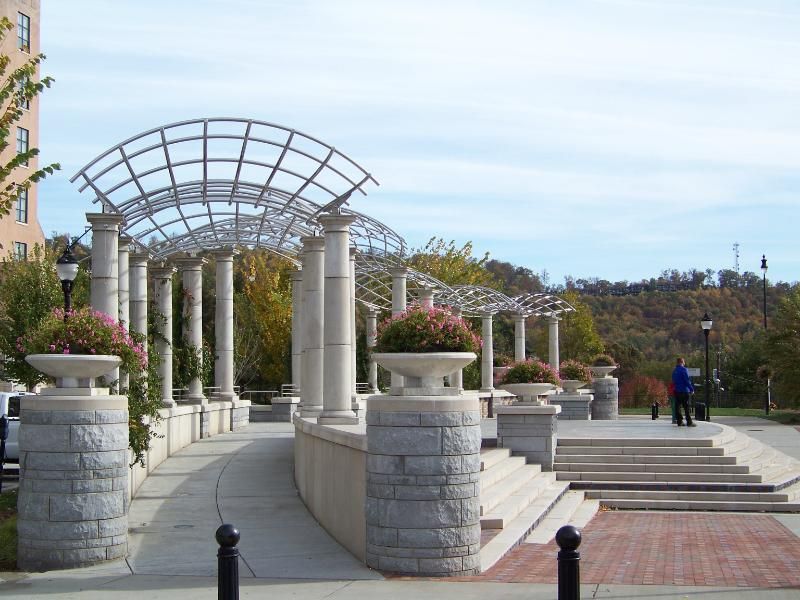
The veterans' memorial.
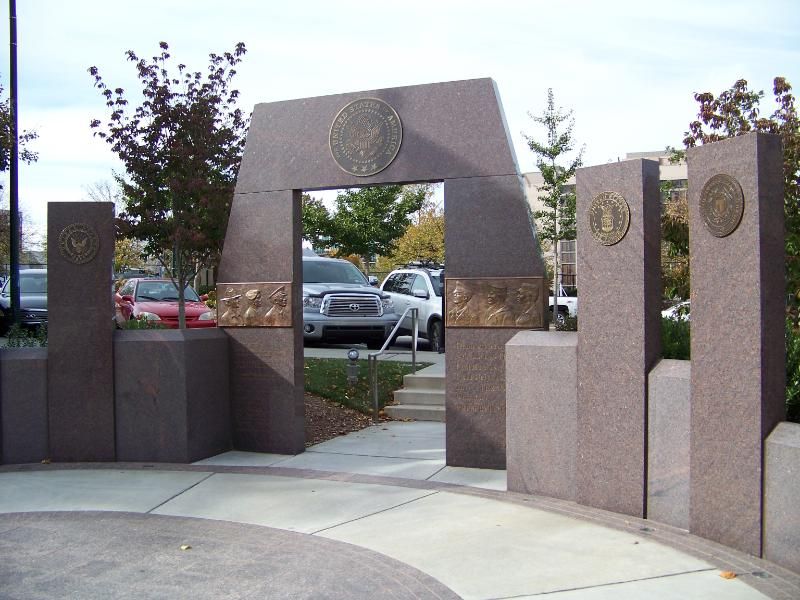
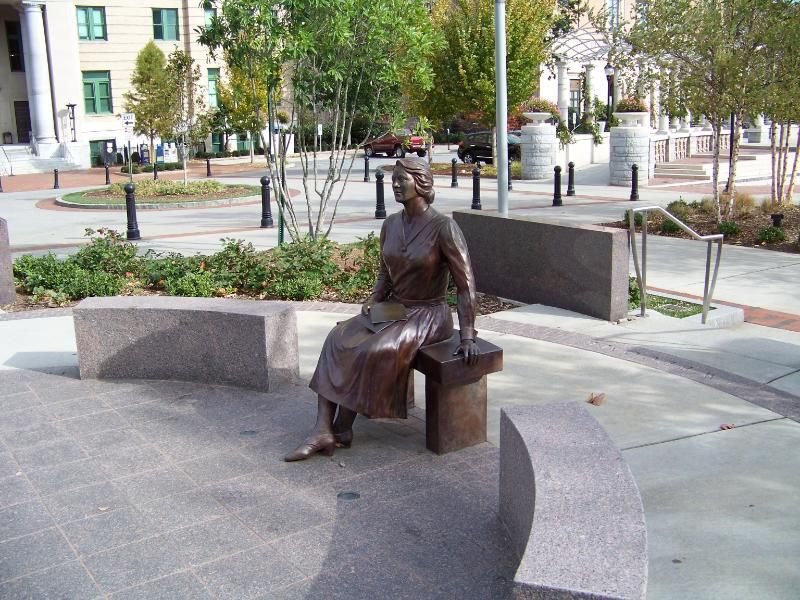
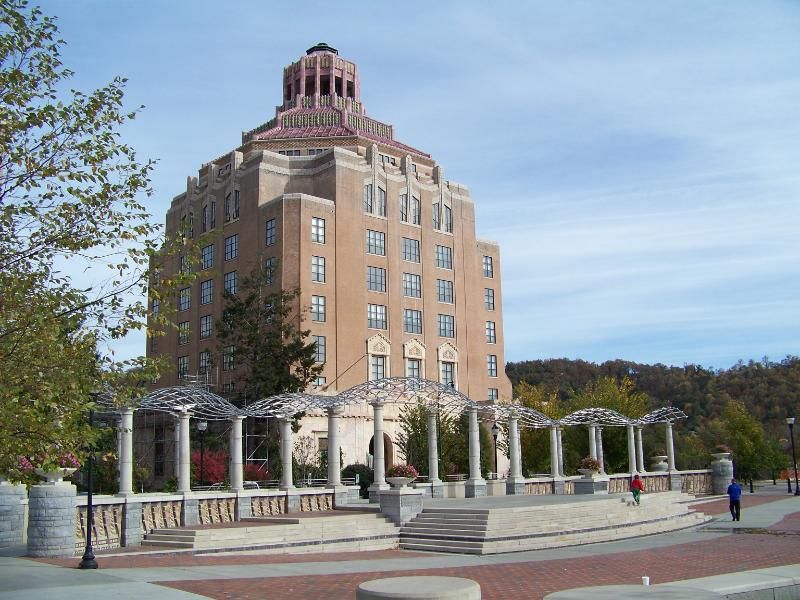
This shows how the city hall and county courthouse were originally supposed to look. When the county got a look at city hall's design, they found it far too daring and hired another firm to design a reserved neoclassical tower instead.
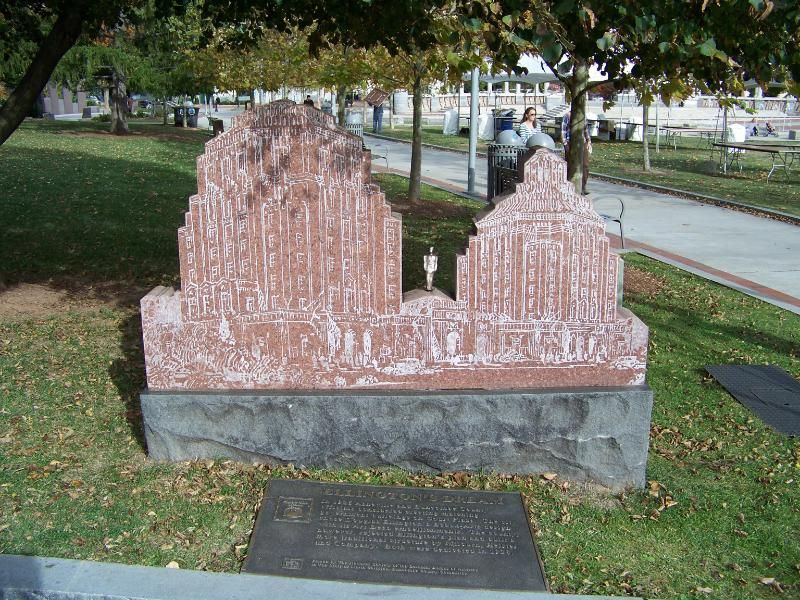
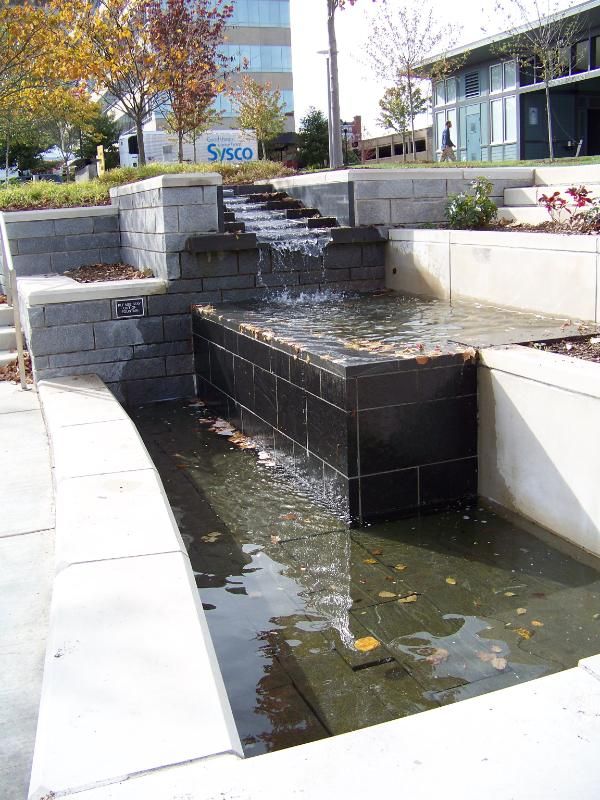

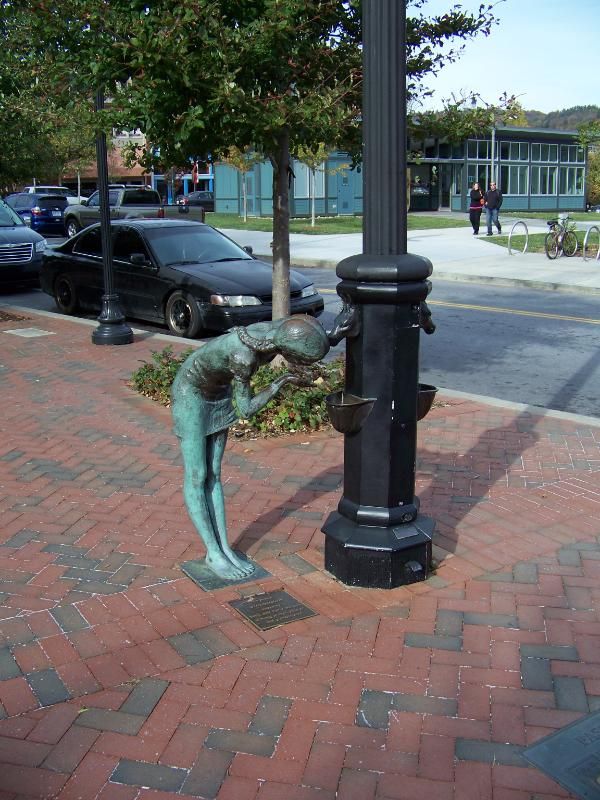
This marks the spot where Thomas Wolfe's father once ran a gravestone shop.
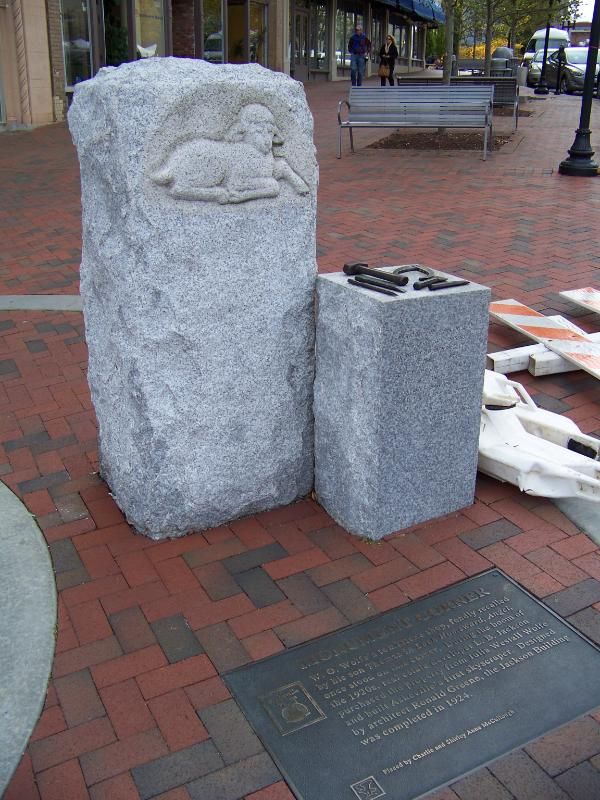

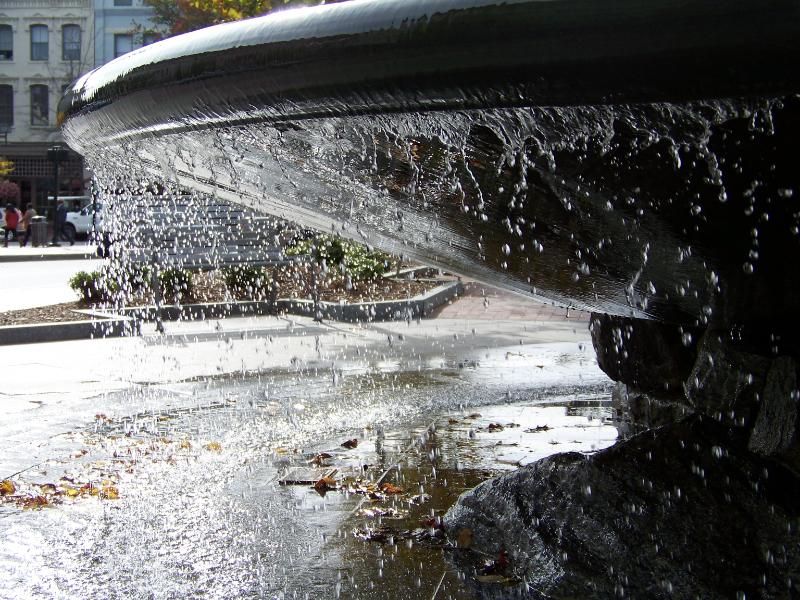
Even more art for sale in Pack Square.
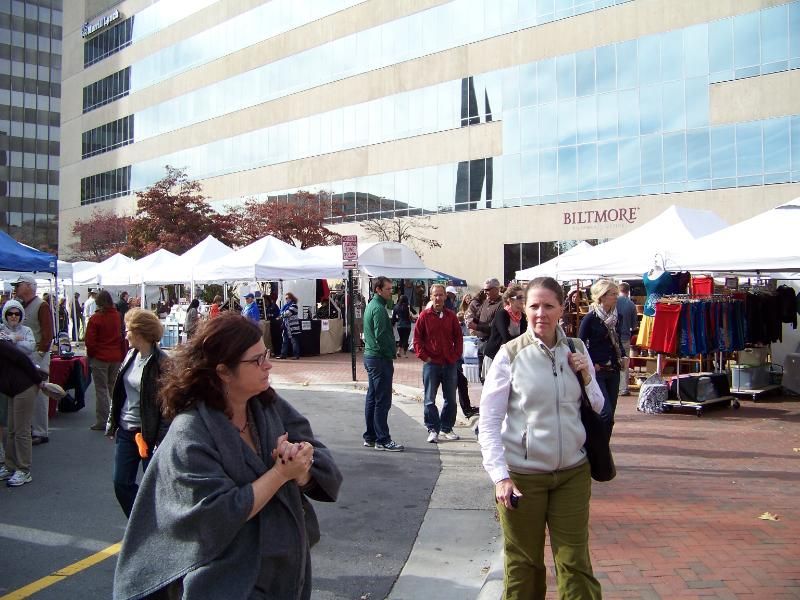
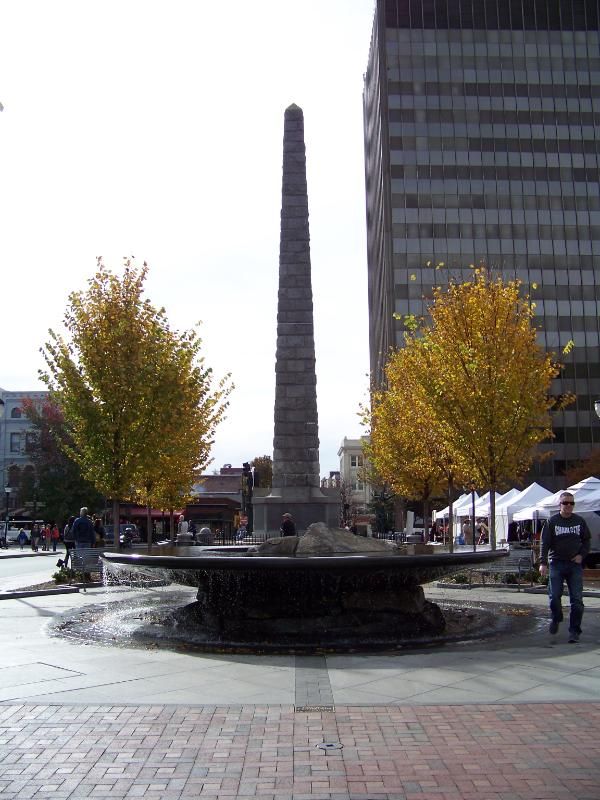
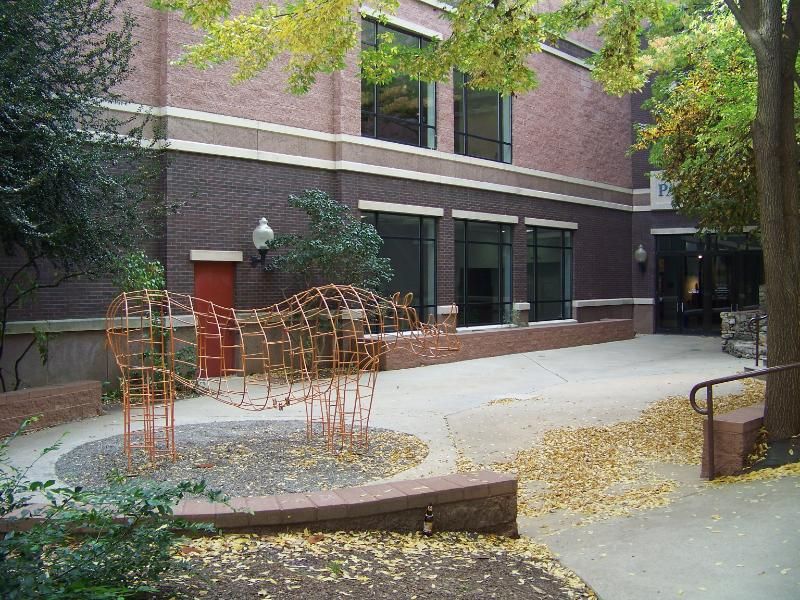
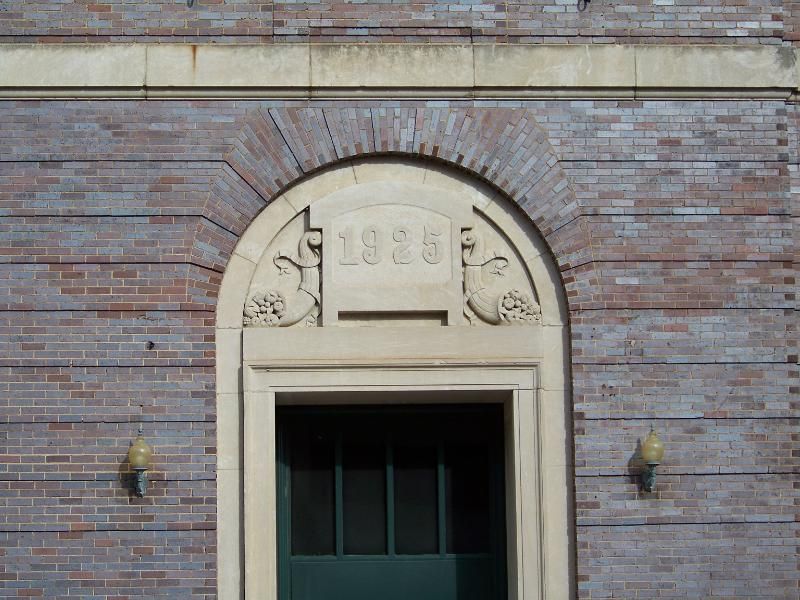
This sculpture honors a downtown neighborhood called The Block, which was once the commercial heart of Asheville's black community. Today, decades after urban renewal devastated the area, The Block is the last part of downtown that still awaits revitalization.
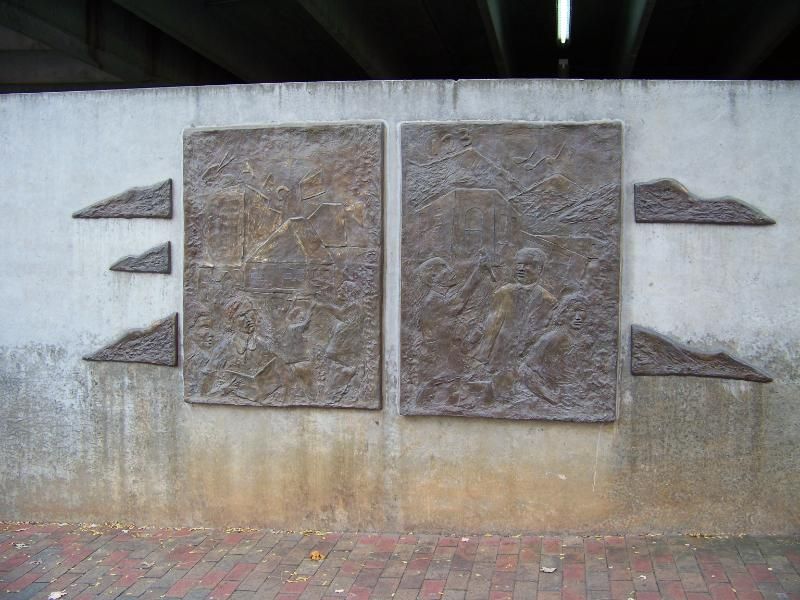
Change is afoot in The Block. This building, for instance, is one of a group that will be refurbished as part of a project that will include new commercial and office space, as well as almost 70 desperately-needed units of affordable housing.
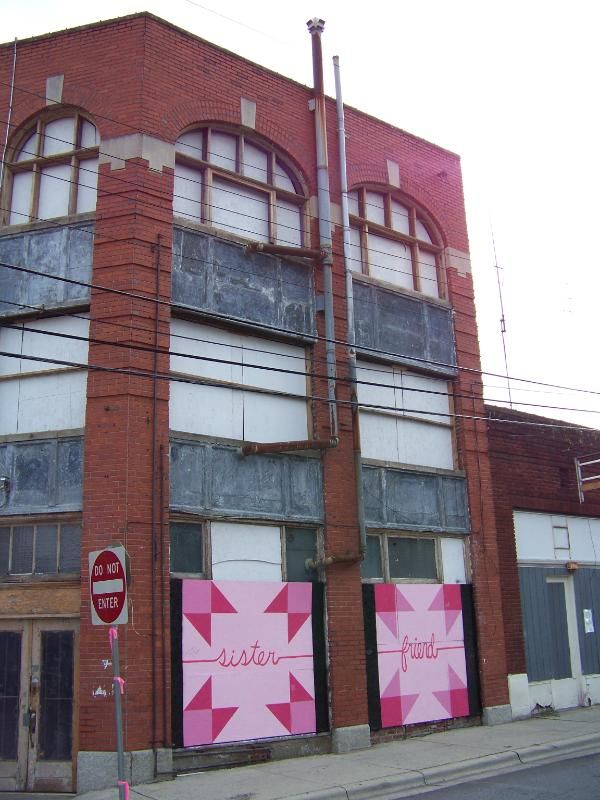
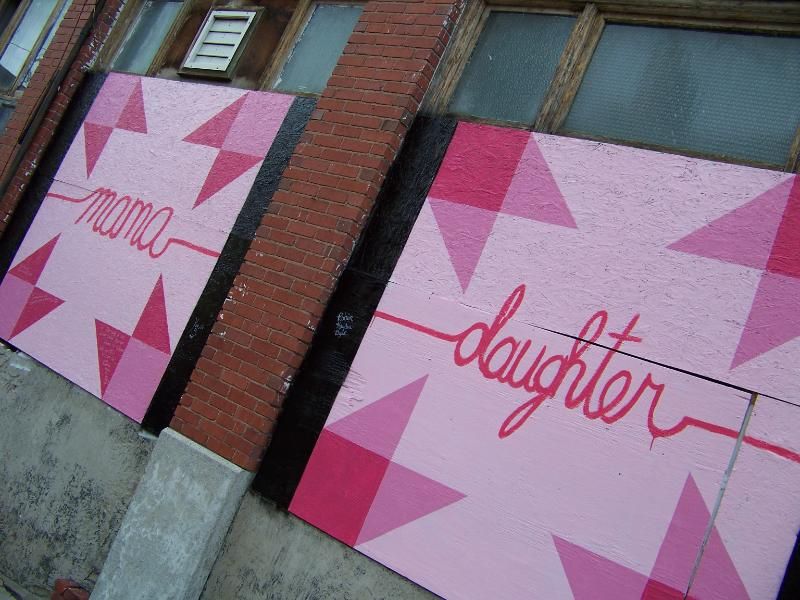
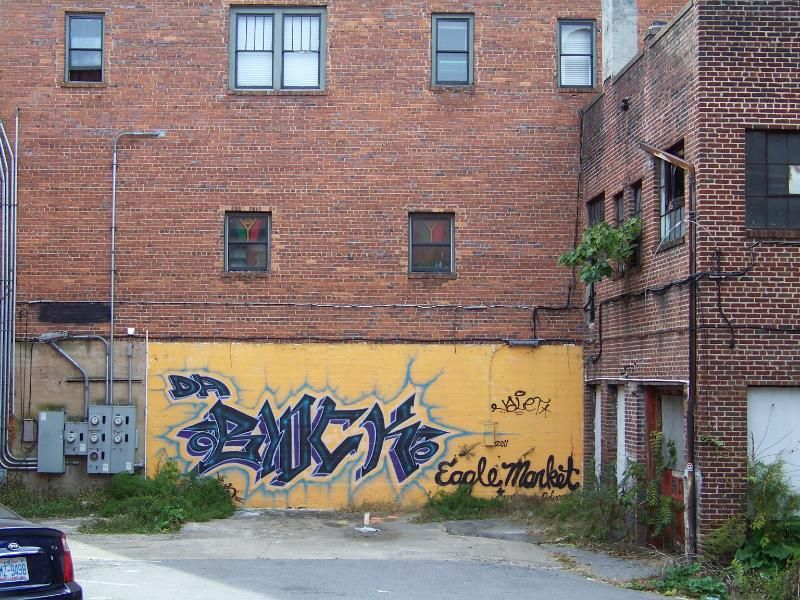
Elsewhere, in a little scrap of green space called Triangle Park, this amazing mural depicts the long and storied history of Asheville African-American community.
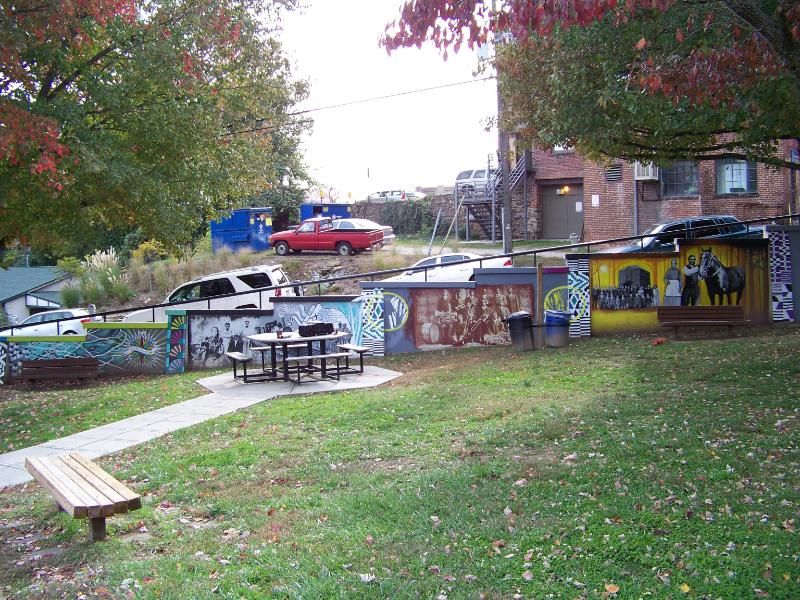
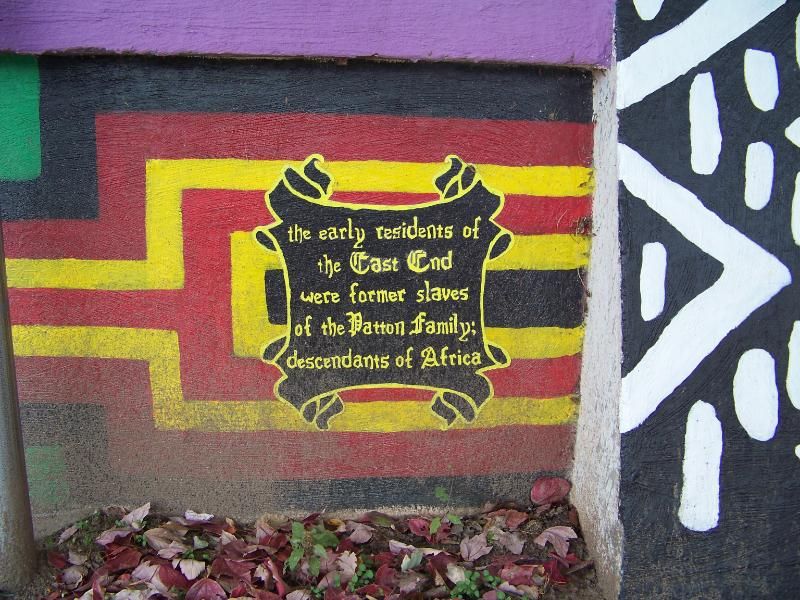
The neighborhood that once supplied The Block with customers was called the East End. Here's how it looked in 1891. It was largely destroyed thanks to urban "renewal" in the 1960's.
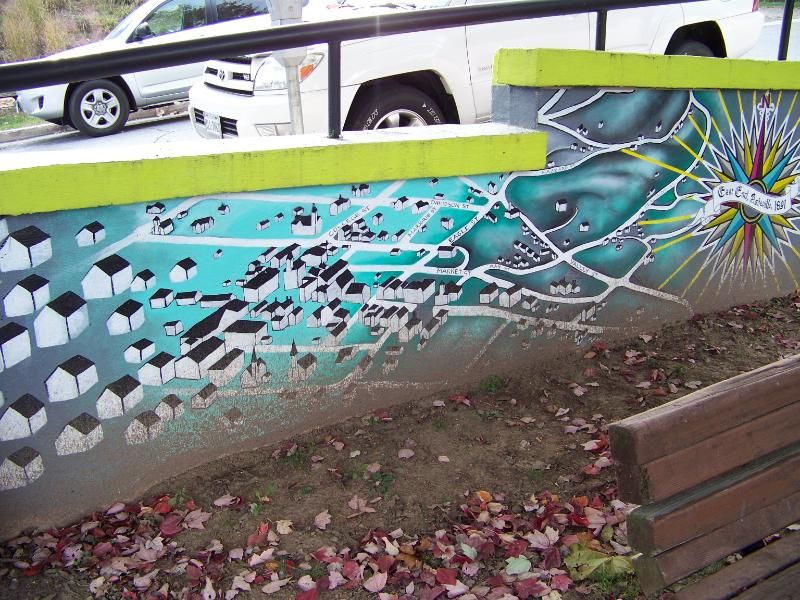
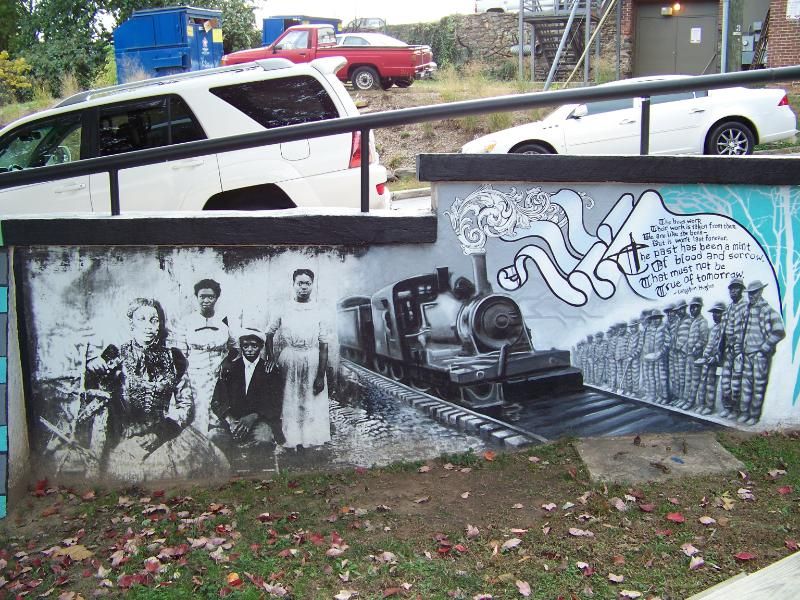
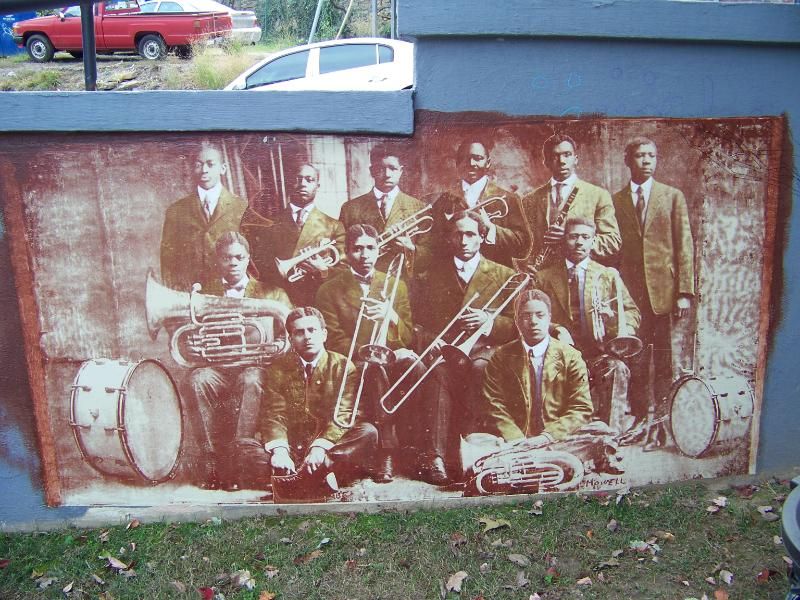
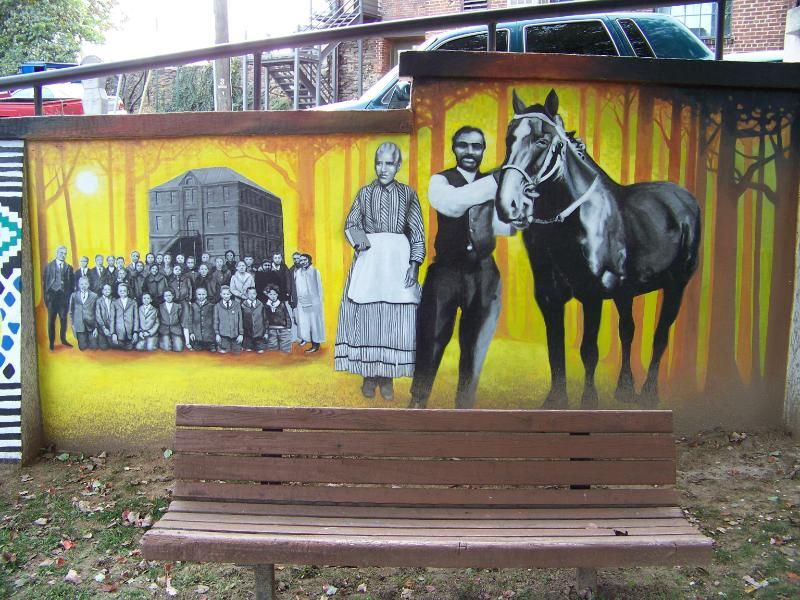
The mural is still a work in progress.
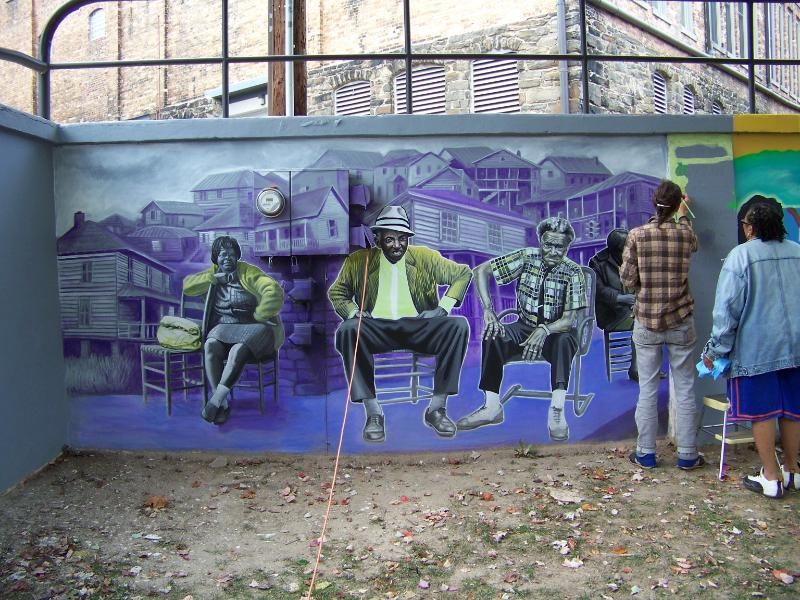
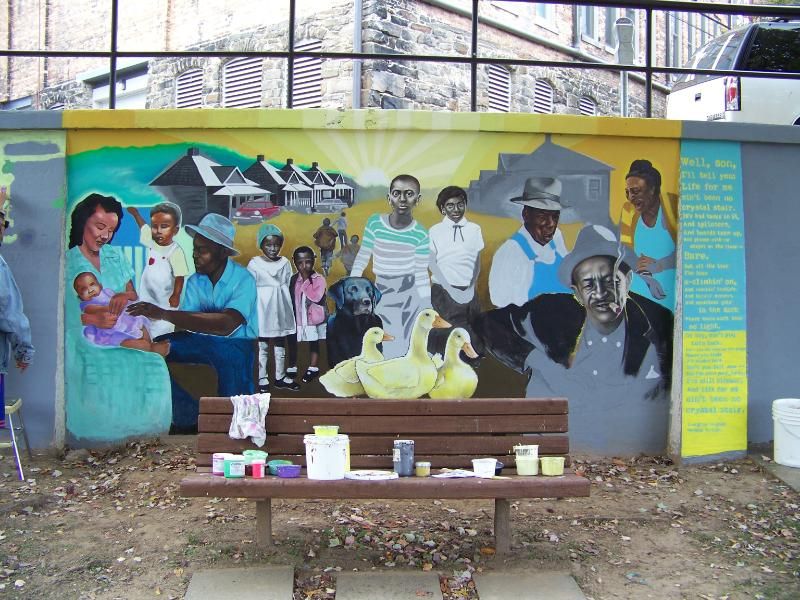

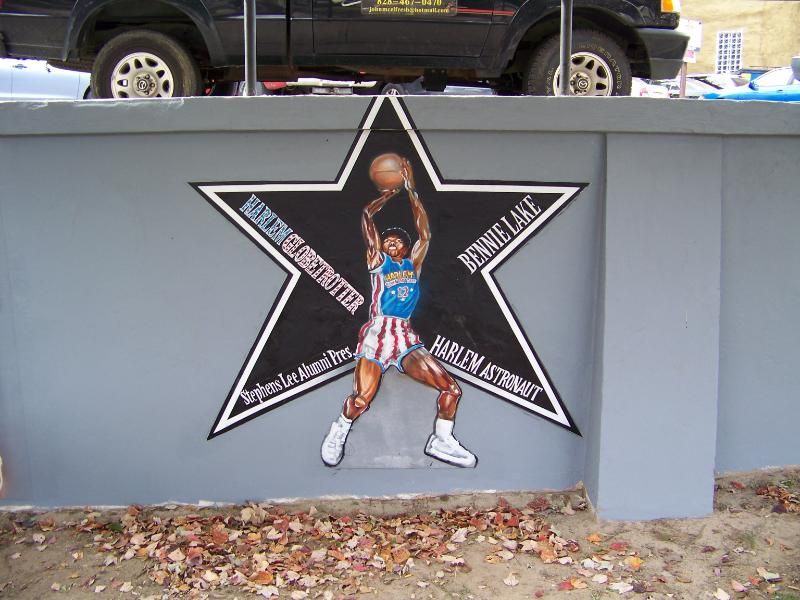
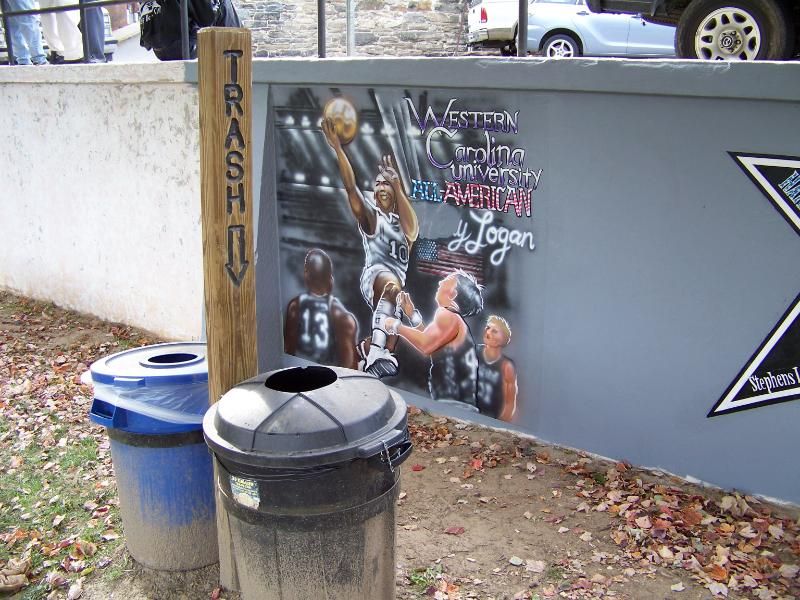

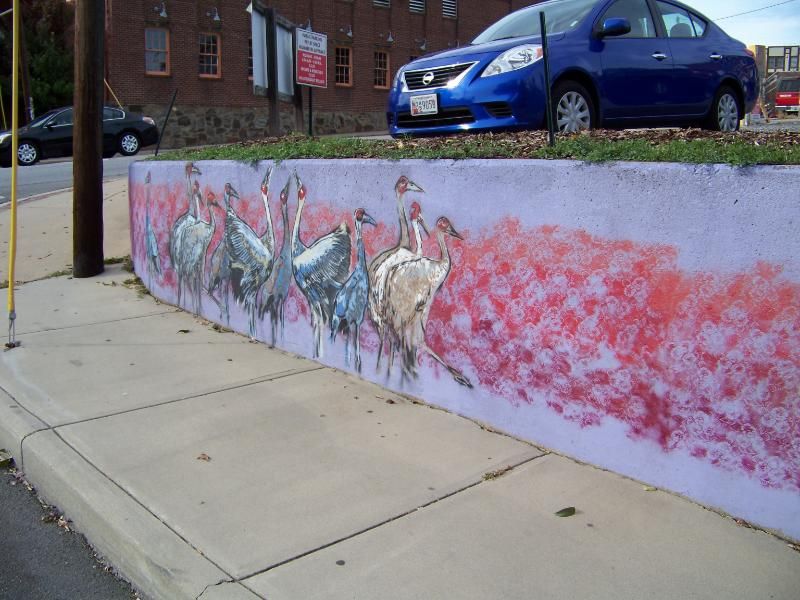
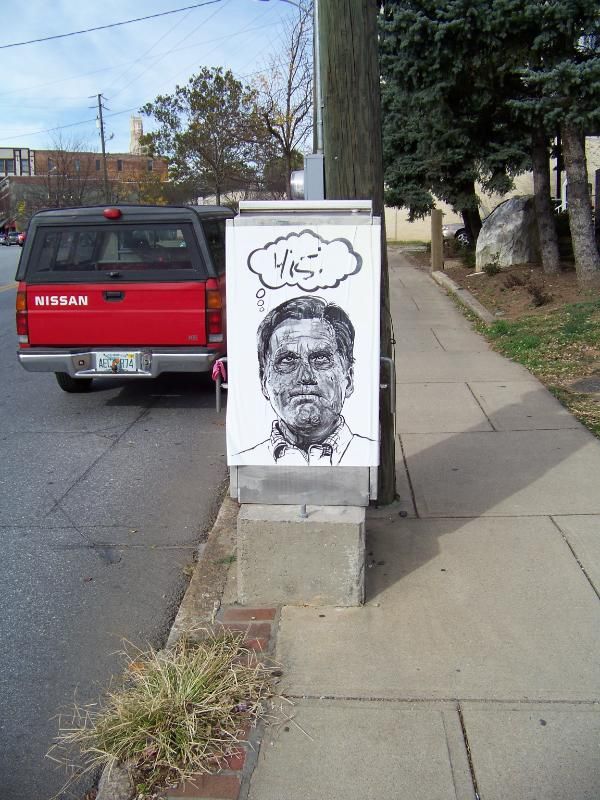
You can sit in the dark and watch art here, if you want to.
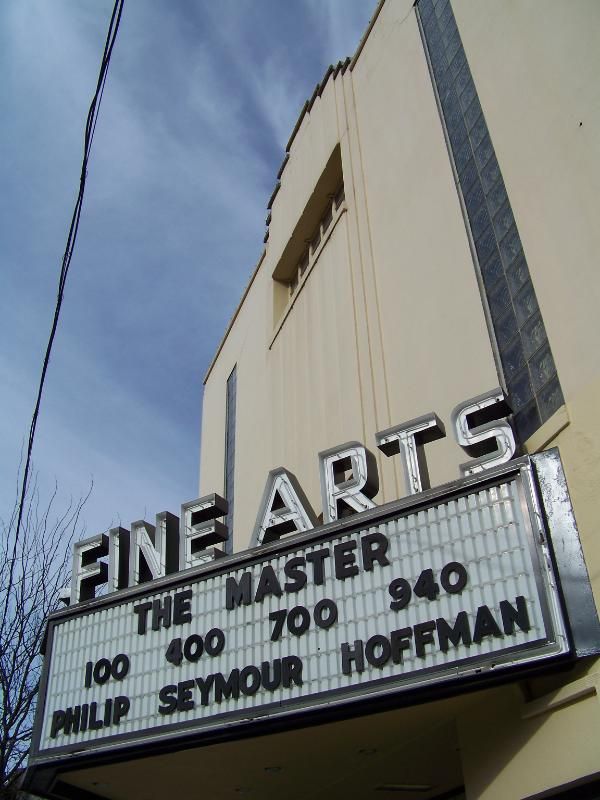
A bronze eagle marks the site of the Eagle Hotel, from which nearby Eagle Street (main street of The Block) takes its name.
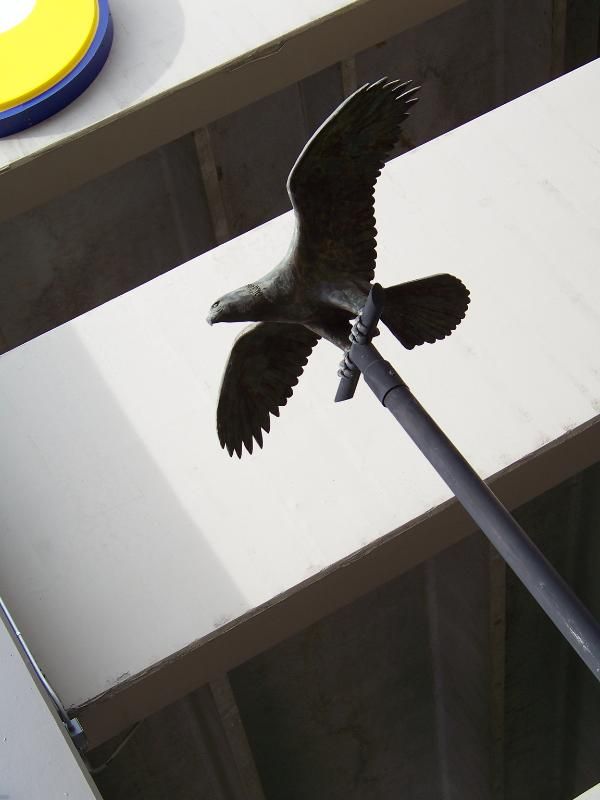
More buskers!
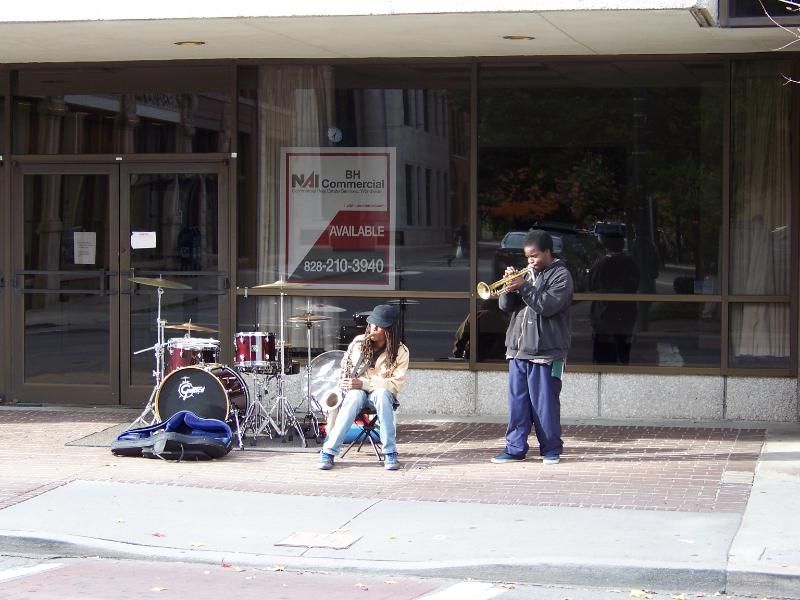
And now a bit of performance art. That is, in fact, a man dressed as a nun riding a tall bike.
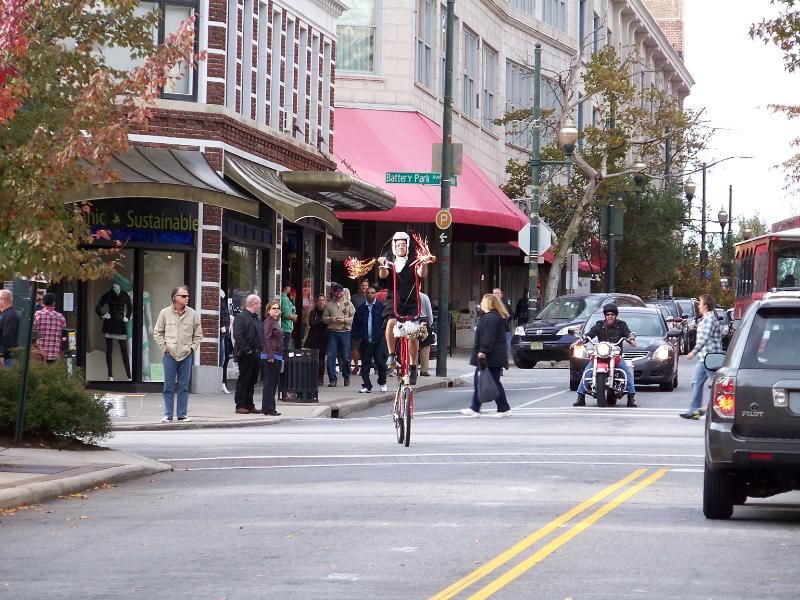
Here he comes...
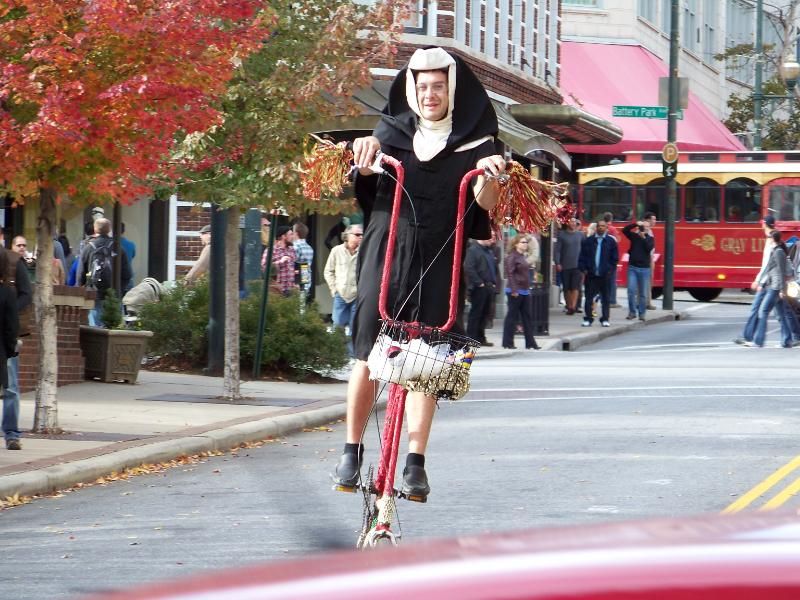
...And there he goes.

Edit: I told you I knew I'd forgotten some art. Here's one of the works I missed. This iron tree, pictured a few years ago, stands outside the Federal Building.
